

WATER | SEWER | ELECTRICITY | GAS | NBN www.utilitymagazine.com.au Issue #3, August 2014
Engineering, Construction & Maintenance

Nobody knows the importance of combining design innovation, high quality and value quite like the world‘s largest furniture retailer… which is why it awarded Canadian Solar to install 3.6MW solar capacity on its facilities in Australia. Canadian Solar is one of the world‘s largest and foremost solar power companies providing its
customers with high-quality products and total turn-key solar solutions that reduce complexities and installation cost. The seven solar projects will achieve the highest energy production values with considerable savings on electricity costs whilst contributing to energy independence and sustainability goals.
COMMERCIAL
Canadian Solar (Australia) Pty Ltd . 165 Cremorne Street . Richmond, VIC 3121 . Phone: 03 8609 1844
for you at www.canadiansolar.com/au
WE ARE BUILDING THE LARGEST
PV PROJECT IN AUSTRALIA
Contact Canadian Solar to discover a solution that works
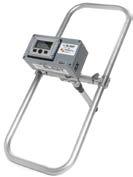


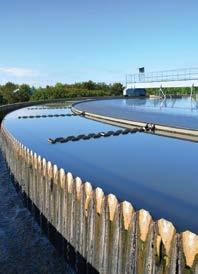

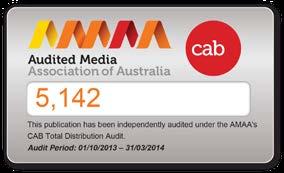
Welcome to the third edition of Utility, the fastest growing magazine servicing the Australian utility sector. The response to the magazine continues to overwhelm us; and motivate us to continue bringing you content on the news, projects and issues that matter most to you.
As we move into the second half of the year, we move closer to what is traditionally a busy period for conferences across the utility sector, with events including WIOA in Bendigo from 3-4 September, Stormwater 2014 in Adelaide from 13-17 October, InterWater and All Energy Australia in Melbourne from 15-16 October, and APIA in Melbourne 18-21 October all sure to attract participants from the various sectors this magazine covers. I look forward to catching up with as many of our readers, contributors and advertisers as possible at these upcoming events.
Utility will of course be distributed at these events, so we’ve focused on delivering content in this edition that ties in with these areas of interest. We spoke to WIOA Chairman Jim Martin about his first year in the job; and we also feature a thought-provoking article from the Stormwater Industry Association regarding our management of urban run-off.
With the AEMO recently releasing a report forecasting a long-term downward trend in the use of electricity – with the
increasing use of renewables part of the cause for this – we’ve also opted to look at some of the large scale renewable energy projects that are happening across Australia, and the potential impacts these can have on the National Electricity Market.
Finally, I’m pleased to let you all know that since the last edition of Utility, we’ve recorded another milestone in the development of this magazine, with our first round of audit figures released by the Audited Media Association of Australia.
It has now been verified that Utility is directly mailed to 5,142 subscribers. Having this verification from the publishing industry’s independent auditing body is very important to me personally, as it assures our readers, contributors and advertisers that this magazine is being read by the people we say it is.
It’s a topic I feel strongly about; and I encourage our readers, contributors and advertisers to consider the magazines they work with – and be aware that being audited by the Audited Media Association of Australia is a basic benchmark any reputable magazine should have.
Chris Bland Publisher and Editor FROM THE EDITOR welcome August 2014 Monkey Media Enterprises ABN: 36 426 734 954 GPO Box 93, Melbourne VIC 3001 P: (03) 9440 5721 F: (03) 8456 6720 monkeymedia.com.au info@monkeymedia.com.au utilitymagazine.com.au info@utilitymagazine.com.au ISSN: 2203-2797 ISSUE 3 Published by Engineering, Construction & Maintenance WATER SEWER ELECTRICITY GAS NBN www.utilitymagazine.com.au Issue #3, August 2014 UTILITY MAGAZINE AUGUST 2014 PLUGGING IN TO RENEWABLES A NEW STANDARD ASSET MANAGEMENT WASTEWATER UNDER PRESSURE OF THE LOST TRIBAL WISDOM SCADA IN SL-RAT Demonstration NSW 2015 W austeck.com E info@austeck.com 835 mins TRANSMITTER RECEIVER BLOCKAGE Publisher and Editor Chris Bland Managing Editor Laura Harvey Editorial Assistant Michelle Goldsmith Marketing Consultant Cynthia Lim Design Sandy Noke 1
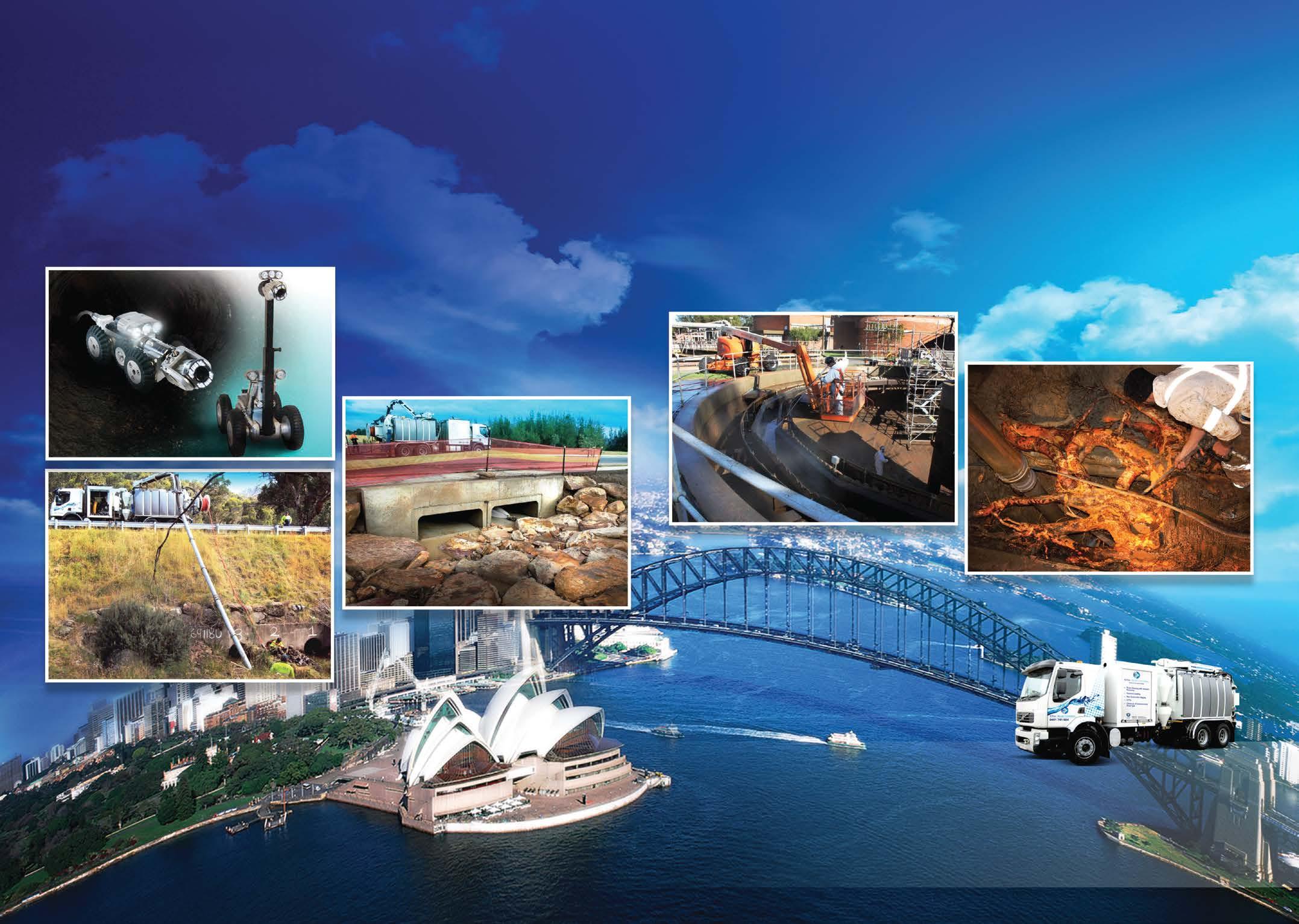

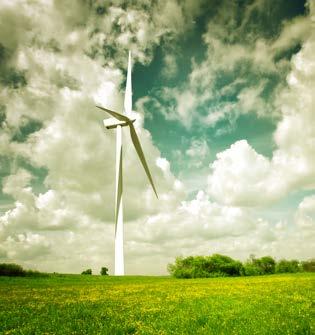



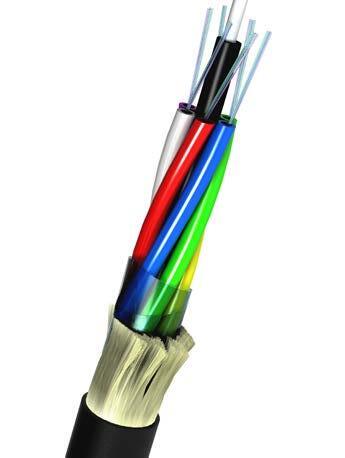
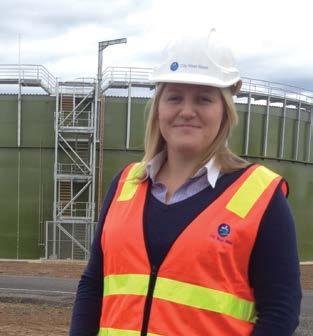
4 CONTENTS 14 25 34 67 74 72 RENEWABLES Plugging in to wind ...................... 14 The Australian Energy Market Operator has been investigating the potential to integrate excess energy generated by wind turbines around Australia into the National Electricity Market. The power of the grid 18 Challenges in grid integration .... 22 SCADA Relearning the lost tribal wisdom of SCADA 26 By Andrew West. Improved connection, increased capability ..................... 30 Secrets of good communication ............................ 32 ASSET MANAGEMENT A new standard in asset management 34 By Danielle Roche. Evolving imagery delivers real solutions................................ 38 Failure prediction of critical pipes and pipe leak management ................................ 42 PIPE AND CONDUIT Plastic pipe connects Australia ....................................... 67 JULIA JOHNS Project Engineer, City West Water ............................ 72 NBN Fibre and copper: connecting end users to the NBN ................. 74
IN UTILITIES
WOMEN


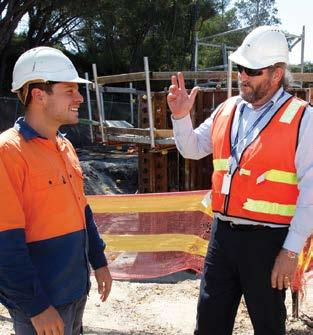

August 2014 ISSUE 3 5 46 48 57 WASTEWATER Jim Martin: water reform expert rewires 57 Bringing pressure sewer to small communities ...................... 60 Pressure sewer innovation 62 PIPE RELINING Sewage spill prevention strategies ...................................... 46 Innovation in gas pipeline rehabilitation ................................ 64 BILLING Customers see benefits of better data 48 The metering menu ..................... 50 CitiPower and Powercor 52 Cables connect increased capacity ...................... 54 In each issue Editor’s welcome .................................................. 1 A word from the ENA .......................................... 6 News briefs ........................................................... 8 Advertisers’ index .............................................. 80 Editorial schedule .............................................. 80 Utility magazine is bringing together experts on various fields to answer all your questions UTILITY IN PROFILE 78 52 70 STORMWATER Making linkages that matter ........ 70
A WORD FROM THE ENA
JOHN BRADLEY
CHIEF EXECUTIVE OFFICER – ENERGY NETWORKS ASSOCIATION
Australia’s energy sector is frequently described as being in a state of ‘transformation’ – a fact again highlighted by recent Australian Energy Market Operator forecasts that electricity use will decline by 1.1 per cent over the next three years.
Consumption trends and a rooftop solar PV market with an average annual growth rate of 24 per cent have brought significant change with the potential for more change to come – as consumers increase their use of embedded generation technologies and consider new options in battery storage, electric vehicles and demand side participation.
With this transformation in mind, current and future energy consumers have a central interest in a policy debate which will play out during 2014. The Australian Energy Market Commission is now consulting on a rule change proposal to expand competition in metering and related services. While the development of the electricity metering framework may sound like a dry topic, it could be the difference between ensuring our electricity system evolves, rather than spirals.
Advanced Metering Infrastructure, or Smart Meters, are a gateway to the long-term sustainability of the electricity system. As technology and energy markets develop rapidly, smart meters will benefit individual customers by providing practical information about energy use, permitting more efficient and rewarding tariff structures; and enabling participation in new markets, such as exporting energy to the grid through solar panels.
Importantly however, smart meters also provide a simple way to achieve benefits to all customers when used by network businesses as part of strategies to reduce or defer capital and operating expenditure through improved network planning, control and management. The whole of system benefits to consumers include improved
safety, greater access to power quality and outage information to reduce customer time off-supply, and improved outcomes for reliability performance.
Recent decisions by Energy Ministers to provide consumers with choice about their metering provider are welcomebut it is vital that the new framework also ensures networks can also employ and rollout these devices to provide benefits to all customers through more efficient and effective network operations.
The 2011 study of Victorian Advanced Meter Infrastructure found that the benefits derived from efficiencies in network operations was $733 million, or approximately 29 per cent of the total benefits – the largest category of smart meter benefits after avoided replacement and meter reading costs.
A new report commissioned by the Energy Networks Association on the potential benefits of smart metering infrastructure suggests that there may be a wider range of potential benefits from smart meters being realised since earlier studies were done.
The Energeia study submitted to the AEMC by the ENA highlights a number of previously unidentified additional benefits which may be achieved through advanced metering to the benefit of consumers.
Not all benefits will be achieved in all circumstances and each investment

will require its own business case, but the Energeia analysis highlights how network customers will be disadvantaged if the new metering framework stifles network access to smart meter services or does not fix antiquated rules preventing some networks from using smart meters today.
Energeia concludes in its Review of the Potential Network Benefits of Smart Metering that:
• The potential network benefits have been greater than initially anticipated in the original Victorian and national costbenefit assessments;
• Energeia’s indicative estimate is that the network derived benefits may be up to three times higher per annum than estimated by the most recent Victorian review in 2011;
• Benefits will vary significantly due to circumstances, and so it is critical that the metering framework fosters innovative applications of smart meters and the economic realisation of benefits as they emerge.
Importantly, it finds that as the penetration of smart meters in an area increases, the benefits to consumers also increases.
6
Illustration of Benefits Realisation by Smart Meter Penetration 100% 90% 80% 70% 60% 50% 40% 30% 20% 10% 0% 10% 20% 30% 40% 50% 60% 70% 80% 90% 100% Smart Metering Penetration Capacity Power quality Reliability Potential Benefits per Year per Customer Continued on page 8
BOOST YOUR PRODUCTIVITY AND REDUCE RISK WITH THE LEADER IN UTILITY INSTALLATION SOLUTIONS

Available in a wide range of trailer and truck-mounted configurations to meet the needs of every operator.
When you need to meet the increasingly common requirement for non-destructive digging on your job sites it makes sense to choose Australia’s most trusted brand. vermeer.com.au/vacuum-excavators

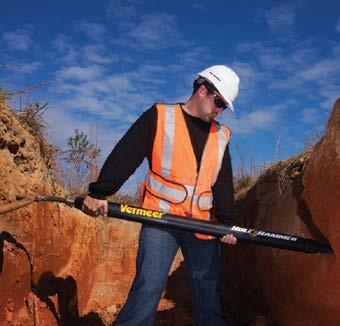
Put the penetrating power of a proven, simple and reliable mole design to work—just add compressed air.
Vermeer piercing tools have been the mole of choice for over 20 year for a range of short-run installations, including electrical, fibre and telecom installations. vermeer.com.au/piercing-tools

Take the backache out of trench digging with the utility trencher range that has the power, capabilities and durability needed on Australian jobsites.
Our range of tracked and wheeled pedestrian and ride-on trenchers have every utility installation scenario covered. vermeer.com.au/pedestrian-trenchers
Vermeer and the Vermeer logo are trademarks of Vermeer Manufacturing Company in the United States and / or other countries. © 2014 Vermeer Corporation. All Rights Reserved. WWW.VERMEER.COM.AU 1800 444 394
us at www.vermeer.com.au or free call 1800 620 720 for more information and to arrange an on-site demonstration. See for yourself how Vermeer’s range of utility installation products, backed by our Australia-wide dealership network, an make a positive impact on your productivity and profit.
UTILITY
Visit
VACUUM EXCAVATORS HOLE HAMMERTM PIERCING TOOLS
TRENCHERS

SELECT SOLUTIONS RECOGNISED AS ‘BEST EMPLOYER’
Utility and infrastructure service provider Select Solutions has been commended as a ‘Best Employer for 2014’ by global human resources company, Aon Hewitt. Select Solutions received the prestigious award with 15 other companies, chosen from 120 entries across Australia and New Zealand, for its positive employee engagement results, commitment to safety and employee communications.
ABOUT US
Edge Underground is a precision microtunnelling contractor that operates in Australia and the USA. With a focus on innovative technology and expertise, Edge Underground designs and enhances the performance of trenchless equipment.
OUR SERVICES
• Microtunnelling
• Pipe Jacking
• Thrust Boring
• Laser Tunnel Boring GUIDED BORING SPECIALISTS
Find out more about keyhole pipeline installation www.keyholepipeline.com.au
Select Solutions General Manager, John Kelso, was delighted with the recognition and the strong growth of the business since inception. “Since our establishment in 2009, Select Solutions has grown from 300 to nearly 900 employees who provide services to the utility and infrastructure sectors across Australia, and this recognition is a proud moment in what has been a monumental year for the company,” Mr Kelso said. “Select Solutions has been recognised as having outstanding employee engagement scores and delivering excellence in people management practices.
“Importantly, safety was our highest employee engagement driver, scoring 94 per cent, which is critical in the industries we service,” he said.
Continued from page 6
ENA supports a contestable metering framework which delivers real benefits to consumers, by providing individual customers with choice, but also allowing all customers to benefit from more efficient network management services.
The current policy proposes to create a gatekeeper of metering services, the Metering Coordinator (MC). While a customer would have the choice to appoint its own MC – for most people appointing an MC is something done when planning a 21st birthday party, so they are more likely to accept their retailer’s choice. The problem for all consumers is that the new MC would be able to charge the network business for smart metering services as an unregulated monopoly. That risks higher costs to all network customers. A policy framework so unbalanced may provide a real barrier to parties reaching agreements which underwrite significant investment in smart meters.
The need for transformation in Australia’s energy sector is urgent – approximately 70 per cent of Australia’s small customers still have their consumption read on accumulation basis and they are stuck with out-dated tariffs that do not reward cost-saving behaviour.
As the winds of change sweep the Australian energy sector, consumers can ill afford a delayed take-up of smart meters because we ‘didn’t get the rules right’.
* stuart@edgeunderground.co
( 0458 000 009
8
www.edgeunderground.co
KEY APPOINTMENTS AT MONKEY MEDIA
Two recent appointments at Monkey Media have boosted the company’s ability to provide niche marketing solutions to those in the utility sector.
Laura Harvey joins the team as Utility magazine’s Managing Editor. Laura has more than ten years of experience as a journalist and editor in the infrastructure and energy industries.
“When Utility launched I was incredibly impressed with its concept, design and content. I’m delighted to now be a part of the team and look forward to working with our industry stakeholders to continue to grow the magazine and its standing across our key utility sectors,” said Laura.
Laura joins Cynthia Lim, who is working with Monkey Media as a Marketing Consultant, drawing upon her years of experience in the water and wastewater industries to develop bespoke marketing solutions to meet the industry’s needs. Cynthia’s previous roles include Operations Manager of the Water Industry Operators Association of Australia, and Technical Sales Representative for ATMR.
Monkey Media Managing Director Chris Bland is thrilled with the new additions to the team. “Laura and Cynthia are integral to the growth of Monkey Media. Having worked with both Laura and Cynthia in various roles over the past ten years,
Relationships | Expertise | Solutions

I’m excited to bring this team together at Monkey Media to continue to produce the highest quality magazines and innovative marketing solutions for our clients,” said Chris.
“Together we have 30+ years of infrastructure and utility marketing experience to offer, and we look forward to sharing our expertise with our clients in the months and years to come.”

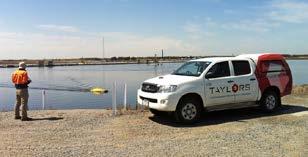
Environmental Consulting Solutions Hydrographic Technology
Our Infrastructure team remain at the cutting edge of solutions driven technology with the use of remote sensing boat technology to deliver hydrographic mapping.
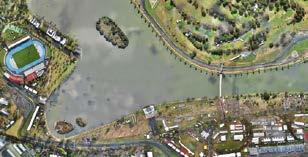
Aerial Survey Solutions
Unmanned Aerial Vehicle (UAV) Mapping
We complement our traditional surveying services with aerial surveying using UAVs, delivering orthorectified imagery and digital elevation models in all common CAD and GIS formats.
Cutting Edge Technology
Vehicle Mounted LIDAR
This solution overcomes the challenges of mapping linear features to a high level of accuracy and is being used with great success as part of our service delivery on the NBN project.

Rapid Response Services
Terrestrial Scanning
Terrestrial scanning is our preferred method of survey for projects requiring a high level of accuracy. We can assist you with extracting information, or simply provide the point cloud to you directly. Our team of over 40 surveyors means that we can be on site, to most places in Melbourne, within 24 hours.
Our rapid response survey units use the latest in GPS, robotic total station and digital leveling technology to deliver acurate and cost effective solutions for a broad range of projects and market sectors. Visit our website to find out more.
www.taylorsds.com.au
Infrastructure
NEWS 9
QUU ANNOUNCES MAJOR 2014/15 PROJECTS
Queensland Urban Utilities has announced that it will be investing $292 million in water and sewerage assets throughout 2014/15.
The capital expenditure program will include 108 infrastructure projects across the company’s five service regions – Brisbane, Ipswich, Lockyer Valley, Scenic Rim and Somerset.
Queensland Urban Utilities CEO, Louise Dudley, said a key focus of the capital works program was building new infrastructure to cater for South-East Queensland’s population growth.
“It is important that we continue to plan and build for the future to ensure we have a sustainable water and
sewerage network for many years to come,” she said.
Ms Dudley also said a major priority in 2014/15 was replacing ageing infrastructure in Queensland Urban Utilities’ vast water and sewerage network.
“We have almost 9,000km of water mains and 9,200km of sewerage mains and the average age of the pipes in our network is between 20 and 50 years old,” she said.
“Under our rolling renewal programs, we will replace 29km of water mains and reline 24km of sewerage mains in 2014/15.”
MELBOURNE WATER AWARDS ALPHINGTON SEWER PROJECT CONTRACT
Melbourne Water has awarded Lend Lease a $36 million contract for the construction phase of the Alphington Sewer Project.
The project comprises the replacement of a section of the North Yarra Main Sewer between Coate Park and the Latrobe Golf Club in the suburb of Alphington, and an upgrade to a section of the Kew North Branch Sewer under the Yarra River to Willsmere Chandler Park. The two sections total 2.2km in length and service 85,000 homes.
Program Director of Capital Works
Mike Filby said the works would ensure the sewerage system could continue to deliver high-quality essential services to the northern suburbs.
COMDAIN COMMENCES SYDNEY WATER UPGRADES
Comdain Infrastructure has commenced its first mains renewal project under the Sydney Water Network & Facility Renewal Program (NFRP). NFRP Reticulation Renewal Package 7 sees Comdain crews working across the Sydney area focusing on the south-west and west of the city, as well as the Blue Mountains.
As part of Sydney Water’s ongoing program to replace unreliable network infrastructure, these reticulation renewals will see Comdain project manage the detailed design phase and the delivery phase of the renewal
of existing water mains. Conventional construction methods are used for these projects through open trench excavation, replacement pipe laying and full reinstatement.
Traffic management and local resident and stakeholder communications are paramount for this work. Comdain has engaged local service providers familiar with Sydney’s traffic control requirements, and has developed robust systems and methodologies for keeping residents informed throughout the duration of the works. Initial work site restoration is an important activity
SMART WATER METERS FOR WA REGION
Residents in the Pilbara are expected to save more than one billion litres of water each year after the installation of 4,260 smart water meters in homes.
WA Water Minister Mia Davies said the meters were now live and operational in the Karratha suburbs of Baynton West, Baynton East, Millars Well and East Bulgarra, as well as the towns of Roebourne, Point Samson and Wickham.
“More than 8,000 meters will be installed across the West Pilbara as part of the program,” Ms Davies said.
“The remaining 4,558 properties will have their smart water meters connected and operational within the next 12 months.”
The meters have been installed as part of the $4.735 million Pilbara Smart Water Meter Program, which is jointly funded by the Water Corporation and the Federal Government.
and part of community engagement ensuring that Comdain, on behalf of Sydney Water, leaves the work site in a safe, clean and functional state for later full reinstatement.
Comdain NSW State Operations Manager Tom Burns said, “Package 7 provides the catalyst for Comdain to demonstrate a robust, outcome-focused and diligent approach to project delivery through the implementation of a positive culture focused on exceptional safety, environmental, quality, community and compliance performance.”
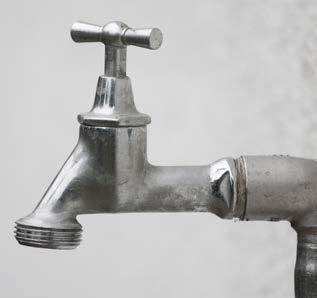
10 NEWS sewer
water


EXHIBITION & CONFERENCE



THE WATER QUALITY, MONITORING & EFFICIENCY SHOW!
REGISTRATION NOW OPEN!



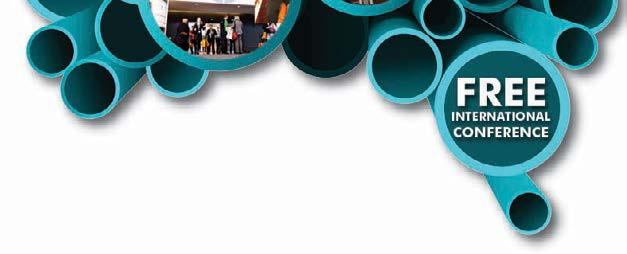













Inter-Water Australia is a free-to-delegate, businessto-business exhibition and conference that will focus on reducing the water footprint of industry, the public sector and the urban environment and will look at the role of technology in improving water quality and improving water efficiency.

● Free-to-attend exhibition
● Free-to-attend multi stream conference
● Free networking reception for all registered attendees

● Great value exhibition & sponsorship packages
Co-located with All-Energy Australia, Australian Sustainability conference and WasteExpo which attracted more than 6,500 participants in 2013!
To discuss exhibiting or sponsorship opportunities, please contact Jay Thorogood on 0488 228 882 or email Jay@inter-water.com.au











MELBOURNE CONVENTION & EXHIBITION CENTRE
15-16 OCTOBER 2014
www.inter-water.com.au ✆ 1 300 794 335 Media Partners Supporters Co-located with Sponsor Official charity IN PARTNERSHIP WITH
NBN
COMDAIN WINS MULTIPLE GAS ‘CITY GATES’
Comdain Infrastructure has been awarded six new gas ‘City Gate’ projects across metro and regional Victoria. With a total value of approximately $6.5 million, each of these six installations (for SP AusNet, APA Group and Multinet Gas) provides vital gas infrastructure upgrades to Victoria’s gas supply network.
The contracts are focussed on significant energy supply projects in
Victoria such as the Melbourne growth area of Werribee/Wyndham, and the Victorian Government’s Energy for the Regions Program. This program, which is to extend natural gas across regional and rural Victoria, identified a number of priority towns for gas, three of which (Avoca, Bannockburn and Winchelsea) will be undertaken by Comdain.
With a scope of work including detailed design and a substantial
NBN CO DETAILS INFRASTRUCTURE COMPETITION STRATEGY
In a hearing with the Senate Select Committee on the National Broadband Network, NBN Co CEO Bill Morrow and COO Greg Adcock revealed details about NBN Co’s plans for infrastructurebased competition with TPG, who is expanding its own fibre network.
They confirmed that NBN Co intends to begin the race to connect apartment buildings by using fibre-to-the-premises
(FTTP) technology (as opposed to the fibre-to-the-building technology being used by TPG and trialled by NBN Co) until their own FTTB product is ready. Mr Morrow said “We felt it was in the interest of the taxpayers and in the interest of NBN Co to offer a competitive response [to TPG’s plan]. We have outlined which areas we will do that in and we have said that we will do it by the
AUSGRID AWARDS $44M HIGH VOLTAGE CABLE CONTRACT
Ausgrid has awarded a contract worth approximately $44 million for 132kV underground high voltage cables to Prysmian Group.
These projects form part of Ausgrid’s network plans where existing cables and equipment, installed about 40 years ago, are being replaced in the Willoughby-Lindfield-Castle Cove area on Sydney’s North Shore, and the Engadine area, just south of Sydney. The contracts comprise design, manufacture, supply, civil works, installation, and testing of 132kV XLPE underground cables for both projects.
Production will involve multiple Prysmian locations: China will supply approximately 105km in total of 132 kV cable, China and the Netherlands will supply joints and outdoor terminations,
CLARIFICATION
and Prysmian Australia’s Liverpool and Dee Why plants will supply bonding and fibre-optic communications cables, respectively.
HORIZON POWER AWARDS EPCM CONTRACT
GHD has been selected to provide engineering, procurement and project management services for Horizon Power, Western Australia. As part of the agreement, a number of Horizon Power staff will be transferring to GHD.
Ian Shepherd, GHD’s CEO, said, “This appointment reflects our strengths in providing strategic engineering services for planning, development and operation of energy assets. GHD has extensive experience in helping deliver essential
component of off-site mechanical fabrication and instrumentation fit out in each gate, these projects will see Comdain’s Systems Group significantly involved. A development of Comdain’s existing fabrication workshop and electrical services team based in Epping, this group provides specialist mechanical, electrical, instrumentation and SCADA design, construction and maintenance expertise and service.
end of the financial year. The only product that we have available today is fibre-tothe-premise and that will be the product which we are offering.”
He added that while they are bringing forward their rollout to potentially profitable apartment buildings, they are not necessarily basing the selected locations on where TPG next plans to begin construction.
infrastructure for our clients and the community.
“Through seamless collaboration across our network, GHD professionals will assist Horizon Power to continue to provide safe and reliable power supplies for customers into the future.”
Horizon Power Managing Director Frank Tudor said, “The new outsourcing arrangement provides Horizon Power with increased flexibility when delivering major projects and is in keeping with our strategic principles of driving simplicity and scalability in our business. This step will deliver savings that will contribute to Horizon Power’s overall cost reduction goals. Horizon Power is pleased to have a company with the reputation and capability of GHD supporting our business.”
The May 2014 edition of Utility included an article titled ‘Lifting the lid on drain surveying technology’. Subsequently, we were made aware that this heading is similar to the trademarked tagline of Sewer Equipment Company of Australia (SECA). Utility magazine would like to make clear that any similarities with SECA’s slogan were inadvertent, and the companies and equipment featured in that article are not related to or supplied by SECA.
12 gas
electricity
NEWS

Promoting best practice in water management by building the knowledge, skills and networks of industry operators
All water industry personnel involved in the operation and maintenance of urban, rural and industrial water related infrastructure for the management, conveyance, treatment, discharge and reuse of water and trade wastes should attend this conference.
If you're an operator, manager, engineer, consultant, professional or someone who is working in the water industry or just has an interest in water, then this is a must attend event.

The Bendigo Exhibition Centre is located on Holmes Road, Bendigo
Email: info@wioa org.au
Phone: 03 5821 6744
Fax: 03 5821 6033
Web: www.wioa.org.au
Industry Operations Conference & Exhibitions
Water
your
in
management – sponsorship opportunities still available.
the
in the water
more information on sponsorship, www.wioa.org.au/2014conferences/sponsorship.htm Prime Sponsors epigen Media Sponsor
To view the conference program and find out how to register, visit www.wioa.org.au/2014conferences/vic.htm Position
company as a leader
water
Take advantage of the opportunity to align your company as a supporter of
leading non-profit organisation serving the needs of operators
industry. For
Organising association
Water Industry Operators Association of Australia PO Box 6012 Shepparton, Victoria 3632
Join us at the 77th Annual Victorian Water Industry Operations Conference & Exhibition
REGISTER NOW!
Bendigo Exhibition Centre
3 & 4 September 2014 VIC 3 4 Bendigo & September

14 RENEWABLES
PLUGGING IN TO WIND

Since 2012, the Australian Energy Market Operator has been investigating the potential to integrate excess energy generated by wind turbines around Australia into the National Electricity Market. AEMO has provided Utility with an update on the progress that has been made, and the challenges that lie ahead for the integration of large scale renewable energy into the grid.
In December 2012, the Australian Energy Market Operator (AEMO) published the National Transmission Network Development Plan (NTNDP), in order to facilitate the development of an efficient national electricity network that considers potential transmission and generation investments.
The plan focused on large-scale electricity generation and the main transmission networks that connect this generation to population and industrial centres. Across the
wide-ranging document, a number of forecasts and targets were set over a 25-year planning horizon, including a forecast of 8.88GW of new wind generation for the National Electricity Market (NEM) by 2020. This figure is in addition to the approximately 2.67GW already installed as of May 2013.
The NEM design incorporates several features which will assist in effectively managing the expected new wind generation forecast to connect to the national power system. Nevertheless,
integrating the level of new wind generation forecast will present challenges in operating the power system and the electricity market. These challenges are expected to arise first in South Australia and Tasmania, where forecast levels of wind generation are highest compared to demand.
Further challenges are expected to arise from technological innovations, including increased distributed generation such as rooftop photovoltaic (PV) panels; and from changing
15
RENEWABLES
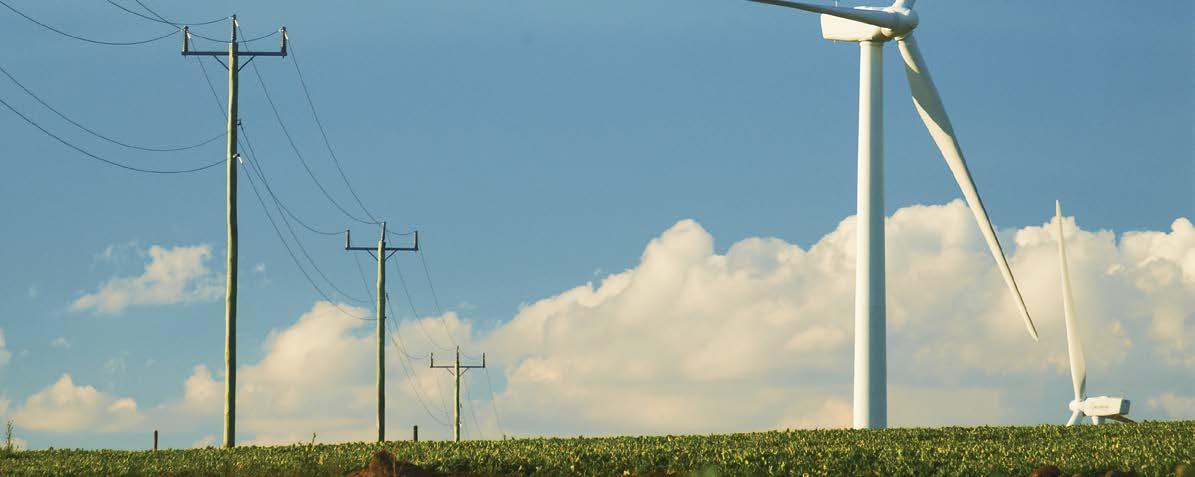
consumer behaviour, contributing to a trend of declining electricity consumption from the power system.
CHALLENGES TO POWER SYSTEM OPERATION
Currently, it is forecast that there will be an additional 8.88GW of additional wind generation in the NEM by 2020, which will result in a total installed NEM wind generation capacity of around 11.5GW.
The key operational challenges in integrating this amount of wind generation into the NEM are:
• Power system inertia could be reduced, due to displacement of conventional synchronous generation, particularly in South Australia and Tasmania. This would make the control of power system frequency following contingency events more challenging in these areas. While power system frequency control in Victoria, New South Wales and Queensland would not be significantly affected, AEMO must make changes in Tasmania and South Australia to ensure ongoing control of power system frequency within required limits.
• Significant new wind generation can reduce existing interconnector transfer limits, particularly under conditions of low demand and high wind speeds when wind generation forms a large percentage of the generation mix.
• Early modelling indicates that, without action, up to 5,750GWh and 1,260GWh of the maximum potential wind generation energy in Victoria and South Australia respectively could be curtailed due to network limitations. This represents around 35 per cent and 15 per cent respectively of the energy potentially available from wind generation installed in these regions.
• Increasing levels of wind generation will reduce power system fault levels at some locations, which may lead to further limitations on the operation of wind generation and high voltage direct current (HVDC) links.
OPTIONS TO ADDRESS THESE CHALLENGES
AEMO could potentially manage these power system impacts with existing processes and systems. This could involve either using constraint equations in the central dispatch process to limit wind generation, or as a last resort, using market intervention through issuing directions to synchronous generators to ensure sufficient levels of power system inertia are maintained to allow adequate control of power system frequency.
A number of other options could be considered to assist integration of this generation. These would require changes to processes, systems and regulatory instruments. Some of these involve:
• Establishing new ancillary service requirements to provide services that allow adequate control of power system frequency under conditions of low power system inertia.
• Investing to install purpose-built synchronous condensers to maintain system inertia and power system fault levels.
• Investing to allow some existing generating units to operate either with reduced minimum load or as synchronous condensers. This would allow existing generation to maintain system inertia and power system fault levels during periods of high wind generation.
• Establishing new control schemes, or modifying existing schemes, to ensure adequate control of power system frequency under conditions of low power system inertia.
AEMO will investigate the likely costs and potential benefits of these options, as well as considering any other feasible options or proposals identified by other parties.
SHORT-TERM ACTIONS
AEMO is currently undertaking further work examining
16
RENEWABLES
the operation of the power system with increased levels of renewable energy generation, including wind and PV generation, with a particular focus on South Australia.
Some technical changes will be required to operational processes and systems in response to increasing levels of renewable energy in the NEM, such as changes in the calculation of contingency frequency control ancillary services requirements, to assist in maintaining system security.
However, to date AEMO has not identified a clear need for more substantial changes to AEMO systems or processes, or to existing market arrangements and design. The existing market design, and AEMO operational system and processes, already have a number of features that assist in the integration of renewables, such as five-minute dispatch, inclusion of large-scale renewable in the dispatch process, and accurate forecasting of wind generation output.
REVISIONS TO THE RET
LONGER-TERM ACTIONS
AEMO will improve its modelling of wind generation in its operational and planning tools and processes, to improve their accuracy with increasing levels of wind generation.
This raises broader questions about the challenges facing the power system, market, and regulatory framework due to the pace of technological innovation altering the supply mix, and changing consumer behaviour, particularly in response to high electricity prices.
At present, AEMO is continuing to follow up on recommendations around operational issues identified in its previous work, particularly in the South Australian and Tasmanian regions, and continues to work towards the outcomes required based on the 2020 RET targets.
At the time of printing, a decision had not been made on whether the Federal Government would retain, revise or abolish the 2020 RET instated by the previous Government. This decision may have implications on the wind target for 2020, however, every effort has been taken to ensure the information presented in this article is relevant and applicable, regardless of any changes to the RET.

17
The most channels Rugged Fully Integrated The best performance and productivity Interference protection and monitoring Lightest weight in class Best battery life An unbelievable price RENEWABLES
THE

IKEA has positioned itself as a global leader in the field of sustainability, and with a target of being completely energy independent by 2020, it’s hard to argue with their commitment to the cause. Recently, the Swedish furniture giant unveiled plans to generate solar power to run its Australian stores and warehouses – and potentially feed excess power back into the grid.
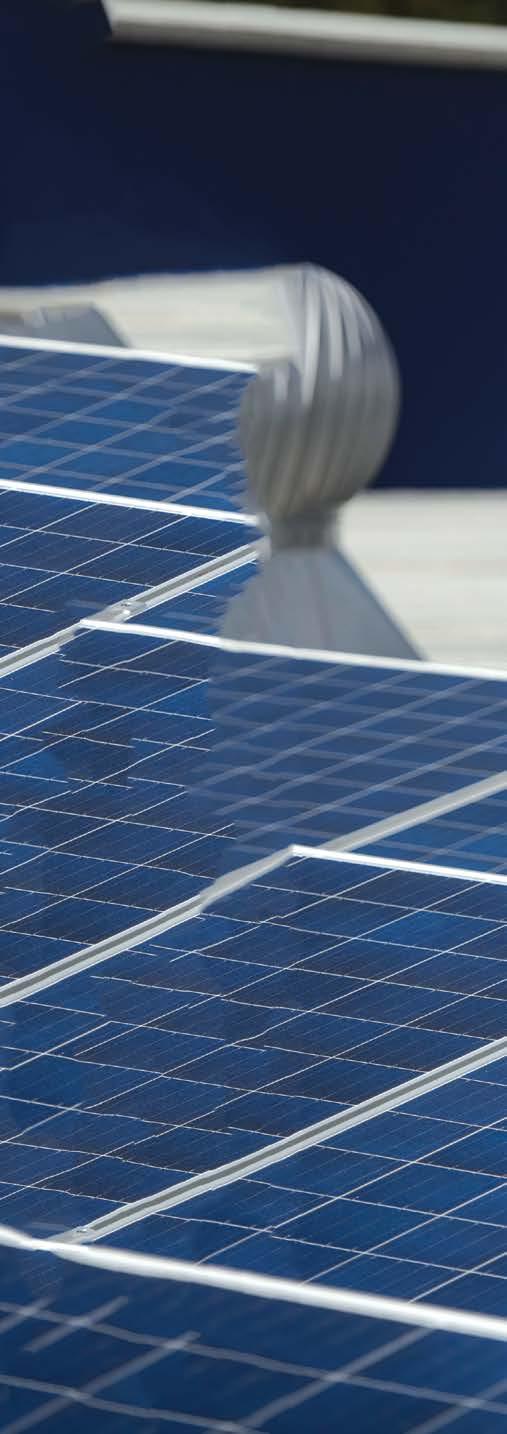
OF THE GRID POWER

18
RENEWABLES
GRID
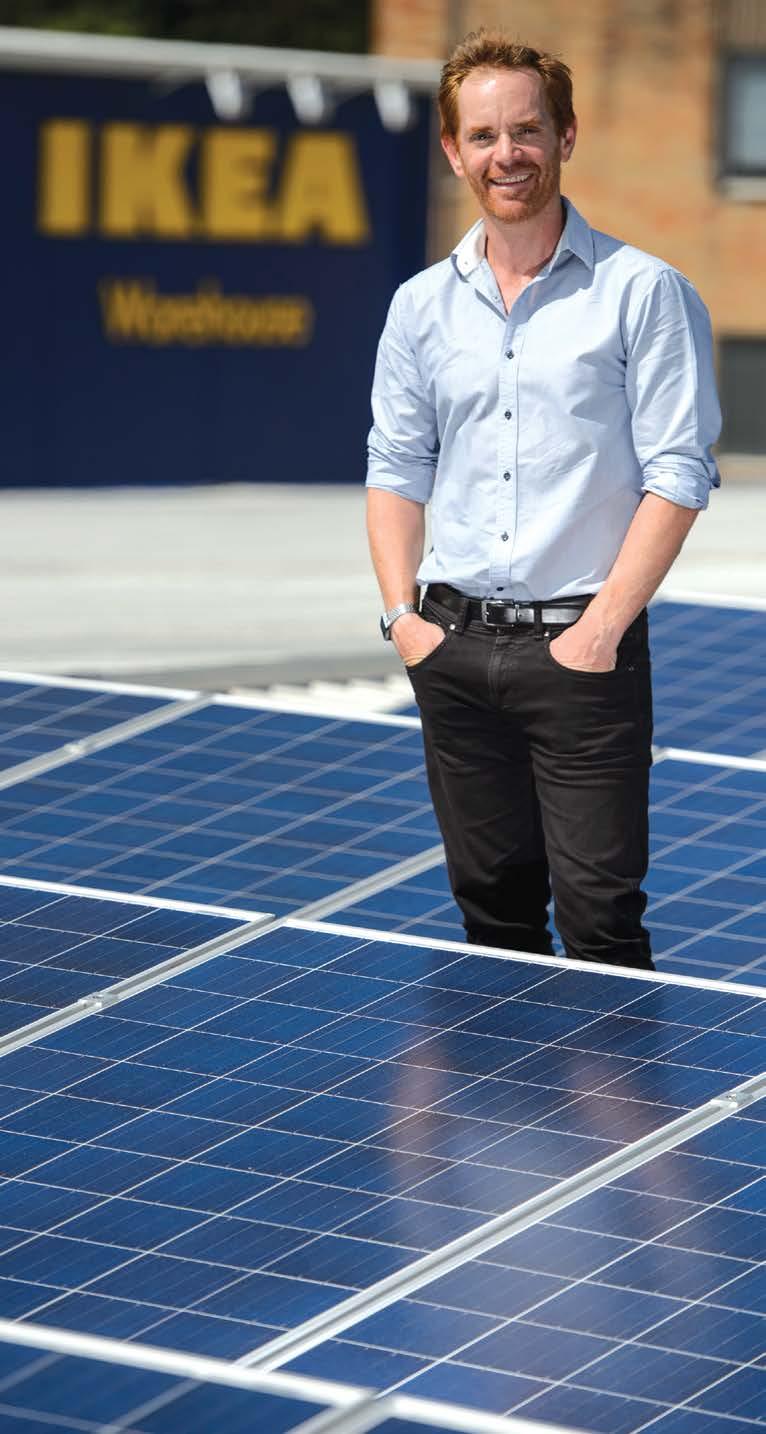
The ambitious 2020 target is no small task, particularly when you consider the sheer size of the organisation – IKEA operates 303 stores in 26 countries and employs approximately 135,000 people.
In May, it was announced that IKEA Australia would work with Canadian Solar to install 3.6MW of solar photovoltaic (PV) panels on the roofs of seven IKEA sites across Victoria, New South Wales and Queensland. The panels will power the seven sites (a mix of stores and warehouses), and they are grid connected, so that any excess energy can be fed back into the National Electricity Market (NEM) for use where it is needed.
The PV panels to be installed will generate enough clean energy to offset approximately 4,000 tonnes of carbon dioxide annually, which will assist considerably in IKEA’s global energy independence goal.
IKEA Australia selected Canadian Solar after a competitive tender process, with a range of factors –including quality of the panels, price, and ability to integrate with the grid – key factors in the decision-making process.
IKEA Australia Sustainability Manager Richard Wilson said that following the tender process, the organisation felt comfortable that Canadian Solar was the company to provide a total turnkey solution on time, and in line with the various challenges that connecting a PV system of this size to the grid entails.
Shawn Qu, Chairman and Chief Executive Officer of Canadian Solar, agrees that the grid integration aspects of this particular project were challenging. “The IKEA project involved hefty undertakings of grid-connection negotiation,” he noted.
“Our organisation prides itself in not only producing the world’s best PV products, but also a dynamic expertisedriven projects team. Fully equipped with an advanced understanding of Australian grid codes, and backed by years of experience, our local team was able to effectively execute, despite the complexity of the projects.”
19
RENEWABLES
IKEA AUSTRALIA SUSTAINABILITY MANAGER RICHARD WILSON WITH SOME OF THE CANADIAN SOLAR PANELS.
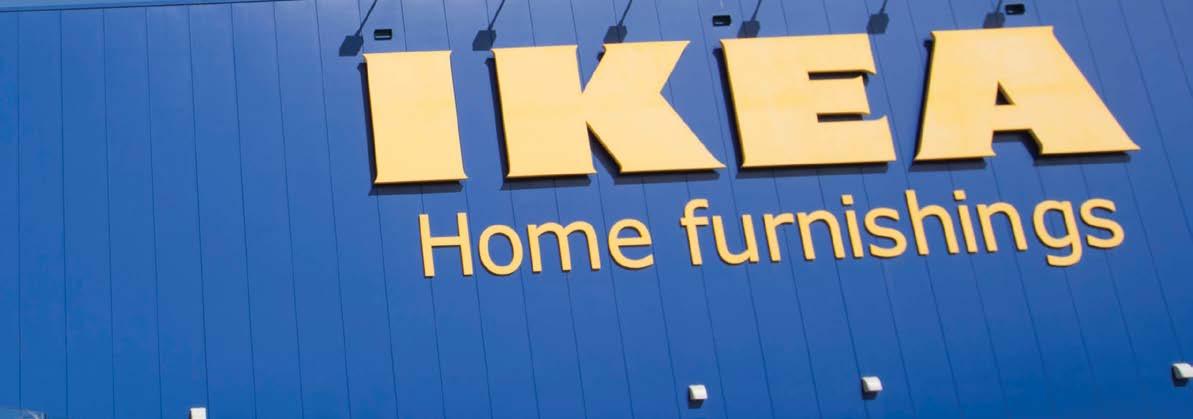
Canadian Solar’s Australian Manager Daniel Ruoss echoed these sentiments. “IKEA Australia could see the work we had done on grid integration on previous projects, such as the Windsor Riverview Shopping Centre in New South Wales, and at the Mega Lifescience Factory in Pakenham, Victoria,” said Mr Ruoss. “Our experience in dealing with grid integration, which can be an often challenging process and speaking the same language as the DNSPs, was a critical part of what set us apart from our competitors.”
Installing solar systems onto the roofs of IKEA Australia’s stores and warehouses is a considerable undertaking, with each site having its own complexities and issues to consider. Canadian Solar’s product and installation offering fit well with IKEA’s vision for an efficient, reliable high quality product together with a competitive offer, expert knowledge and experience.
THE PANELS
The project is Canadian Solar’s largest commercial PV project rollout to date globally and emphasises the company’s ability to provide solutions that reduce the complexities and costs of solar system installation.
Canadian Solar’s professional engineering design was critical to the development of the project systems, which feature state-of-the-art products, such as the Quartech-Next Generation PV panels.
The Quartech PV panels have raised module efficiency to a new standard in the solar industry. They feature four busbar cell technology, which results in higher power output, higher system reliability, improved module conversion efficiency, reduced cell series resistance and reduced stress between cell interconnectors. Overall they offer excellent performance, superior reliability and enhanced value.
A UNIQUE OPPORTUNITY
The IKEA project presents the National Electricity Market, and Australia’s electricity generators, distributors and retailers with a unique opportunity.
“Some of our roofs have the capacity for significantly more panels, which could produce even more electricity, which could then be fed into the grid as a regular source of renewable energy,” said Mr Wilson.
It’s certainly a unique, and novel, way for businesses and utilities to capitalise on the real estate available on their roofs, particularly when their stores and warehouses are located close to points of the grid where security of supply can be an issue.
There’s no doubt that IKEA Australia is a leader in this area, both in Australia and globally, but there is a very real possibility that other companies may too follow its lead, and look into large scale solar projects as a means of powering their own operations, while also feeding excess energy into the grid.
Mr Wilson thinks there is certainly scope for utilities to consider whether the grid’s dimensions might need expanding. “We have to look at innovative solutions,” said Mr Wilson. “Hopefully IKEA can play a small part in bringing these ideas to the fore.”
THINKING BEYOND SOLAR
While the organisation may now have more than 550,000 solar panels in operation around the world, it has also invested heavily in wind turbines in order to meet their energy independence targets.
In 2013, IKEA globally committed to owning and operating 137 wind turbines around the world. In Northern Ireland for example, the electricity generated from the turbines directly powers a store, and in other parts of the world, electricity from the turbines is used to offset energy used by stores which are not completely run by solar power.
“Globally, IKEA has been investing in wind energy, most recently with a new wind facility in Illinois, US,” said Mr Wilson. “When it comes online in 2015 it will be our largest single renewable energy investment to date. The 49 turbines are expected to generate enough energy for 165 per cent of IKEA operations in the US.”
With such a strong wind market in Australia, and considering the fact that Australia has lofty targets of its own for wind generation by 2020 (see article on page 14), this could open
20 UTILITY • AUGUST 2014 WWW.UTILITYMAGAZINE.COM.AU
another potential generating opportunity for IKEA Australia.
MANAGING DEMAND
With such lofty targets for energy independence, IKEA Australia has also had to consider ways it can be efficient with the energy that it does use, to reduce the overall tally it must generate or offset.
Demand management has had a large role to play in this process. Globally the organisation has looked at the times at which certain functions are performed to ensure they are done so in an energy efficient manner – for example, car park cleaning at store locations across Australia now takes place in daylight hours, rather than overnight or early in the morning, when lights would be required for visibility.
The organisation has also ensured that for each store there is a thorough understanding of the building
“Installing solar systems on to the roofs of IKEA Australia’s stores and warehouses is a considerable undertaking, with each site having its own complexities and issues to consider.
management system, and steps that can be taken to ensure the efficient use of energy – for example, air conditioning is utilised at outside of peak demand times.
A BOLD VISION
Globally, IKEA has a long-term approach to sustainability, and Mr Wilson confirms the organisation is well on the way to reaching its lofty 2020 target.
“It’s an ambitious target, but at IKEA, we believe it’s possible to transform our business by creating the opportunity to reduce emissions and avoid rising energy costs. This means challenging the old ways and embracing the new, being bold and committed.”

21

challenges in GRI
Australian government agency ARENA has recently been investigating the opportunities to integrate renewable energy into the grid, and the challenges associated with this. Utility recently spoke to ARENA CEO Ivor Frischknecht about some of the challenges and opportunities presented by renewable grid integration.
The Australian Renewable Energy Agency (ARENA) was established by the Australian Government in 2012 to make renewable energy solutions more affordable, and increase the amount of renewable energy used in Australia. The organisation has a $2.5 billion budget to fund renewable energy projects, support research and development activities, and support activities to capture and share knowledge.
ARENA is supportive of all renewable energy technologies and projects
across the various stages of the innovation chain – from research in the laboratory to large scale technology projects.
An important focus for ARENA has been investigating ways to integrate renewable energy into the grid.
Currently, ARENA is investigating a new initiative that would focus on demonstration projects that address barriers to higher penetration of renewables in distribution networks, at both residential and commercial scale. It could also demonstrate the value and reliability of using embedded
energy resources – such as renewable generation, storage and demand management – as alternatives to upgrading ‘poles and wires’ network infrastructure.
“ARENA’s Board has identified integrating renewable energy in distribution networks as a major challenge and an opportunity for growth in the renewable energy sector,” said ARENA CEO Ivor Frischknecht.
“We are already funding several projects in this area and have been working with stakeholders to develop our priorities for future work.”
22 RENEWABLES

D INTEGRATION
WHY GRID INTEGRATION?
Due to the success of a range of renewable policy measures and accompanying cost reductions for technologies such as wind and solar photovoltaics (PV), renewables are reaching high penetration levels in a number of locations in Australia.
This distributed form and new source of energy generation presents an array of new matters for network and distribution operators to integrate into their business. These operators will benefit from improved forecasting for new generation types, technical standards, and balancing supply with demand to ensure that maximum benefit is derived from high renewable penetration.
According to Mr Frischknecht, technological change is fundamentally shifting the way Australian distribution networks are utilised. Increasingly, electricity consumers will produce electricity as well as consuming it. They will own or otherwise access distributed energy resources, especially rooftop solar, smart appliances and, potentially, energy storage. There will be greater opportunities for them to work with energy suppliers to manage their demand.
“Our stakeholders have told us that managing distributed renewable generation and other technologies is becoming increasingly important in distribution networks,” said Mr Frischknecht. “ARENA sees connecting
to the grid as an emerging issue to future deployment.”
The strong recent growth of distributed renewables – mostly solar PV – plays a major part in these changes. Approximately 95 per cent of Australia’s more than 3GW of solar PV is connected to a network. Last year solar PV penetration in regional Queensland reached almost 18 per cent, according to modelling recently undertaken for ARENA by ACIL Allen. In South Australia, SA Power Networks has projected PV penetration in their network to reach 60-80 per cent of premises over the next 15 years (refer to SA Power Networks Future Operating Model 2013-2018).
“While solar PV generation is valuable
23 RENEWABLES
in that it generates during the day when electricity demand is greater, it is also variable and doesn’t fit neatly with the network’s current reliability requirements. It also generates less during late afternoon/evening residential peak demand periods,” noted Mr Frischknecht. “Over time, as more electricity consumers install solar PV and battery storage costs come down, several stakeholders are concerned that the electricity grid will become an expensive back-up system for consumers who generate most of their electricity requirements on site.”
The transition to a new way of using electricity networks will have technical and economic challenges.
“As integrating renewables into the grid is a priority area, ARENA is undertaking activities to develop an evidence base that will be useful for the industry to navigate challenges - for example performance and reliability of a range of distributed technologies, pricing network services or engaging with consumers,” said Mr Frischknecht.
MAJOR PROJECTS
ARENA currently has a number of projects underway as a means to further investigate the integration of renewables into the grid.
Stocktake project
The ‘stocktake’ project will collate and publish information on the various trials and studies on integrating renewables into the grid that have been undertaken around Australia, as well as the most relevant international projects.
“This will bring together the existing knowledge, experience, gaps and issues into a single place,” said Mr Frischknecht. “This will be a valuable resource for the sector, as well as for ARENA to identify specific priorities for this area of work.
“ARENA has engaged Marchment Hill Consulting to deliver the project and has convened a small expert stakeholder reference group to guide the project, including members from network companies, retailers, research organisations and energy market bodies.”
ARENA will communicate the results through its website in a series of instalments scheduled during 2014, and will hold a series of workshops to update stakeholders on results and analysis and to seek feedback on how to make future results as valuable and user-friendly as possible.
DANCE project
The Dynamic Avoidable Network Cost Evaluation (DANCE) project has been developed by the Institute for Sustainable Futures, located at the University of Technology, Sydney with ARENA funding. ARENA is now looking at extending this project.
“The project aims to provide a national, annually updated, publicly accessible, online map of network constraints. This could help identify potentially avoidable network costs in transmission and distribution networks,” said Mr Frischknecht.
While much of the information required for this is already produced annually in some form in Distribution and Transmission Annual Planning Reports, the information provided can be difficult to access and interpret for those without specialised skills and knowledge, and is produced in different formats. The map could assist the sector in several ways such as helping to lift productivity of network capital assets and developing markets for distributed energy services.
Clean Energy Council project
The Clean Energy Council’s FutureProofing in Australia’s Electricity Distribution Industry project will focus on barriers to integrating renewables and related technologies in distribution networks.
ARENA’S FUNDING STATUS
It will engage a cross-industry steering committee.
“The project will explore the technical, knowledge, regulatory and economic challenges and consider solutions and the benefits of integrating renewable energy into distribution grids,” said Mr Frischknecht.
The project’s objectives are to:
• Identify key barriers that currently challenge the sustainable integration of renewable energy and demand management and what is needed for efficient resolutions both in the near and long term.
• Establish, coordinate and maintain relationships and transparent dialogue between key stakeholders.
• Ensure a holistic approach to the distribution network.
• Demonstrate the technical performance of existing and emerging renewable energy and demand management technologies and explore their value to the distribution network.
• Provide a set of recommendations and advocacy platforms to inform policy and regulation reform aimed at alleviating barriers to, and capturing the benefits of, the continued integration of renewable energy and demand management into distribution grids.
The project will also produce reports and hold stakeholder workshops starting around October 2014. The final reports are scheduled for May 2015.
The Government announced in the Commonwealth Budget 2014-15 that it intends to return almost $1.3 billion of ARENA’s uncommitted funding to consolidated revenue and incorporate its operations within the Department of Industry. However, the Australian Parliament will need to repeal the Australian Renewable Energy Agency (ARENA) Act 2011 for these changes to take effect. Until this occurs ARENA will continue its work progressing funding proposals and managing existing projects. Projects that already have a funding agreement with ARENA are not affected by 2014-15 Budget announcements.
24
RENEWABLES
DELIVERING MORE FOR LESS
The 2014 National SCADA Conference will cover the key operational and organisational challenges in developing a successful SCADA system.
Now in its 13th year, this established industry event is the one place where SCADA technicians and engineers can come together, swap stories, hear case studies of real life implementations and overcome the challenges posed in delivering essential services.
All organisations are seeking greater fiscal scrutiny and higher profits. SCADA operations, often classed as essential services, delivered over vast areas with multiple points of presence, do not lend themselves easily to budgetary restraint. SCADA professionals are charged with delivering essential services with maximum uptime, less budget and fewer staff, yet increased supply demanded from utilities.
This forms the theme to the conference, which is ‘Delivering more for less’. Great case studies and real life implementations will profile how other organisations have met this challenging remit to deliver essential services, with even greater constraints.
Speakers at the event will include:
• Andrew West, SCADA Communication Consultant and Chair, DNP Technical Committee;
• Graeme McClure, Engineering Lead, Smart Networks - Network Automation, SP AusNet;
• Dr Jason Smith, Assistant Director, CERT Australia;
• Ron Southworth, Director, Australian Operations, Lofty Perch;
• Dave Bowerman, Senior Principal / Manager Electrical & SCADA Engineering, Hunter Water Australia;
• Sean Murdoch, Manager, Control Systems Management and Support, Queensland Urban Utilities.
The conference is the annual meeting point for Australian SCADA technicians and engineers. It is the one place where this group can come together, to overcome the challenges posed.
For more information, including full program and event details, head to www.informa.com.au/ SCADAconference.
SCADAd Telemetryd IPWand DNP3bbbbb
We have the people with the experience you need to make it work on time and on budgetb
For over 26 years Cromarty has leveraged its intelligence to provide solutions in the areas of automation and controlz including instrumentationz electrical engineering and industrial information management. We have a staff of around 80z with offices in Melbournez Brisbanez Launcestonz Hobart and Devonport. Our SCADA and Telemetry solutions range from providing a simple single measurement to highly complex integrated automationz data visualization and reporting systems. At Cromarty we maintain and grow our relationships with our customers through best practicez technical expertisez ethical values and flexible solutions. We always offer a fair price for a great resultz and we want to be your go-to SCADA and Telemetry company.



SCADA & IT wwwbcromartybcombau LAUNCESTON DEVONPORT HOBART Operating since 1988 1300 365 136
25
THE LOST TRIBAL WIS RELEARNING

26 SCADA & IT
by Andrew West
DOM OF SCADA
As technology rapidly advances, SCADA and other data management systems are continuing to evolve to meet the needs of a modern utility sector. SCADA communications expert Andrew West provides his take on the current market for control systems, and provides insight into the road ahead for these technologies.
Most people reading this probably already have some idea about the differences between various kinds of control systems and system elements, such as distributed control systems (DCS), supervisory control and data acquisition (SCADA), programmable automatic controllers (PAC) and programmable logic controllers (PLC). But to others, those distinctions are not so clear.
For example: politicians and the journalists of the popular press have been trained to think of SCADA as being a general term for any kind of industrial control system (ICS). And even amongst engineers and technicians, the term SCADA means different things to different people. For some
it is the computer that sits on the factory manager’s desk and tells him how many widgets his plant made today. A more sophisticated version might also report other key performance indicators such as the cost to make each widget, and how this is affected by various factors.
Some will see SCADA as part of the factory automation system that lets the operators view and modify process parameters. Others will use the term to describe all the components of a network that monitor and operate a nationwide system such as the power grid, or a gas pipeline or a water or wastewater utility. Even within these groupings, each industry has its own unique requirements that
27
SCADA & IT
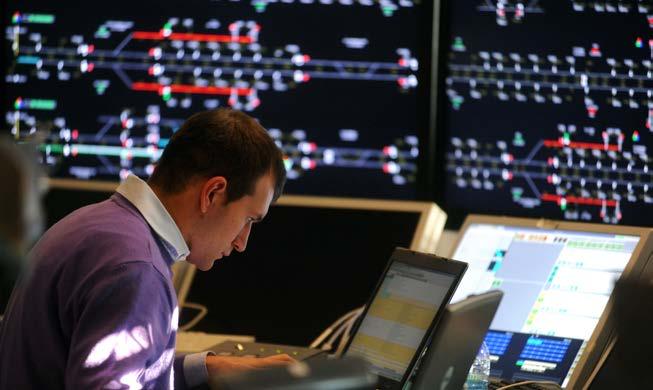
drive subtle (and sometimes not-sosubtle) distinctions in the systems that are designed to serve those requirements.
Each point of view is valid, and different. Whatever we think of as SCADA, that’s what it is. When we discuss our systems, it often happens that we use the same terms to describe different kinds of systems and functionalities, with the result that we often misunderstand each other.
Any conversation about SCADA should consider the distinguishing features that various products and systems have to offer. Don’t assume that any particular product or system supports the same requirements or offers the same functionality that may be familiar from your own work. SCADA systems span an enormous range of capabilities and have evolved to meet the distinct requirements of many different industries. Systems that are suitable for one application might not suit another, or they may provide the required functionality, but be unacceptably expensive. The nuances are sometimes subtle. It is rarely a case of one-size-fits-all. Vendors and end users should continue to remind themselves of this.
The history and evolution of various SCADA products is usually determined by their target application. Many master station devices that began as small factory automation human machine interfaces have grown into systems that are capable of supporting many
thousands of variables. The larger systems that managed large distributed networks have also become more powerful.
Nonetheless, many SCADA master stations are still compute-bound: SCADA is one of the few areas of computing technology where state-ofthe-art systems are still often limited by the performance of the hardware platforms on which they run.
The remote terminal units (RTU) of yesterday are now typically highlycapable devices that support multiple communication interfaces, perform automation processes and support distributed inputs and outputs. Many vendors now give their products different names in order to differentiate their perception of the device capability from the ‘data multiplexer’ that was the traditional RTU. Even so, as long as there is a need to monitor signals and control processes via a remote communication link, there will continue to be a device that does the job of an RTU, even if it is given a different name.
STANDARDS IN SCADA
The specific needs of SCADA systems have spurred the development of specific standards suited to the needs of those systems. Some of these are communication protocols (IEC 60870 and IEEE 1815 (DNP3) for example); some are in middleware and data modelling areas (CIM, IEC 61850 and OPC). Each meets specific needs and usually does not serve well in
applications far from its original targets.
SCADA depends on communication systems, and this is an area where standardisation is well established (e.g. interfaces), but evolution is causing rapid change, especially in areas of wireless technologies and broadband ethernetbased systems. Many of these changes are driven by the economics of internet adoption and mobile phone use, not the needs of critical infrastructure operators; so it is little wonder these technologies do not always suit the needs of SCADA.
Even for experienced professionals it takes considerable time and effort to learn the intricacies of different standards and products in order to make good design and implementation decisions. New factors such as cybersecurity continually bring change to the landscape; and this in particular will drive changes to traditional SCADA system maintenance and lifetime planning. There is no single solution or technology that seems to suit every application, although some seem to have wider utility than others.
BLURRED LINES
In the same way that there are a range of requirements and interpretations that fall under the umbrella of SCADA, the differences between SCADA and other kinds of control systems are often blurred. Specialist knowledge is needed to do SCADA well, and typically this is only found in companies that focus solely on SCADA.
For many years, SCADA products have been undervalued relative to equivalent control products from other areas. In this environment of low profit margins, little capital is available for ongoing product development. This has led to a decline in product quality and the demise of a number of vendor companies. Some other vendors have been subsumed into larger conglomerates. There is a tendency for design and manufacturing to be moved to low-cost countries with an attendant loss of expert domain knowledge.
Large companies that have SCADA as a small part of their portfolio typically do not appreciate the distinctive
28 SCADA & IT
nature of SCADA and merge SCADA into their mainstream product suite, almost invariably leading to a loss of functionality. There are a number of well-known control system companies that have products called RTUs that are just PLCs and have products labelled SCADA that are just DCS systems with some communication driver software. These products may be suitable for some applications, but many of them cannot provide the functionality that was, for example, commonly found in power industry SCADA in the 1980s and 1990s.
LEGISLATION AND TECHNOLOGY
The introduction of Restriction of Hazardous Substances Directive (RoHS) legislation in Europe has caused a shift in the materials used for electronic manufacturing. Nominally, control system devices are exempt from this legislation; but, practically, it is uneconomical to continue to use
RoHS-compliant products tend to have lower reliability and shorter service lives than products assembled from traditional materials. Systems installed today typically have orders-ofmagnitude more complexity than similar systems they are replacing. Sometimes this extra complexity arises from provision of additional functionality; sometimes it arises from the migration of hardware-based architectures to designs that are largely based on software. The 20 to 30-year ‘install and forget’ service lives typical of products produced in the last millennium are unlikely to be achieved today. Many end users have noted the decline in product quality in recent years that can be attributed to these kinds of changes.
MAKING SCADA SEXY
For the foreseeable future, systems will still need careful design and engineering in order to achieve reliable economic operation. Products
carefully. A knowledgeable user knows their system’s requirements and should specify the functionality they need – preferably in terms of outcomes rather than how they think it should be designed!
The future for the industry holds promise. The adoption of standards will assist the integration of a wider range of products and features. The new development centres are relearning the lost tribal wisdom of SCADA. Multinational conglomerates are learning that they need to make allowance for the special needs of SCADA systems. End users have realised that they cannot continue to de-skill and rely on outside suppliers to ‘own’ the design of their systems. Users and vendors have realised that many of their system experts are approaching retirement, and so are now introducing programs to induct a new cohort of engineers and technicians. The challenge will be to make control systems sexy enough to

29
SCADA & IT
IMPROVED CONNECTION, INCREASED CAPABILITY
When looking to improve the capabilities of its staff in the field, Tasmania’s Aurora Energy turned to Motion Computing for a proven, tablet-based solution.
Aurora Energy is a fully integrated energy and network business with complementary activities in telecommunications and energy-related technologies. With much of its business processes consisting of fieldwork including meter reading, pole and asset inspection and outage response, Aurora Energy was familiar with mobile computers, having used them in the field for some time.
However, due to the age of its mobile computers, Aurora re-evaluated its requirements in consideration of a bulk replacement strategy. Further, Aurora needed a platform to support its ‘Turn up once’ strategy.
Aurora’s field workforce is becoming more multi-skilled as demonstrated by ‘Turn up once’, and needed to be supported by technology solutions in alignment. As such, the utilisation of a feature rich mobile computing platform with an easy-touse, fully integrated set of features was critical.
Key requirements included:
• All aspect high visibility screen;
• Fast boot times;
• Camera;
• Barcode scanner;
• Increased durability for outdoor environment;
• SOE friendly;
• Easy to use form-factor.
Further, Aurora needed real-time access to back office asset information and intelligence in order to operate effectively and efficiently and was limited in its choices of a rugged mobility solution, due to the legacy of Windows-based applications that the business uses on a day-to-day basis.
THE MOTION SOLUTION
After investigating available tablets, Motion Computing was selected because of what it offered as a whole package – namely a rugged format, ease of use, weight, screen viewability and Windows compatibility.
Motion Computing’s sales partner to Aurora Energy, Intuit Technologies, then sourced the tablets and has worked with Aurora Energy’s Business Analyst Pat Luttrell, to integrate Motion F5 tablets into the business processes.
“Intuit Technologies continues to support our rollouts and provide ongoing assistance with the purchase of hardware

and accessories. We are currently working closely with Intuit to ensure that our fleet of Motion tablets is further leveraged and utilised in the business,” said Ms Luttrell.
“The capabilities of the Motion solution cater to Aurora’s needs, namely the ability to support more than 20 specialised applications used by the client,” said Intuit’s Nicola Cox.
“We were looking to give our field crews the ability to stay connected while out in the field, allowing them to readily access information and make informed decisions on the spot,” said Ms Luttrell.
“And the screen quality is also a major improvement, with the ‘view anywhere’ screen providing a display that is clear and crisp. It is easy to view in direct sunlight which is critical for our field crews,” she added.
“Beyond this, the ‘on-board’ camera is being used to capture images of faults and issues out in the field, with images being redlined/annotated and then sent back to the office for other staff to investigate. We are also looking into the use of the on-board GPS unit to geocode our photos,” she said.
With hardware characteristics specifically designed for durability in adverse environments, the tablet’s integrated handle makes it easy for field workers to carry; and its outdoor screen eliminates any worries about the sun’s glare impacting screen visibility.
THE RESULTS
The deployment of Motion’s F5 tablets has directly improved Aurora Energy’s productivity and has reduced penalty payouts due to jobs being dispatched and received without delay. This is via the direct connectivity with the network allowing for access to information whilst in remote sites, consequently saving on travel time and reducing site revisits.
“Motion tablets have allowed our staff to remain connected with the network, allowing for work packs to be sent and received immediately,” said Ms Luttrell. “The business can access the tablets while they are out in the field, allowing for updates and support to be performed remotely, eliminating the need for the tablet to return to base.”
30
SCADA & IT
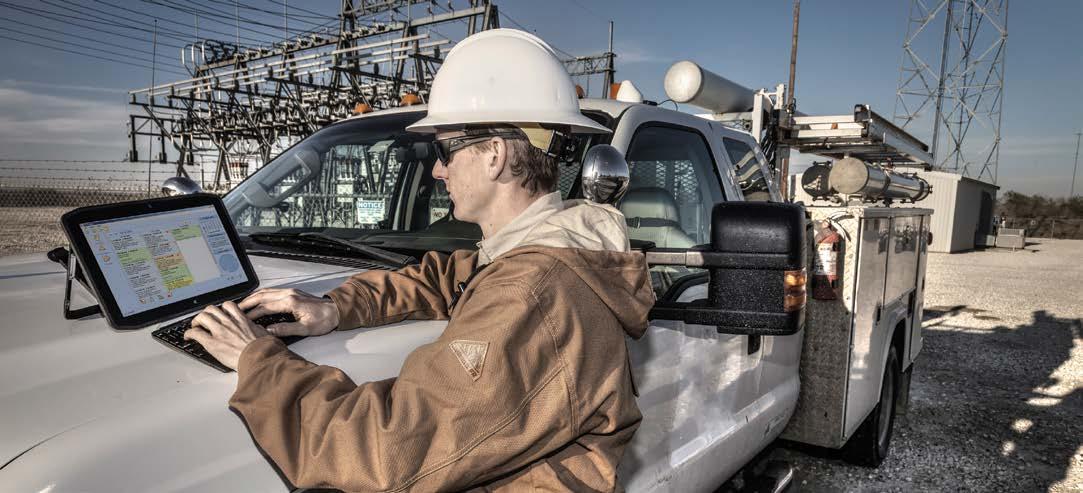
Empower
Mobility tools from Motion Computing® extend productivity in the field for Work Order Automation, Inspections, or Inventory/Asset Management. Motion delivers rugged mobile Tablet PCs, carrying devices, in-vehicle solutions, connectivity and expertise to streamline field operations and save money.


With over a decade of experience in enabling computing while walking, standing, or in a vehicle, we have the expertise to get you up and running quickly and efficiently. Motion® has the tools mobile utility workers need to do the job anytime, anywhere.
With over a decade of experience in enabling computing while walking, standing, or in a vehicle, we have the expertise to get you up and running quickly and efficiently. Motion® has the tools mobile utility workers need to do the job anytime, anywhere.
www.MotionComputing.com I Info@MotionComputing.com I 1-866-MTABLET © 2014 Motion Computing, Inc. All rights reserved. Motion Computing and Motion are registered
of Motion Computing,
in the United States and/or other countries. Intel, the Intel logo, Centrino, Intel Core, Core inside and Atom are
or registered trademarks of Intel Corporation or its subsidiaries in the United States and other countries. All other
and registered
are the property of their respective owners.
MA k E M o BILE
wh E r E work MATTE rs
trademarks
Inc.
trademarks
trademarks
trademarks
Mobility tools from Motion Computing® extend productivity in the field for Work Order Automation, Inspections, or Inventory/Asset Management. Motion delivers rugged mobile Tablet PCs, carrying devices, in-vehicle solutions, connectivity and expertise to streamline field operations and save money. Empower your Field Workforce
work,
MAKE MOBILE WORK, WHERE WORK MATTERS
Motion Tablet PCs are powered by Intel® Core™ Processor Technology and Microsoft® Windows®
your Field Workforce
© 2014 Motion Computing, Inc. All rights reserved. Motion Computing and Motion are registered trademarks of Motion Computing, Inc. in the United States and/or other countries. Intel, the Intel logo, Centrino, Intel Core, Core inside and Atom are trademarks or registered trademarks of Intel Corporation or its subsidiaries in the United States and other countries. All other trademarks and registered trademarks are the property of their respective owners. Motion Tablet PCs are powered by Intel® Core™ Processor Technology and Microsoft® Windows® www.MotionComputing.com.au I Sales@MotionComputing.com.au I 1300 654 978
SECRETS OF GOOD COMMUNICATION
Gencom is the largest supplier of two-way communications solutions in NSW, employing over 50 staff and currently providing sales, service and engineering support for many radio communications and paging networks throughout NSW.
Gencom Two Way Radio began as a Newcastle-based company established in 1981 to provide a diverse range of radio communications products to government, mining, commerce and industry. Since that time, the company has experienced strong and sustained growth, with the acquisition of a number of companies and expansion.
Gencom acts as the prime delivery conduit for many large projects in the areas of coal seam gas, transport, power generation, electricity, water and gas, with local installation and support being provided by both Gencom and our local dealers where appropriate.
Gencom also offers the full range of data radio services to complement offerings in the voice radio market. Data radio services include point-to-point microwave links and SCADA radios. Gencom has significant expertise in telemetry and SCADA, wireless IP data, biometrics, collision avoidance, fatigue management solutions and alarm escalation solutions to provide a comprehensive suite of capabilities well beyond the traditional two way radio voice communications portfolio.
Gencom is the premium distributor for 4RF in Australia and has staff trained in the sales, installation, maintenance and operation of these advanced SCADA radios.
ABOUT 4RF
4RF are experts in radio communications and the organisation was founded in 1998 by industry experts with many years of experience in the telecommunications and microwave radio industry. 4RF is a global company


with customers in more than 130 countries, across multiple industries.
Design and manufacturing is based at 4RF’s headquarters in New Zealand, while sales, customer service and marketing are based in various parts of the world to meet the needs of our customers.
This allows 4RF to deliver an extreme focus on quality, resulting in technology and products that are renowned worldwide, backed up by unrivalled customer service and support, with local support delivered by Gencom in Australia.
WHY IS 4RF TECHNOLOGY SPECIAL?
4RF products are unique because they perform best in the real world, with reliability and cost effectiveness. Every element in the 4RF design is optimised for maximum performance, and rigorous attention to detail ensures that industryleading reliability is part of any Gencom and 4RF critical communications solution.
4RF’S PRODUCT PORTFOLIO
The Aprisa XE is a point-to-point wireless link that can reach up to 250km in a single hop, delivering carrier-class capacity of up to 65Mbit/s. It is available in a wide range of frequency bands from 300MHz to 2.5GHz, with channel sizes ranging from 25kHz to 14MHz, for maximum deployment flexibility. Its modular construction supports a range of easily configurable analogue and digital interface cards: E1/T1, 2 and 4-wire analogue, multiple data options and 10/100 Base-T Ethernet.
The Aprisa FE, SR and SR+ radios are point-to-multipoint radios for monitoring and control communications. Available in 136 and 174MHz and 400 to 470MHz licensed bands, it supports both serial and IP/Ethernet traffic, supporting a seamless transition from legacy communications to an IP-based world. Along with its superior RF for maximum traffic efficiency, the Aprisa FE, SR and SR+ embody industryleading cyber security measures.
32
APRISA FE PRODUCT
Partner solutions SCADA & IT
APRISA XE PRODUCT




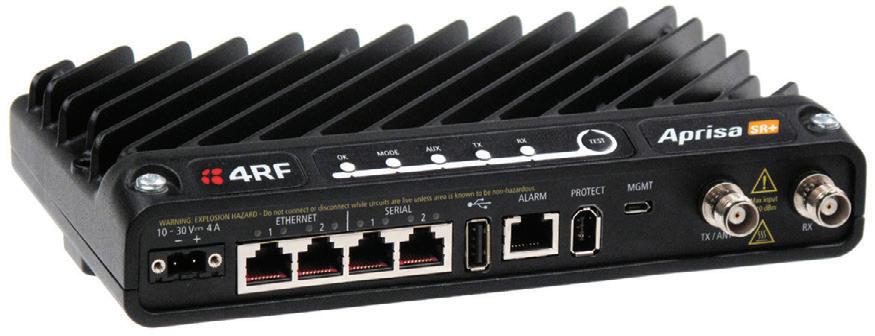

A NEW STANDARD
ASSET MANAGEMENT IN

34 ASSET MANAGEMENT
STANDARD
ASSET MANAGEMENT
 by Danielle Roche
by Danielle Roche
After almost five years of development, a new international standard for asset management has been released, providing a mechanism to deal with a number of the challenges facing utilities in Australia today.
The arrival of the new international standard for asset management comes at a good time for the utilities industry in Australia. Currently, there is a lot of duplication in our industry, and organisations are spending money doing the same thing – solving the same asset management problems that others have already solved. We are trying to measure our asset management performance against each other to identify areas of
improvement and show that we are good asset managers. Our regulators are increasingly focused on the cost of maintaining our existing assets and of building new ones, and we must justify every dollar of expenditure. We need to be able to clearly demonstrate the trade-offs we make in managing asset risk, cost and outcomes and how we make them. And we must now, more than ever, show how what we do in asset management helps achieve
the corporate objectives of our organisations.
Since 2004, many asset managers have used the Publicly Available Specification number 55 (PAS55) to help address some of these issues. Developed by the Institute of Asset Management in the UK and published by the British Standards Institute, PAS55 has been considered to be the best infrastructure asset management standard available. However, in 2009 the authors of
35 ASSET MANAGEMENT
PAS55 proposed that it be used as the basis for the development of a new international standard, and a meeting of representatives from countries including Australia, the UK, Canada, Finland, the Netherlands, Japan, Portugal and Germany agreed unanimously. Given the number 55000 as recognition for PAS55, the long process of writing the new International Organisation for Standardisation (ISO) standard began.
Through Standards Australia a team was formed to represent Australia in the standards development process. With members from roads, mining, energy, water, defence and local government amongst others, the focus on representatives having a practitioner background proved to be an important distinction the Australian team had over many other countries involved in the process. The team also remained essentially constant for the entire five-year process and is still in place today.
Between 2009 and 2013 the Australian group met with the international team working on ISO 55000 in locations as diverse as Washington D.C., Pretoria, London, Prague and Melbourne and as many as 31 countries participated in the process. During that time what started out as ISO 55000 became three documents:
ISO 55000 ASSET MANAGEMENT: OVERVIEW, PRINCIPLES AND TERMINOLOGY
This document sets the scene for the other document and outlines the principles, terms and definitions used across the three documents. It is the document that provides a good summary of the standards for senior management.
ISO 55001 ASSET MANAGEMENT: MANAGEMENT SYSTEM –REQUIREMENTS
ISO 55001 is the document that advises on the requirements to comply with the standard, and is the document that the auditor will focus on for companies seeking certification with the standard.
ISO 55002 ASSET MANAGEMENT: MANAGEMENT SYSTEMS –GUIDELINES ON THE APPLICATION OF ISO 55001
ISO 55002 provides guidance on implementing 55001. It is not a detailed guidance document and provides reference to other existing guidance documents like the IPWEA’s International Infrastructure Management Manual.
For those familiar with PAS55, many of the concepts of this standard are retained in the new ISO 55000 family of standards, including:
• Alignment of the organisational and asset management objectives;
• A whole-of-asset life cycle approach;
• Risk-based asset management;
• Enablers including leadership, communication and information management.
However there are a number of areas where the ISO 55000 family of standards moves away from PAS55, including:
• The standard can be applied to any type of asset (not just infrastructure).
• The terminology has been simplified and generalised.
• There is more focus on leadership and context.
• The standards are very clearly for an asset management system, not for asset management.
• The term asset management strategy is no longer used, it is now called a Strategic Asset Management Plan.
• There is less risk management detail but linkage and reference to the ISO Risk Management Standard.
• The document structure is in line with ISO management systems standard requirements.
Apart from the content of the documents, the ISO 55000 family of standards provides a mechanism to deal with a number of the challenges facing utilities in Australia today. It provides a common language that can be used to share information
and collaborate in the utility industry and with other sections to reduce duplication in the management of assets, and move asset management within the industry forward. It can also support benchmarking within and across industries, and provide the basis for the development of cross-industry training and development and enable the easy transfer of skills across sectors.
Being management system standards, like some of the highest profile ISO standards – including ISO 14000 Environmental Management and ISO 9000 Quality Management – the standards are likely to increase the profile of asset management in organisations and with regulators and stakeholders. The likelihood of companies advertising their compliance with the ISO 55000 family in the same way as they do for quality, safety and environmental standards should not be underestimated. Equally the use of this standard as hurdle criteria for suppliers of asset management related services is to be expected.
Along with the benefits of the new standards there are some risks to be considered. Already the standard has been included in regulatory requirements of a utility organisation in Australia. It was a key design criterion in the ISO 55000 family that the organisation could determine the depth to which the components of the standard were relevant to the asset management objectives of the organisation and hence needed to be applied. Forced regulation may compromise this approach and result in wasted resources and inappropriate asset management systems.
Another risk associated with the standards is over-reliance. As with any standard the ISO 55000 family is designed to be informative, but the premise that use of the standards equals good asset management or asset management outcomes is not necessarily true. There are many other components of good asset management, and whilst the ISO 55000 family of standards should identify many of them it is not the only piece of the puzzle.
36
ASSET MANAGEMENT
Perhaps the biggest risk is that implementing the ISO 55000 family of standards is seen as a quick fix to asset management issues. Another fundamental tenet of the standards is that good asset management practice is considered to be an ongoing, continuous improvement journey.
There is no quick and easy approach to fixing asset management challenges or solving problems. Application of the standards is also very specific to the organisation and the context within which it operates, and cannot be a cut and paste of another organisation’s application.
In dealing with these opportunities and risks there are a few things to consider before an organisation commences the adoption of the ISO 55000 family of standards:
• Is the need for an asset management system recognised by the organisation?
• Do you have senior management commitment to the adoption of
the ISO 55000 family, including required time, resources and support?
• Does the organisation have clear organisational objectives that can be used to develop or link to asset management objectives?
• Do you have a long-term, continuous improvement approach to the implementation of the ISO 55000 family?
If the answer to those four questions is yes then the application of the ISO 55000 family of standards within the organisation is off to a good start. There are many sources of information available now and in development
to assist in the application of the standards, including tools to undertake a gap analysis of your current asset management system compared to ISO 55001 requirements.
For asset management within the utilities industry, the arrival of the ISO 55000 standards is the beginning of a new journey. It will be interesting to observe the application of the standards and their development in the future, and the extent to which the industry takes up the opportunity to work together to get leverage from the ISO 55000 standards to improve asset management practices across the sector.
Danielle Roche is the Director of the Red Wire Consulting Group, a futurefocused business management consulting service. Danielle has a wealth of experience in asset management, particularly in the water sector, having previously held the position of Manager Asset Management at both the Water Services Association of Australia and City West Water. Danielle can be contacted at danielle.roche@redwireconsulting.com or 0411 016 444.
We make problems disappear.
37 For more information visit ppssa.com.au or call (08) 8297 1000
Cleaning and CCTV condition assessments of underground infrastructure Rehabilitation of wastewater, potable water & stormwater assets Mapping and data collection using PPS Smartmap Location of underground services using GPR General commercial plumbing maintenance
ASSET MANAGEMENT
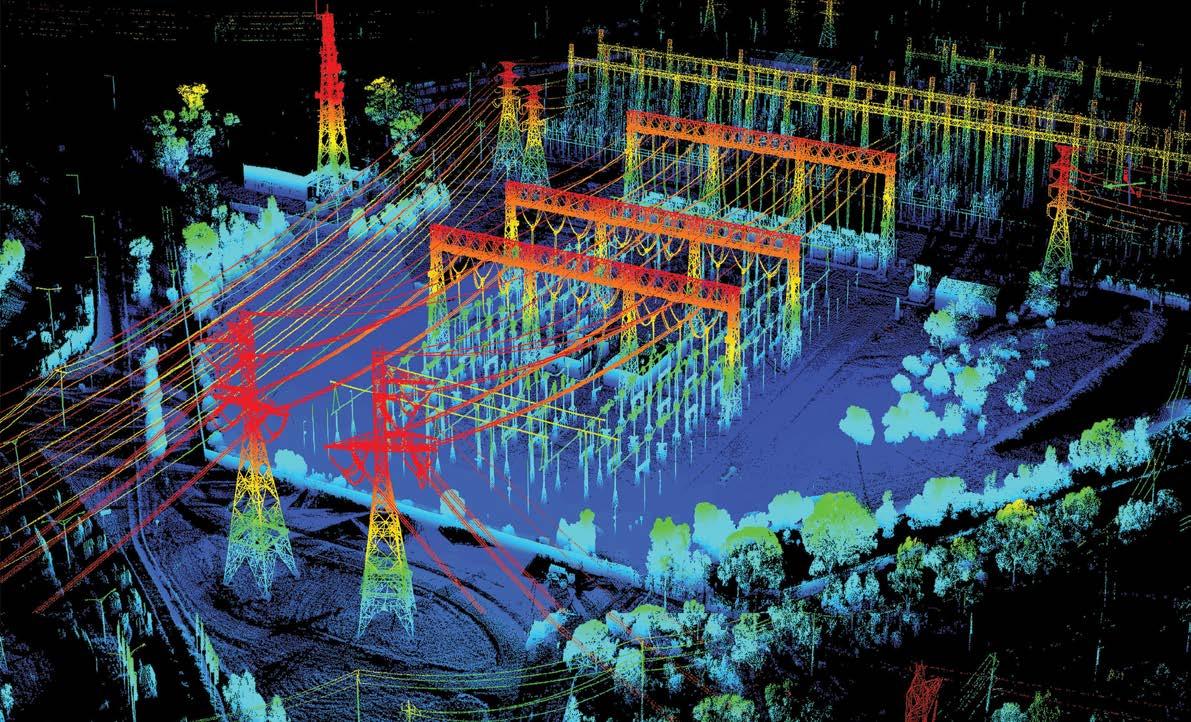
EVOLVING IMAGERY DELIVERS REAL SOLUTIONS
Since the introduction of early video-based technologies, utility businesses have sought ways to apply these technologies to the management of their assets. As the use of imagery and LiDAR in asset management evolves, there are some key considerations that must be taken into account when developing solutions that deliver real business outcomes to utilities.
There is evidence from the early 1980s of video imagery being applied in resource and infrastructure management. The development of affordable super VHS video technology in 1988 marks the start of video imagery for asset mapping, inspection and management. The SVHS video technology offered
external time-code interfaces to support interfacing of GPS to efficiently generate geo-referenced imagery.
In the early 1990s, the home video and PC market facilitated the emergence of affordable video digitising and playback technology and, with the supporting digital video formats (MPEG, MJPEG and AVI),
video data could be readily digitised and referenced to position data via video time-code information. By the mid-90s, the integration of digital video into various information systems, including geographic information systems (GIS), was evident to support simple asset mapping and visualisation. Affordable digital frame cameras
38
LIDAR SYSTEMS NOW DELIVER DENSER POINT CLOUDS THAN EVER BEFORE. ASSET MANAGEMENT

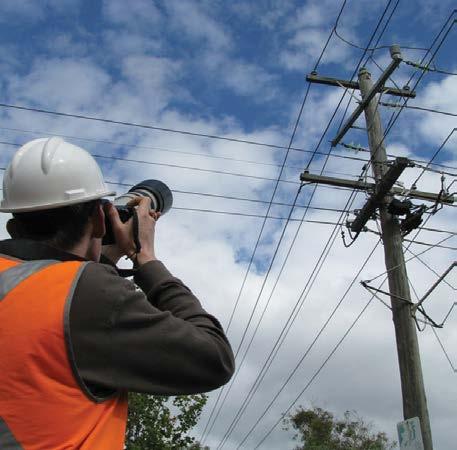


For 20 years Geomatic Technologies (GT) has been delivering innovative technology-based solutions and services to Australia’s largest power, water and telecommunications businesses.
> Pole and network mapping services
> Solutions for asset inspections
> Solutions for meter reading and smart meter rollouts
> Solutions for vegetation management
> Street light mapping services
> Defect management solutions
> Spatial data infrastructure solutions
> Enterprise visualisation and business intelligence solutions.
Visit our website to find out how we can help you with your asset capture and field mobility needs. www.geomatic.com.au
Melbourne, Sydney, Brisbane, Perth
emerged with higher resolution imagery by the end of the decade, allowing direct recording to disk.
In the 2000s the emergence of affordable mobile Light Detecting and Radar (LiDAR) technology offered the ability to create 3D point clouds of the asset corridor. The precision of the 3D points allowed engineering design measurement, supporting a greater range of asset mapping and management activities.
Today, mapping systems with imagery and LiDAR technology are commonplace with a wide range of terrestrial, mobile and aerial technologies available on the market for the collection, processing and delivery of imagery and LiDAR data. For utility owners, the challenge now is how to harness these technologies to deliver meaningful outcomes for the management of their assets.
A COMPLETE SOLUTION
It is important to note that whilst the technology is readily available, has become more affordable, and offers a great foundation to realise real outcomes, it is not simply about providing imaging and LiDAR data but rather, more importantly, how this data is combined with products and services to meet a utility network’s information requirements.
The range of available data acquisition technologies has exploded in recent years. LiDAR systems now deliver denser point clouds than ever before. We are faced with increasingly sophisticated technologies that deliver more and more data to us, but fundamentally we need to understand what to do with this data to make it truly useful.
For any data capture project it is critical to establish and understand the end user’s requirements, and these can vary considerably across the enterprise. For instance in the electricity distribution sector, some users within the organisation wish to be able to easily view recorded imagery of transmission and distribution lines, some need detailed information on poletop furniture, and others are interested in addressing critical operational risks such as how to quickly identify

conductors that could potentially cause fires through contact with each other or with other nearby objects. These varied requirements all inform decisions about what technologies should be used for mapping, and importantly, what needs to happen to field data to produce actionable outcomes that are of value to the utility user.
Now more than ever, asset management is of growing importance for utilities, with companies seeking to reduce costs and extend the operating life of their installed infrastructure. Experience says that the use of 3D panoramic imagery and LiDAR in an integrated solution designed to meet user requirements will play a key role in future asset management efforts.
While the solution will involve exciting technology, the real value comes from the domain knowledge and the processes around the technology to deliver the right outcomes in line with regulatory compliance and national standards.
BEYOND 2014
With readily available high resolution imaging and LiDAR technology, a key challenge for the integrated solution is the shift from collection and processing to delivery, given the big data nature of the field data recorded.
ABOUT GEOMATIC TECHNOLOGIES
INTEGRATION OF IMAGERY AND POINT CLOUD DATA IN A DESKTOP VIEWING TOOL.
Delivery encompasses the capability to store, manage and quickly analyse the data. The delivery challenge will most likely be solved using the cloud and cloud services, moving the greater challenge to focus on the delivery of high-value, integrated solutions that address a utility’s business or operational needs.
Moreover, the capability to store, manage and quickly analyse data collected over a number of years will give rise to the development of intelligent integrated solutions to fully support a condition-based maintenance approach which drives maintenance as needed, and thereby optimises the use of field resources.
An exciting future will see increased use of unmanned aerial systems (UAS) to cost effectively collect imagery and LiDAR data. Currently, regulatory restrictions associated with line-of-sight operation are the key impediment to wider deployment of UAS in asset management; although we are already seeing the technology being routinely used for video inspection of infrastructure in the power industry.
Finally, the pace of technology development will continue to present challenges to solution providers and asset owners as the desire to adopt new technologies in modern asset management practices grows.
Founded in 1994 with a strong background in surveying sciences, Geomatic Technologies (GT) has a long and successful track record in the application of advanced technologies to meet the needs of diverse mapping and asset management programs throughout the utility sector in Australia. An SP AusNet owned company, GT has joined forces with specialist utility services division, Select Solutions, to deliver superior asset management outcomes to the utility sector.
40
ASSET MANAGEMENT
13TH TO 17TH OCTOBER, 2014
HILTON ADELAIDE, SOUTH AUSTRALIA


NEW WAYS OF THINKING
Stormwater 2014 will allow all urban water management professionals to explore the growing trend across the industry that recognises the increasingly important role that stormwater management plays in cities that need to be adapt to the combined challenges of population pressures, climate change, environmental concerns and water resource management.
Don’t miss the major urban water management event to be held in Australia this year.
For further information or to register visit
www.stormwater2014.com.au or contact GEMS Event Management on +61 2 9744 5252.
FAILURE PREDICTION OF CRITICAL PIPES AND PIPE LEAK MANAGEMENT
by Peter Hadfield, Sydney Water
It is generally recognised worldwide that about 70 per cent of the total asset base of urban water utilities consists of buried pipes. Sydney Water has 21,000 km of water pipes, valued at over $15 billion, and also maintains 1.3 million connections to customer properties. Here, Peter Hadfield takes us through some of the work the utility has undertaken to reduce leaks and breakages across its network.
Most major urban water utilities in Australia have extensive large, critical pressure main systems, parts of which have been in service for up to a century or more. Failure of critical mains has a significant impact on maintaining service levels to customers, loss of firefighting supply, compromised safety, transport disruption and other social costs, as well as significant financial and reputational implications.
In Australia, the total replacement cost of the pipe network has been estimated to exceed $100 billion (Nicholas & Moore, 2009). Over the next five years, the costs of urgently needed asset replacement will be around $5 billion. Maintenance costs over the same period are estimated at some $2.5 billion (WSAA, 2009).
SYDNEY WATER’S COST-EFFECTIVE LEAK MANAGEMENT PROGRAM
Water mains leak or break for a number of reasons and age is usually not the determining factor. Many things can cause leaks, such as:
• Deteriorating joints and fittings;
• Ground movement cracking pipes;
• Changes in water pressure;
• Changes in rainfall and temperature;
• Adjacent features such as trees and poles;
• Soil types;
• Traffic loads.
Sydney Water has invested $1 billion in the last decade and will invest $350 million over the next four years to reduce leaks and breaks.
Sydney Water’s Infrastructure Leakage Index of 1.5, which according to leakage experts is the best performance indicator for real loss management, puts them in the world’s top 10 per cent for minimising leaks based on the World Bank Institute Guidelines for leak reduction.
Sydney Water implements a number of programs to reduce the likelihood of leaks and the amount of water lost when they happen. These programs include:
Active leak detection and repair
Active leak detection and repair involves acoustically scanning for concealed leaks in buried pipes and repairing pipes identified. Leaks are generally found in connections to the watermains and in fittings such as hydrants and valves. Active leak detection and repair is a continuous process. In 2012-13 Sydney Water spent $2.4 million to inspect more than 13,500 km of pipe for leaks, which is over half the network. Since Sydney Water’s Active Leak Detection Program began almost 165,000 km of pipes have been inspected. It is estimated that this
program achieves more than 23 billion litres of water savings a year.
Pressure management
High pressure in pipes can cause them to break and can cause problems with household appliances such as hot water systems. On average, each customer that has their pressure reduced saves an extra 3,900 litres a year. In total, pressure management has the potential to save up to 10 billion litres a year.
Sydney Water also focuses on improved response times to repair leaks and prioritisation of responses based on the volume of water that could be lost, as well as improved flow metering and watermain renewals, targeting poorly performing mains in order to reduce the likelihood of leaks and the amount of water lost when they happen. A balance also needs to be struck between further reducing leaks and the impact this would have on customers’ bills.
CURRENT TECHNIQUES FOR CONDITION ASSESSMENT OF CRITICAL PIPES
Sydney Water has reduced breaks by 50 per cent over the last ten years and currently uses a number of tools to assess the condition of critical pipes.
An indirect soil measurement technique, Linear Polarisation Resistivity (LPR), analyses the corrosive nature
42
ASSET MANAGEMENT
of the soil around the buried pipe, the results of which can determine a risk model of pipe condition.
A magnetic flux leakage assessment is used on targeted pipes, where an electric pulse created in a pipe can assess any defects and measure any irregularities which can be an indicator of corrosion.
AWARD WINNING RISK ASSESSMENT STRATEGY
In August 2012, the International Water Association (IWA) announced a Global Honour Award to Sydney Water for its Critical Water Mains Strategy and Implementation Project.
A key element of the strategy was the development of a quantitative risk assessment tool that considers both direct and indirect costs of a mains failure. This has enabled the impact to the community to be included in the justification of works. The tool provides a level of sophistication not found elsewhere in the industry in that
it assesses the risk quantitatively and prioritises individual mains. The tool is used to introduce a risk-based approach to a number of processes including:
• Identifying and prioritising condition assessment; maintenance programs and renewals;
• Prioritising the development of shutdown operation manuals;
• Developing a process to minimise third party impact on the network.
RESEARCH FOR BETTER FAILURE PREDICTION
With improvements in the methodology currently being utilised across Australia, it has been conservatively estimated that even a 30 per cent improvement in the present state-of-the-art would reduce the high consequence events by 50 per cent and total failure events by 30 per cent, resulting in potential savings of over $160 million over a 20-year period to the
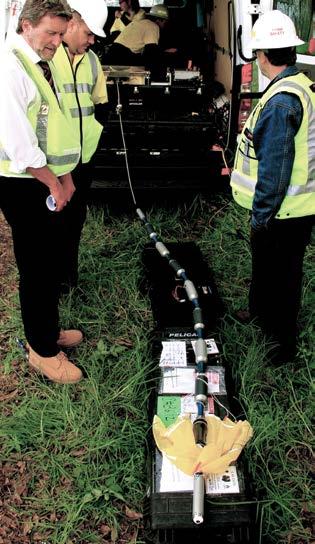
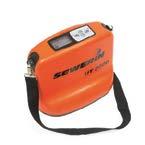
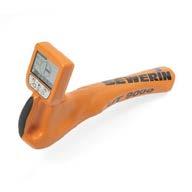
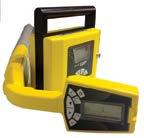
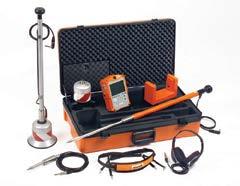
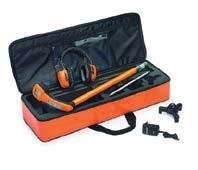
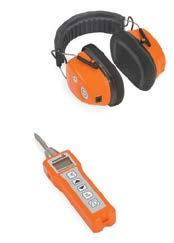

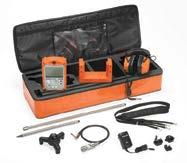
43
ASSET MANAGEMENT
PURE TECHNOLOGIES’ SAHARA II PWA TOOL.
Australian water industry. With better prediction from condition assessment, expenditure can be delayed by five years and replacement costs could be reduced up to 20 per cent - meaning the projected savings over a 20-year period would exceed a further $300 million.
Improvements in condition assessment technology will decrease the future risk of substantial funds being potentially misdirected through premature replacement of pipes, which could positively impact future water service pricing. On the other hand, not undertaking timely replacement of pipes could lead to an increasing number and frequency of failures with associated costs and disruption.
INTERNATIONAL RESEARCH
An international research project led by Sydney Water commenced in August 2011 and is examining when and why critical water pipes burst.
Six other Australian water authorities – Melbourne Water, Water Corporation, City West Water, South East Water, Hunter Water and SA Water, as well as the Water Research Foundation (US) and UK Water Industry Research are partners in the project. The five-year project is the largest international research collaboration led by Australia on buried water pipes.
The research will develop advanced condition assessment, corrosion modelling and failure prediction techniques to evaluate remaining pipe life.
Sydney Water has provided a decommissioned 600mm, 1.5km cement lined cast iron pipe laid in 1922 in Strathfield to aid the research project, which is the world’s first research test bed where the interpretation of the condition, failure and corrosion of pipes is being actively researched. The pipe has a nominal wall thickness of 30 mm and lead joints at approximately 3.6 m intervals. The pipeline was made chargeable with potable water and was fitted with entry points for condition assessment.
In addition to its current use, it is expected that the current test bed could be a global facility that can be
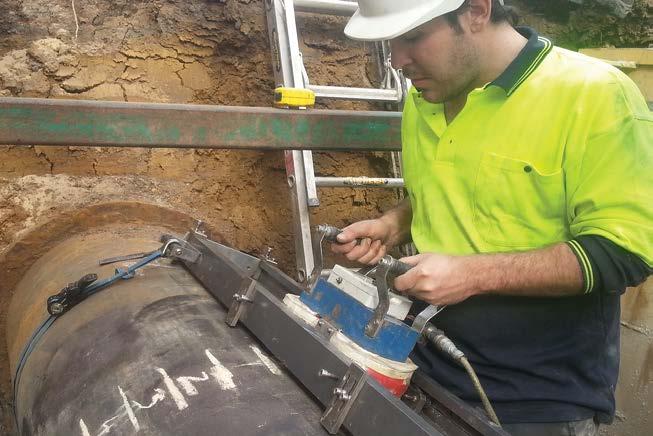
used to test pipe related research in future, including pipe rehabilitation technologies.
The University of Technology, Sydney (UTS) is managing the research component on improving nondestructive condition assessment data analysis, the University of Newcastle is focusing on modelling pipe corrosion deterioration of large metallic pipes, and Monash University is forecasting likelihood of pipe failure and leading the overall research program.
As part of the condition assessment, improved automatic interpretation process, data collection and analysis is being carried out on the testbed at a number of excavation pits for deployment of external and internal inspection tools. Data generated by the condition assessment technologies during their research inspections of the testbed is advancing the design and implementation of software tools being undertaken by UTS which employ innovative analytical techniques that aim to provide higher levels of confidence in estimating the remaining pipe wall thickness and pitting defects from the sensor readings for a given pipe. Collaborative research agreements have been put in place with some of the most widely used industry partners that provide condition assessment for watermains. There are four condition assessment technology collaborators currently taking part in
the research program: Asset Integrity Australia (AIA), Rock Solid Group (RSG), Russell NDE/PICA and Pure Technologies.
An additional research program with PCA Echologics is currently underway, while more emerging technologies are also being engaged to assess their value proposition to the utility partners in forecasting remaining life of large pipes.
The research is focused on real industry needs and active industry participation. This direct engagement to improve the available technology is considered to be the world’s first in a large project of this nature.
RESEARCH ACTIVITIES
Asset Integrity Australia
AIA’s inspection is based on the application of an external magnetic field onto a ferromagnetic material and then measuring the response with magnetic sensors. The field, induced by the magnets, is subject to leakage at the corrosion pit, causing a perturbation of its distribution. This magnetic leakage can then be detected by examining the output from the sensors. In condition assessment of water pipes, the AIA technology is used to examine exposed sections of the pipe from the outside.
Rock Solid Group
Also based on an electromagnetic induction phenomenon, the non-contact RSG broadband
44
ASSET MANAGEMENT
ASSET INTEGRITY AUSTRALIA’S INSPECTION AT THE SYDNEY WATER TESTBED
electro-magnetic technology involves the propagation of electromagnetic fields generated by an AC-excited transmitter. Eddy currents induced in a conducting medium generate a secondary field which travels to the receiver. In water pipe condition assessment, the induced eddy currents migrating in the pipe wall close to a transmitter are influenced by the profile of the ferrous pipe, and their measurement is used to gauge wall thickness. Four research trials by AIA and RSG have taken place at Sydney Water’s test bed over 2012-14, with various pipe sections exposed and subsequently exposed for forensic investigation.
Russell NDE/PICA
The Canadian SeeSnake owned by Russell NDE/PICA is a free-flowing tool which employs remote field technology (RFT) for measuring pipe wall thickness. RFT works by detecting changes in an alternating current electromagnetic field generated by the SeeSnake exciter coil. As the electromagnetic field interacts with the metallic pipe wall, the signal’s magnitude and phase are perturbed at locations where metal loss exists. Research efforts specific to the inherent deployment nature of this tool are also being addressed by looking at the challenge of improving the tool localisation in the pipe during the inspection. The tool was introduced in the testbed at an intrusion pit constructed at one end and retrieved at a retrieval pit constructed one kilometre away. A trial run with a gauge tool was first carried out. Sydney Water maintenance managed the testbed civil work and project managed the two research runs of the tool at the test-bed in 2012.
Pure Technologies
Pure Technologies is bringing to this research run a novel tool, Sahara II PWA, which employs acoustic techniques to measure pipe wall thickness. The tool is inserted in the charged mains and emits acoustic waves that interact with the metallic pipe wall, and the changes in their responses are picked up by microphones in the tool to detect

where metal loss exists. UTS is collaborating with Pure Technologies in advancing the interpretation of the signals and this research run is part of that process by collecting research data from a well understood live pipe. The improved tool will have a higher level of confidence with the use of innovative analytical techniques to estimate the remaining pipe wall thickness.
TRAFFIC LOADING TESTING
The Sydney Water testbed is also being used to research the pipe stresses and strains generated due to passing heavy traffic and soil loads. This is the first dynamic testing of traffic loadings in the world.
In November 2013, traffic loading tests were performed on site over a bitumen road by two trucks with various axle groups (weighted 22.5t and 38.6t). The tests were performed over the instrumented pipe with 0, 30 and 66.8m internal water pressures, and the truck tests were carried out while the trucks were stopped, passing, braking, cornering, and passing over a simulated speed hump on the road.
PREDICTED RESEARCH OUTCOMES
Improved techniques for estimating the probability of failure of critical
pipelines and for estimating their remaining life will:
• Decrease the risk of substantial funds being potentially misdirected through premature replacements;
• Reduce replacement costs;
• Delay expenditure on replacements;
• Deliver cost savings which will help sustain lower water pricing, benefiting the community at large;
• Decrease the number and frequency of failures
• Minimise major disruptive events that lead to losses of homes, closures of roads, parklands, shops;
• Minimise the loss of water.
Sydney Water currently has a range of initiatives in place to better predict failures in critical pipes, and assess and manage leaks when they do occur. With continuing research at the various testbed sites, and ongoing improvements to the technologies in place, it has been conservatively estimated that high consequence events could be reduced by 50 per cent and total failure events by 30 per cent, resulting in potential savings of more than $160 million over a 20 year period to the Australian water industry.
45
ASSET MANAGEMENT
RUSSELL NDE/PICA’S SEESNAKE INSPECTION AT THE SYDNEY WATER TESTBED
SEWAGE SPILL PREVENTION STRATEGIES
Victoria’s Western Water established a program in 2010 to prevent sewer spills, which has reduced the number of incidents by 54 per cent in three years. Here we take a closer look at their strategy and the inspection works that have been carried out to date.
Western Region Water Corporation, trading as Western Water - one of Victoria’s 13 regional urban water corporations - provides water, recycled water and sewerage services to 58,200 properties over an area of 3,000 square km and a population of 158,300. The organisation’s service area is characterised by high growth to the north and west of Melbourne.
Western Water also maintains more than 1,185km of sewer mains, which transferred more than 8,400 million litres of sewage to its recycled water plants in 2012. If one of these mains becomes blocked or cracked, raw sewage can spill out into streets, backyards, creeks, rivers and even into people’s homes.
In 2009 and 2010, there were three serious sewage spills. In response, the Western Water Board endorsed and implemented a Sewage Spill Prevention Strategy (SSPS) in August 2010. This innovative strategy has reduced sewer spills by 54 per cent in its first three years.
The strategy began with a review of all previous sewer spills to find out what had caused them.
Two key parts of the strategy were determined to be: enhanced CCTV
of critical sewers, and known and arising repeat blockage areas; and the appointment of a sewer renewal contractor to respond to defects as they are identified.
APPOINTING A CONTRACTOR
Western Water awarded a schedule of rates contract to Kembla Watertech to carry out the rehabilitation of sewers from financial year 2011/12 to financial year 2012/13.
As the contract approached the end of its term, the need to extend the program was justified based on the findings of the ongoing CCTV program.
Tenders were publicly invited. The successful contractor was selected based on a multi-criteria assessment, which included value for money, experience and rehabilitation methods proposed.
Western Water wanted to ensure there would be minimal lead time from completing the liner to inserting the house branch connection liner (top hats or tees). Western Water also wanted to make use of the contractor’s expertise in pipeline condition to provide a third-party review of the rehabilitation requirements for the pipes identified.
These recommendations, reviewed by Western Water staff, provide another
expert review to form an input to the rehabilitation decision process.
A region-wide CCTV program is being undertaken to ensure all sewers (300mm diameter and greater), and all problematic reticulation sewers are inspected. The data from the CCTV program provides justification for pipe rehabilitation, and is used to prioritise rehabilitation works. Priority is decided based on a combination of the sewer size and structural condition.
A schedule of rates contract for the work was chosen, because Western Water wants to ensure that the rehabilitation contractor only carries out works which are identified as being the highest priority works at the time of the works orders. This flexibility is necessary since the rehabilitation priority is constantly changing based on the CCTV data being collected.
At the end of financial year 2014/15, Western Water expects to complete the inspection of 100 per cent of all sewers (300 mm diameter and greater) and 100 per cent of all problematic reticulation sewers.
CONTRACT BENEFITS
According to Western Water, there are a number of benefits to the long-term rehabilitation contract. The
46
PIPE RELINING
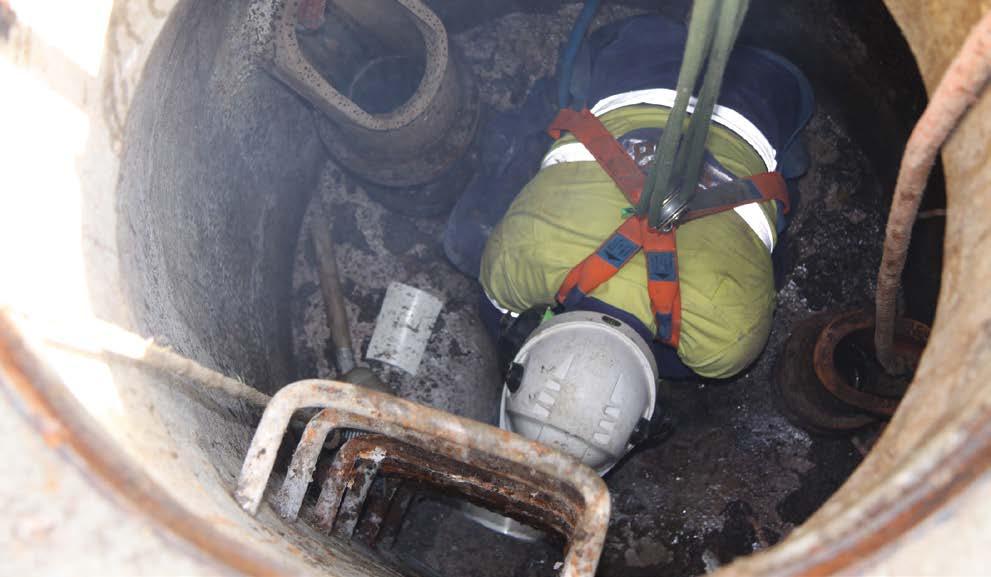
long-term contract allows Western Water to rehabilitate priority sewers annually, without the time and cost impacts of tendering the works under separate contracts.
It also means that sewers with poor structural condition can be rehabilitated quickly – upon receipt of CCTV data, thereby promptly and efficiently reducing the risk of sewer collapse for the business, customers, the community and the environment.
Through the long-term contract, Western Water can benefit from the knowledge of the specialist contractor, and build a good working relationship. This working relationship allows both Western Water and the contractor to better understand each other’s issues, as well as building agreed key performance indicators to measure the contract’s success.
This type of contract also provides the contractor with surety of work, and allows for a dedicated team (from both Western Water and the contractor) to deliver the project efficiently.
FACTORS TO CONSIDER
When embarking on such a project, it can be useful to get an idea of what strategies have been used before by
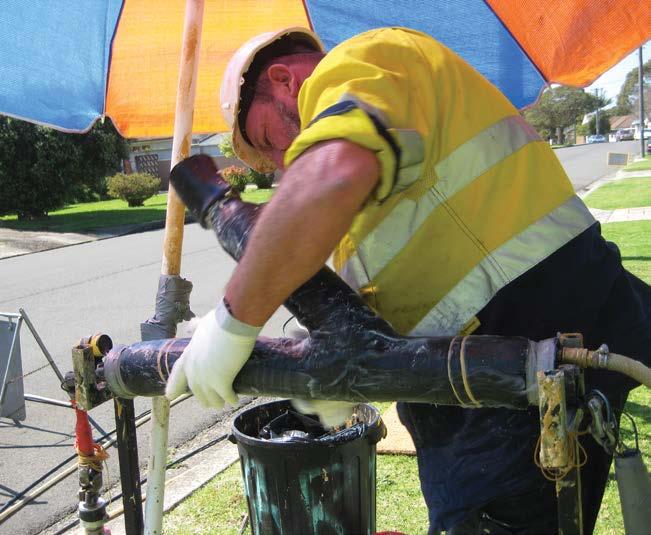
other companies, as well as which have been successful or unsuccessful and why.
Western Water sought feedback from numerous water corporations on their experience in delivering sewer rehabilitation contracts, and this knowledge was used in developing its own program.
The corporation says the interesting part of this program is that the more CCTV is conducted, the more issues are discovered. So far, Western Water has found a light pole, gas and Telstra lines through its systems, just to name a few.
47
PIPE RELINING
CUSTOMERS SEE BENEFITS OF BETTER DATA
As consumer sentiment towards smart meters begins to turn a corner, utilities and retailers are now beginning to take advantage of the increased data provided by advanced metering, and are demonstrating the benefits to customers by helping them to reduce usage, manage bills and manage demand.
The arrival of smart meters has dramatically increased the amount of information retailers can provide consumers about their own energy usage – in turn providing consumers with the ability to tailor their usage to reduce or change their consumption habits to reduce their energy bills.
Smart meters have also considerably changed the way distributors and retailers interact with their customers. The long-established system of consumption being read on an accumulation basis, with bills being a best estimate of usages for the time period they cover, seems antiquated when compared to the in-depth level of information retailers can provide customers through advanced metering infrastructure such as smart meters.
Smart meters provide data that enables customers to make choices about how much energy they use by allowing them to access accurate realtime information about their electricity consumption, instead of having to wait for their quarterly bill – which can result in ‘bill shock’, particularly in the peak demand periods of high summer and winter.
ACCESS TO ACCURATE INFORMATION
Using a web portal or an in-home display connected to their smart meter, householders and businesses are able to access accurate, detailed and up-to-date information about their electricity use. This information is helping consumers identify ways to save electricity, thereby reducing their energy costs. It also helps consumers to compare electricity pricing offers from competing providers to make sure they are getting the best deal.
It adds a completely new element to the retailer/customer relationship, and provides utilities with new opportunities in terms of billing cycles and customer relationship management.
For example, Origin Energy’s My Account function allows customers to easily pay their bills and manage their energy account online.
“Through the My Home Profile feature, customers can estimate what uses the most energy around their home,” said Origin Energy Campaigns & Partnerships Manager Stuart Osbourne.
“By responding to a series of questions about the appliances around
their home, customers are presented with a pie chart that estimates their expected energy usage by appliance category. Their profile is then compared with other homes of a similar size, and, where available, against their own actual usage data from their bill. My Home Profile then provides customers with personalised tips on how to more efficiently manage their usage.”
Additionally, through the Origin Energy Manager eligible Victorian customers with an activated smart meter can see how much electricity they are using, every day by the hour –within three days of use.
“Customers can also sign up online to EasiPay, which allows customers to pay their bills weekly, fortnightly or monthly, making it easy for customers to understand and control their energy account.”
And AGL has established AGL IQ, a new website that gives residential and small business customers the ability to track their energy usage, set goals to help lower their energy bills, and save on their energy usage with practical steps and targeted advice.
This website is available 24 hours a day, seven days a week and can be accessed from PC, smartphone
48
BILLING/CRM
and tablet devices. It caters to most residential and small business customers for gas and electricity, including customers with smart meters and traditional meters.
Customers use AGL IQ to: see how they use their energy, by tracking how much energy is being used and what the usage charges are; build personal energy saving action plans; and utilise energy saving tips to reduce energy usage.
EnergyAustralia meanwhile offers the eWise portal, a free online tool to help residential electricity customers understand how they use energy around their home, how they can reduce their usage, and how to benefit from real cost savings on their bills. By comparing similar homes in similar areas, the eWise portal can help customers take control of their energy.
By registering for the eWise portal, EnergyAustralia customers can view a breakdown of usage by household appliance, compare usage to similar homes in their area, create a savings plan, compare bills, get energy saving tips, access the portal any time and monitor electricity usage by year.
Eligible customers with a remotelyread smart meter can also forecast their bills for the quarter and monitor their electricity usage by day or by bill.
POWER PLANNING
Smart meters have overhauled the way customers see their energy bills, providing them with the opportunity to interact and understand their usage data for their own benefit. And it’s not just energy retailers who are providing customers with detailed information regarding their usage patterns.
The Victorian Government, through its Switch On initiative, has developed My Power Planner, an interactive price comparison tool that helps users compare offers from electricity retailers and find the offer best suited to their budget, lifestyle and needs.
My Power Planner can also help users understand the potential benefits of shifting using highelectricity use appliances to off-peak periods, through a flexible pricing offer. The tool includes simple instructions
and videos to guide customers through the steps.
By uploading their own smart meter data, answering simple questions to build an ‘energy profile’, consumers are able to engage with and understand their energy usage patterns, and utilise this information to their own advantage when it comes to their energy bills.
OPPORTUNITIES AND CHALLENGES
Any disruptive technology will face its challenges, and this has certainly been seen in the rollout of smart meters in Victoria. However, more than 90 per
cent of the rollout in Victoria is now complete with more than 2.5 million meters installed at homes and small businesses across the state.
Providing more detailed information about power use, new flexible pricing options, better reliability and an end to estimated bills, the benefits to distributors, retailers and consumers are evident and retailers now seem more confident in promoting these benefits to customers.

49
BILLING/CRM
THE METERING MENU
by Aaron Baker, Gentrack General Manager Smart World Solutions
While utilities may still be waking up to the reality of optimising the value of ‘Big Data’ from smart metering networks, the large metering technology players know that their metering and communications infrastructures are only one element of an entire smart grid. It’s what you do with that metering data that is the really smart stuff.
Many utilities tell me that they are already managing their meter data in an existing data warehouse. Or that third party meter owners are already providing them with aggregated data for retail billing processes. This is smart enough for what they need now, but what more can a specialist Meter Data Management (MDM) tool offer to these utilities?
Scalability for one.
Sure, that data warehouse is handling the data from a few pilot projects just fine. But will it stand up to a flood of data from a million plus meter registers, and how will it validate millions of half hourly reads? And how easy is it to quickly aggregate and extract that data for ‘real time’ or near ‘real time’ billing and in home display purposes?
And, of course, that aggregated billing specific data may not be enough in itself to enable a truly smart network.
INTEGRATING MDM AND CRM
Utilities can leverage the value of integrating meter and customer data to understand customer behaviour before engaging with a range of bundled products and services with associated savings and incentives. What customer wouldn’t want that?
Ultimately any utility, be it a retailer or distributor, should be thinking about how to unlock the potential of the data throughout their organisation.
Power theft detection and better outage management needs real-time analysis of consumption at end points, against metering data at transformer level. Smooth curves from aggregation
can often hide more obscure peaks and variations that signal something is up in the network. Peak load times may also change with the arrival of distributed generation and growth in electric vehicle (EV) recharging – peaks that might not be picked up by tracking and aggregating historic peak slots only. This is all of growing relevance for network companies trying to more accurately balance network load.
Retailers who use an MDM system are better able to take control of their customers’ meter data and the business rules that aggregate it. Ensuring those rules meet both regulatory requirements and their own business priorities makes legal, operational and marketing sense.
But investing in your own MDM system also makes a lot of financial sense.
I like to think of MDM as a double buffer between a range of advanced metering infrastructure (AMI) technologies and the back office systems that could use that data. We already know MDM is a data buffer, but as new standards evolve and new metering and communication technologies emerge, a configurable MDM system also becomes a financial buffer. It removes the need for otherwise expensive and time consuming rework that would be required if point-to-point interfaces had been developed.
So, should you opt for an MDM system from your metering vendor? After all, it’s often bundled as part of the overall business plan for an AMI deployment.
Not necessarily.

Waiting until you negotiate a full residential metering deployment contract before considering the value of MDM has its drawbacks. Putting in an MDM system before AMI gives a better audit trail of actual usage before smart meters and basic time of use-based billing is implemented for residential customers, which can help to counter the chorus of smart meter dissenters. Staff will also be confident with new processes and technology, and better able to handle the initial deluge of call centre queries resulting from AMI deployment.
And not all MDM technology is equal. A vendor’s metering technology may be proven but what’s the underlying DNA for its MDM solution? How flexible is its business logic and file formatting? Is it truly proven at high volumes and at what hardware cost?
Will there also be a cost with vendor lock in? With the energy and water markets in continual flux, an MDM system should be open enough to handle data from any smart meter technology.
Meter data management software is a specialised tool that, when integrated with CRM, will help utilities to optimise the returns from a smart grid deployment. Make sure the MDM software vendor you engage has the specialist staff to implement it, and ensure that the right level of planning around interval data optimisation is undertaken to get the most from your MDM investment.
50
BILLING/CRM

CITIPOWER AND
DISTRIBUTING VICTORIA’S ELECTRICITY
CitiPower and Powercor is Victoria’s largest electricity distribution company. Its network covers the Melbourne central business district, a large part of the Melbourne metropolitan region, as well as the major population centres across the central and west regions of Victoria including Geelong, Bendigo, Ballarat, Horsham, Mildura and Warrnambool. In all, our network services more than 1.1 million customers. CitiPower and Powercor is the only Victorian distribution company that services both capital city and regional customers.
PRIORITISING SAFETY
While all distribution businesses in the Victorian electricity industry have safety as a top priority, at CitiPower and Powercor we pride ourselves on our safety procedures, which we believe are the best in Australia.
THE SMART METER CHALLENGE
The electricity industry is dynamic: innovation in generation and customer demands constantly drive change. Many of these changes continue to occur as a gradual evolutionary process. Therefore, it is probably fair to say the biggest quantum change CitiPower and Powercor has undergone in recent years has been the rollout of the Advanced Metering Infrastructure (AMI), which is commonly known as smart meters.
The Victorian rollout began in 2009 and since then CitiPower and Powercor has installed almost 1.1 million smart meters in homes and businesses across our network. We have all but completed the rollout on time and on budget. Our program received a major tick of approval from the Australian Energy Regulator, which said it represented the lowest cost to consumers compared to those of other Victorian distribution businesses.
The AMI program means that meters can be accurately checked remotely, without the need for a meter reader
to attend a property. We can also re-energise and de-energise remotely, which saves money for customers. Customers can also access a variety of services which allow them to manage their electricity use more effectively. Another important function of the AMI system is that we can identify potential faults before customers are aware of them, increasing the network’s safety.
THE ENERGY STORAGE CHALLENGE
In April our CEO, Tim Rourke, attended the 7th Energy Storage World Forum held in London, and featuring more than 70 speakers from 25 countries covering a total of 50 topics.
CitiPower and Powercor is acutely aware that understanding and utilising energy storage is one of the key components to future viability in the energy industry.
Advice taken from the forum, and a briefing on ‘Europe’s biggest battery’ project which is being run by UK Power Networks (which, like CitiPower and
52
UTILITY IN PROFILE
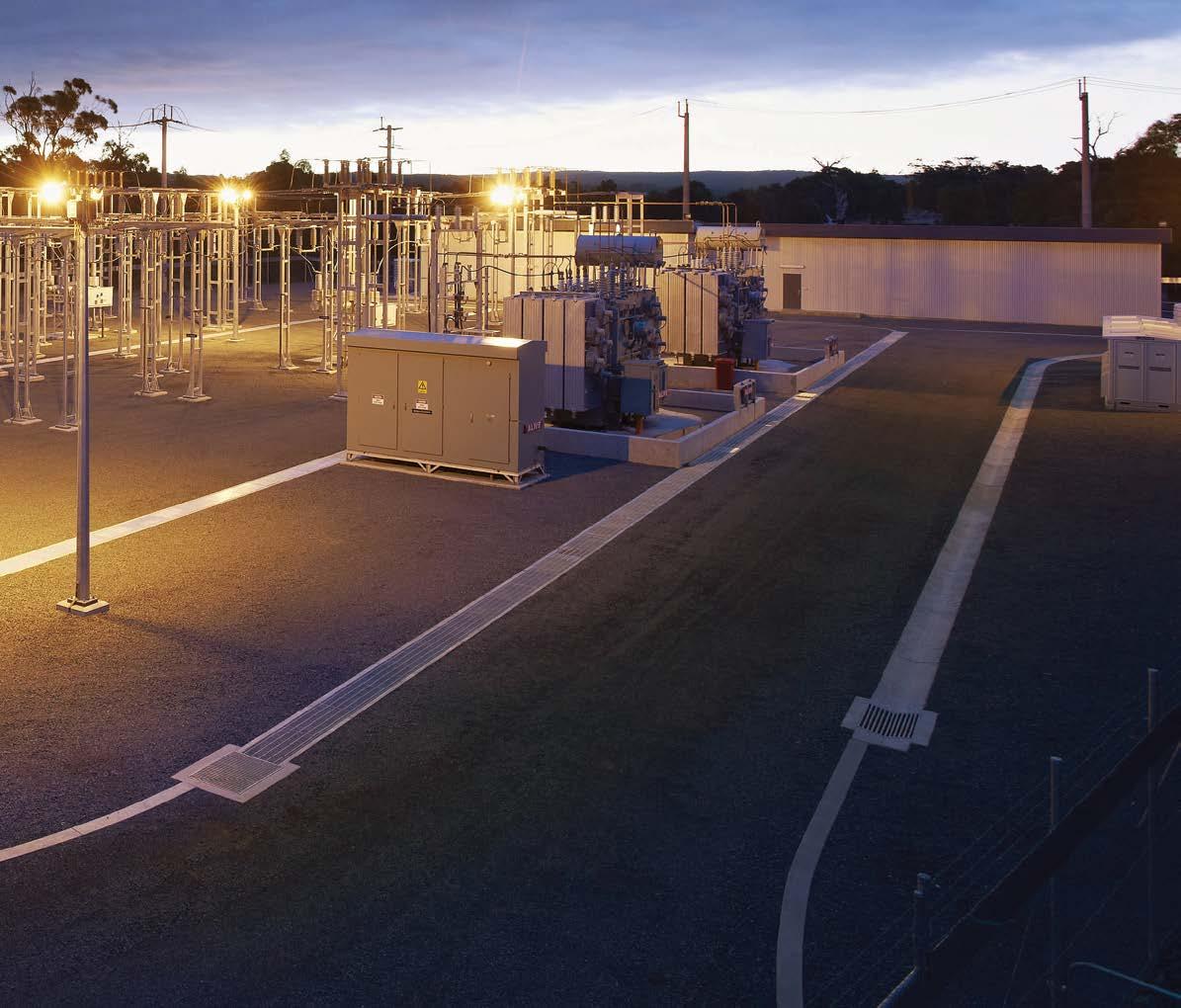
POWERCOR
Powercor, is a partly-owned subsidiary of Hong Kong’s Cheung Kong Infrastructure), will be presented to our executive management team.
We will then use this to evaluate the potential for our own investment in projects and trials in the energy storage field.
INSIDE THE ORGANISATION
It is unlikely that the make-up of the workforce employed by CitiPower and Powercor will radically change, or that we will require substantially more of a certain type of occupation. However, over the next five years and beyond, we will continue to focus on creating a diverse workforce that ensures we have the right skilled people to take us into the future.
This year we employed a record number of new apprentices and trainees – 49 across different areas. These included cable jointers, electrical fitters, electrical distribution design engineers and technical officers to name a few.
We understand the value of having experienced hands on deck, and we have many workers with decades of experience in the electricity industry. Their knowledge and experience is invaluable to our business. However, we understand these people will not be here forever and that we must have generational renewal, so that all their experience can be passed on and built on so CitiPower and Powercor can continue as Victoria’s leading distribution business.
FUTURE OUTLOOK
Society will always require electricity, so we will still be here going strong.
However, as mentioned, the electricity industry is constantly evolving, which means CitiPower and Powercor must adapt to changes and challenges driven by customers and technology, as well as strive to be ahead of the curve and drive changes to benefit our business and our customers.
Obviously, one of the main factors that will determine what we look like in ten years time is the rise in distributed generation. More and more people are installing solar panels in their homes and businesses, which limits our role in the distribution of power but increases our challenges.
As a result, we recognise we need to move outside the purely regulated model we currently exist in and provide more diversified services in the unregulated space. This can include services such as maintenance, installation, monitoring of meters, asset inspection and compliance auditing. As the industry continues to evolve, CitiPower and Powercor will also look at opportunities in the co-generation space, helping industry and small communities find combined generation and distribution solutions to their energy needs.
CITIPOWER AND POWERCOR IN THREE WORDS?
Safety, reliability, performance.
53
CABLES CONNECT INCREASED CAPACITY
CitiPower and Powercor Australia’s Metro and CBD Security of Supply Projects represent major investments in the company’s distribution network.
Together the projects are aimed at providing increased electrical capacity to meet a significant increase in energy demand in Melbourne’s Central Business District by upgrading the BouverieQueensberry Zone Substation (BQ) and increasing the level of supply security at CitiPower’s 66kV network level across the CBD by upgrading Victoria Market (VM) and Waratah Place (W) Zone Substations, and installing additional 66 kV sub-transmission links.
In simple terms, the project scope of works includes the design, supply, delivery and installation of a high voltage 66kV underground cable system, and Daly’s Constructions (Australia) has successfully delivered the first stage of the work (Metro 1) and are well into delivery of the second stage.
Daly’s contract was to manage a full turnkey project from survey and design right through to pre-commissioning of the circuits. This has included all aspects of the work required to provide:
• Detailed design report of the cable system including calculating circuit ratings determination of earthing, cross bonding and sheath voltage limiting arrangements;
• EMF baseline and EMF mitigation measures as required to meet the principles of prudent avoidance;
• Detailed native soil and backfill TR sampling and analysis;
• Trench profiles and depth spacing charts;
• Joint bay design, including

design of a satisfactory system for mitigation of thermomechanical movement;
• Supply and delivery of approximately 35,000m of 1,600mm2 XLPE Cu conductor for Metro Stage 1 and a slightly greater quantity for Metro Stage 2. Provision of the power cable required a full and comprehensive system type test to ensure compliance with CitiPower’s very high acceptance technical standards;
• Supply and delivery of all accessories: link boxes, joints and earth systems;
• Detailed civil design ensuring constructability of circuits through the Melbourne CBD and inner northern suburbs;
• All work necessary to obtain approvals from the three metropolitan councils involved together with Vic Roads, Yarra
Trams and all other affected stakeholders;
• All trenching, conduit installation, backfill and permanent reinstatement;
• All HDD works necessary along the route;
• Design and construction of more than 20 cable joint bays
• Installation of all power cables and performing cable jointing and terminating;
• Pre-commission testing;
• Provision of operating and maintenance manuals.
Powercor Network Services awarded the Prime Contract for Stage 1 of Metro and CBD Security of Supply to Daly’s Construction in 2010.
The Stage 1 scope of work included:
• BQ-VM No. 3 66 kV feeder: dual circuit connecting BQ Zone Substation (BQ) in Carlton to Victoria Market Zone Substation (VM) in North Melbourne;
54
CITIPOWER AND POWERCOR UTILITY IN PROFILE
WORKS TOOK THE TEAM FROM DALY’S INTO MELBOURNE’S CBD.
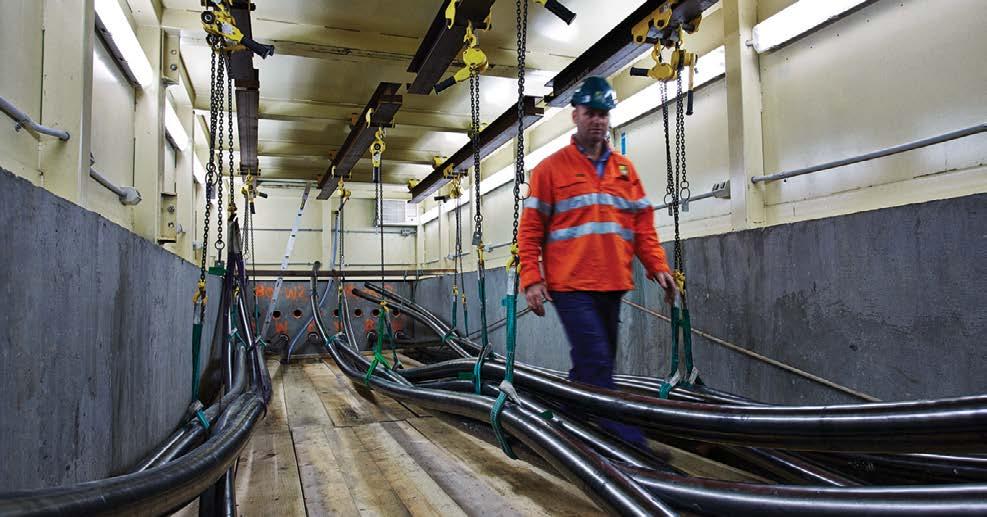
• BTS-VM No. 1 66kV feeder: single circuit connecting Brunswick Terminal Station (BTS) in Brunswick to VM Zone Substation in North Melbourne;
• BTS-BQ No. 1 66kV feeder: single circuit connecting BTS in Brunswick to BQ in Carlton. Metro and CBD Security of Supply –Stage 1 required approximately 13km of conduit and 66kV power cable with an approximate value of $28 million. That stage was completed successfully in 2012 within budget and on time.
The Prime Contract for Metro and CBD Security of Supply - Stage 2 was awarded to Daly’s in 2013. Metro and CBD Security of Supply – Stage 2 is also a full turnkey project and the scope of work requires provision of:
• BQ-VM No. 1 66kV feeder: single circuit connecting BQ Zone Substation in Carlton to VM Zone Substation in North Melbourne.
• BTS-BQ No.3 66kV feeder: single circuit connecting BTS in Brunswick to BQ in Carlton
• BQ-W No. 2 & BQ-W No. 3 66kV feeder: dual circuit
connecting BQ Zone Substation in Carlton to W Zone Substation in Melbourne’s CBD.
The BQ-VM No. 1 feeder was installed and commissioned successfully in October 2013.
The BQ-W No.2 & BQ-W No.3 66kV feeder is currently under construction. Conduit installation was completed in May this year; cable installation is also completed and at the time of printing cable jointing was scheduled for completion by the end of June 2014.
The civil works for the BTS-BQ No. 3 feeder are well progressed and will continue into 2015. Cable installation is scheduled to commence in February 2015 with cable jointing and testing to commence in June 2015. Precommissioning testing is scheduled for September 2015 which will be one month ahead of the required end date in October 2015.
The Metro and CBD Security of Supply – Stage 2 will require approximately 13km of conduit and 66kV power cable with an approximate value of $30 million. Based on current progress Daly’s is very confident the project will be delivered successfully in
2015 within budget and on time. Powercor Network Services Program Manager Kristofer Amato commended Daly’s Constructions. “I have found Daly’s Constructions to be very professional in their approach to managing these very large and complex projects; they have always been conscious of the importance of the work to CitiPower’s operating environment and needs and both Metro and CBD Security of Supply Stages 1 and 2 projects have been delivered safely and to a high quality standards within the CitiPower’s required timeframes and within agreed budgets.”
Daly’s Constructions has built a very strong association with CitiPower and Powercor since they were established 1994 and prior to that with the SECV when it was the Government-owned and sole generator, transmission and distribution organisation in the state. Daly’s is a family-owned business which commenced in 1971 when Mr Gabe Daly established the company to install conduit and cables in new estates throughout the growing and expanding metropolitan Melbourne.
55
UTILITY IN PROFILE
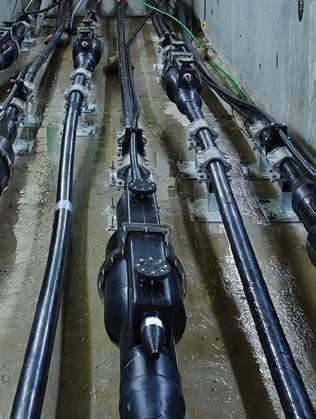
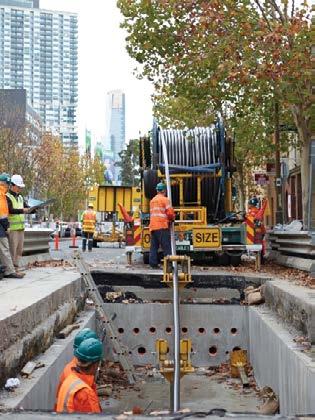
The confidence in this relationship has been reinforced with the recent award of the Major Civil and Underground Cable Services Agreements commencing in July this year.
This effort was rewarded this year when Powercor Network Services was awarded the Prime Contract for the relocation of the 66kV sub transmission feeders for Waratah Place Zone Substation redevelopment project to Daly’s Constructions. Once again this contract is on a turnkey basis for design, supply and delivery of cables, joints and accessories required to do the job.
The scope of works includes:
• Relocation of the current fluid filled 66 kV feeders from VM Zone Substation in North Melbourne to W Zone Substation in Melbourne’s CBD to Heffernan Lane Zone Substation (WA) in Melbourne’s CBD;
• Cutting and extending the current fluid filled Flinders Ramsden (FR) Zone Substation in Melbourne’s CBD to W Zone Substation in Melbourne’s CBD onto the BQ-W No. 2 and No. 3 cables;
• Cutting and extending the
current fluid filled McIlwraith Place (MP) Zone Substation to W Zone Substation in Melbourne’s CBD onto the BQ-W No. 2 and No. 3 cables;
• Cutting and capping of the Little Bourke (JA) Zone Substation to Waratah Place (W) Zone Substation in Melbourne’s CBD.
The FR, JA, MP, VM and WA Zone Substation 66kV cables are oil filled cables and the scope calls for the detailed design of the cable system, including modifications to the oil reticulation system. Daly’s will be sourcing all materials and managing all cable jointing works including precommissioning testing.
For the VM Zone Substation in North Melbourne to W Zone Substation 66kV circuit Daly’s will be performing two three core oil filled cable joints.
For the FR Zone Substation in Melbourne’s CBD to W Zone Substation and MP Zone Substation to W Zone Substation circuit Daly’s will be performing six single core 800mm2 oil filled cable to single core 1,600mm2 XLPE transition joints. This will be the first time oil to XLPE transition joints will be performed in Victoria for CitiPower and Powercor.
Daly’s Constructions is continually
striving
to increase their capability and
“I have found Daly’s Constructions to be very professional in their approach to managing these very large and complex projects; they have always been conscious of the importance of the work to CitiPower’s operating environment and needs and both Metro and CBD Security of Supply Stages 1 and 2 projects have been delivered safely and to a high quality standards within the CitiPower’s required timeframes and within agreed budgets.
– Kristofer Amato, Powercor Network Services Program Manager
the quality of service they offer their clients. They look forward to working together with CitiPower and Powercor to deliver these challenging projects and new projects into the future.
CONTACT DIRECTORS MARK OR NATHAN DALY IN MELBOURNE
+61 (3) 9360 9485 AND MALACHY DALY IN BRISBANE +61 (7) 3907 0001.
YOU CAN ALSO FIND MORE ABOUT DALY’S CONSTRUCTIONS ON WWW.DALY.NET.AU
56
JIM MARTIN: WATER REFORM EXPERT REWIRES
Jim Martin, one of the water industry’s most experienced reform experts, took over the helm of the WIOA board in March 2013. Recently Utility met with Jim to discuss his first year in the role, and get his thoughts on the challenges that lie ahead for the Australian water industry.
Jim’s career in the water industry has been impressive and wide-ranging, and the last 30 years of his career have been spent in management roles in the water industry – notably as the CEO and Managing Director of Ovens Water Corporation/North East Regional Water Corporation in Victoria. In addition Jim has also been heavily involved in the reform of state water industries in Victoria (in 1994) and Tasmania (in 2008-09).
Jim’s first year at WIOA has been a year of observation and understanding of the organisation and the logistics of its operations.
“It has been a stimulating year, and a most enjoyable year, in which I have been able to catch up with many colleagues, friends and acquaintances of the water industry and for the first time to meet people involved with WIOA,” said Jim.
“We conducted a risk management workshop, a Strategic Planning Workshop and implemented a Board Governance review including
documenting a number of new policies and procedures to guide our activities.
“Each of the workshops provided me with some very important insights into the thinking of the organisation, and I hope the sessions also provided some value to the Board Directors, the Committee and Advisory Committee leaders who were involved in each workshop.
“As for changes in the future, we should see a larger involvement of members through our interstate advisory committees and their statebased events. We believe a more localised input from members into the activities in each state will provide that right flavour for growth and ownership that we saw in the development of WIOA in Victoria in the early years.”
Understanding that water quality is a public health responsibility, in conjunction with the Victorian Department of Health, WIOA has also instigated the Water Treatment Operator Certification scheme in Victoria. WIOA has built up the knowledge and appropriate processes to accommodate
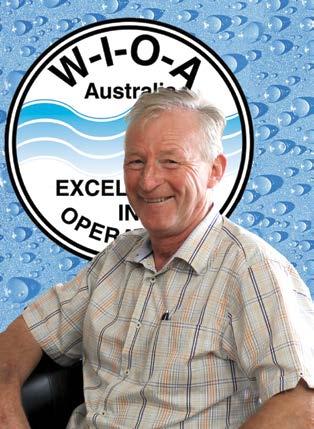
the recognition of operators and to secure their careers in Victoria. Recognising that there is a need for this to happen throughout Australia, WIOA is now working collaboratively with a number of organisations to implement certification under the National Framework in other states.
“WIOA specialises in the education and skilling of operators, and it is appropriate we continue this through providing a certification process. We see this activity as an important future role of our responsibilities,” said Jim. Growing membership has also been a focus for Jim in his new role. Member numbers are growing on an annual basis, and WIOA now has more than 2,200 members, including a number from overseas.
57
WASTEWATER
“The advisory committees in each state are important in promoting the benefits of membership and we usually see a jump in member numbers once operational people experience our events like our training seminars or the conferences,” said Jim. “We have also continued to build a strong relationship with our colleagues in New Zealand and will support them as much as we possibly can.”
A NEW DIRECTION
According to Jim there are many parallels between his new role with WIOA, and previous roles in the water industry, such as working with a team in achieving objectives.
“The main difference I have found as a Board Chairman, the role differs inasmuch as it becomes more of an oversight role and one that is more of a sounding board for the executive and directors. I hope that my role can instil some learnings I have acquired over 30 years in water management.
“The product is naturally different as well – in the past, the concentration was primarily on drinking water and sewerage services, along with assisting government framing legislation.”
Jim said that part of his role with WIOA that he finds particularly satisfying is being able to experience and participate in the achievements of the water industry operators. “The water businesses rely heavily on their efforts, and they are also the people that relate directly with the customers.
“I am also enjoying working with the other Directors and the WIOA staff. To see the dedication and effort everyone puts in, shows why WIOA is the success it is.”
CAREER HIGHLIGHTS
For Jim, the career highlights that stand out include his participation in the Victorian water industry reform program instigated by Jeff Kennett in the 1990s.
“My career as a CEO began in 1994 with my appointment as CEO of Ovens Water, and three years later I was appointed CEO of North
“Moving responsibility for water management out of local government and instigating regional water authorities with the appropriate critical mass provides a more professional approach to water management.
To have skilled-based boards conducting the corporate governance and initiative gave the water industry a professionalism that was previously missing.
East Region Water Authority. At that point in time, there were well over 200 water and sewerage entities in Victoria, and under the reform program, this was quickly reduced to just 15. The massive change during this era, while it created a lot of anxiety, also provided many of the highs in my career.”
Another highlight was a water industry tour of America in 1988, as it provided significant insight into the variations of water management. Added Jim, “I believe it helped the reform program in Victoria in the 1990s, in that we were able to impart some of that knowledge into the Victorian legislation.”
Jim said his experience with the Institute of Water Administration (IWA) in Victoria has also been beneficial and enjoyable. “The IWA is very similar to WIOA in that it concentrates its education at the management level. I served two years as President and received the John Robbins Award, which recognises the distinguished contribution made by an individual to the Victorian water industry; and the Barry Leach Award, which is the highest industry award for contribution to the water industry.”
Upon retiring in 2008 from North East Water, Jim enjoyed some time in Tasmania assisting with the state’s water reform program.
“Currently my appointment as chair of WIOA is another highlight. While I was CEO at North East Water,
I saw the good work that WIOA did for operators and experienced many conferences in which my staff participated and enjoyed their recognition and success. I know that each individual’s career is benefited by recognising the operators and involving them in WIOA. To retire and be approached to fulfil the role that was so ably and professionally undertaken by Ron Bergmeir is certainly a humbling experience.”
INDUSTRY REFORM
Given Jim’s impressive catalogue of experience with water reform in Victoria and Tasmania, he has become an advocate for this type of change across Australia.
“Moving responsibility for water management out of local government and instigating regional water authorities with the appropriate critical mass provides a more professional approach to water management. To have skills-based boards conducting the corporate governance and initiative gave the water industry a professionalism that was previously missing.”
In recent years Jim has also been called upon to share his expertise in water reform in Queensland. “With the appointment of Campbell Newman as Premier in Queensland, together with the water reports published by the Water Commission and the Productivity Commission, regional Queensland felt it needed to assess different models
58
WASTEWATER
of governance in water administration. I was invited to provide a number of presentations and advice regarding my experience in Victoria, study tours of America and New Zealand, and my more recent experience in Tasmania. I am an advocate of the reform in Victoria and Tasmania. Such an approach is definitely a beneficial way of tackling the major infrastructure issues and regulation of the water industry in a very efficient manner that benefits taxpayers.”
On the topic of privatisation, Jim is firmly of the belief that it is not the right option for the Australian water industry. “After the experience in 1998 of the Sydney suspected Giardia and Cryptosporidium outbreak, I am firmly of the opinion that the responsibility of water supply is not for private enterprise. It is a public health responsibility and if the water industry were to run under a privatised
arrangement, the drivers and outcomes could be distorted.
“However, I feel that there is a role for private undertakings through infrastructure alliances, partnerships and the like, but not in the day-to-day management of the water industry.”
TECHNOLOGICAL ADVANCES
Jim has attained many insights into the technological advances that the industry has achieved in recent years, with many of the changes seen over the years nothing short of amazing.
“I am amazed with the range of technologies created and adopted over the years. The computer era and the development of tablets and smartphones has made an enormous difference to the way a modern operator does their job.
“Water treatment technology has improved immensely over the years and in many cases, the operator skill level required has increased. Operators have an even more vital public health protection role now.”

THE ROAD AHEAD
As for the future outlook for the Australian water industry, Jim believes there are many challenges and changes still to come.
“Currently water corporations are faced with operational cost reduction pressures. The long drought revealed many water supply security failures of systems throughout Victoria; and many bushfires have caused havoc to water quality standards in many townships. Most of these have been addressed, or are currently being addressed. Nevertheless, it has come at a cost to customers. With electricity and gas prices all increasing above CPI levels, at the same time the public have been hit with these extra water costs, and spending must be curtailed.
However, Jim says he is disappointed that the water industry cannot convince the public of the benefits of turning wastewater into a drinkable state.
“It is a matter of the mind,” he admitted. “Some communities could benefit by such an approach and in some areas, this approach would resolve many resource issues and would provide a sustainable outcome.”
“Many corporations are attempting to overcome this situation by restructuring and looking at their business with the view of creating more efficiencies. WIOA has an important role through our conferences and exhibitions. Many of our exhibitors provide access to new products, technology and services which can assist water businesses increase their operational efficiency and save money. Therefore, there will be a continued embracing of new and improved technology.”
Jim also believes that in the years to come, more mergers may happen throughout the states, as history of reform in Victoria has shown that critical mass works.
“While there are attempts in both New South Wales and Queensland for water reform, there is still a long way to go. I know these states are larger and have a different history of politics. However, I do not think that remoteness is an excuse for not creating the previously mentioned critical mass. Technology has provided an answer to this.”
With Jim’s extensive and varied experience across the Australian water industry, there seems little doubt that his knowledge and expertise will continue to help guide the way.
59
WASTEWATER
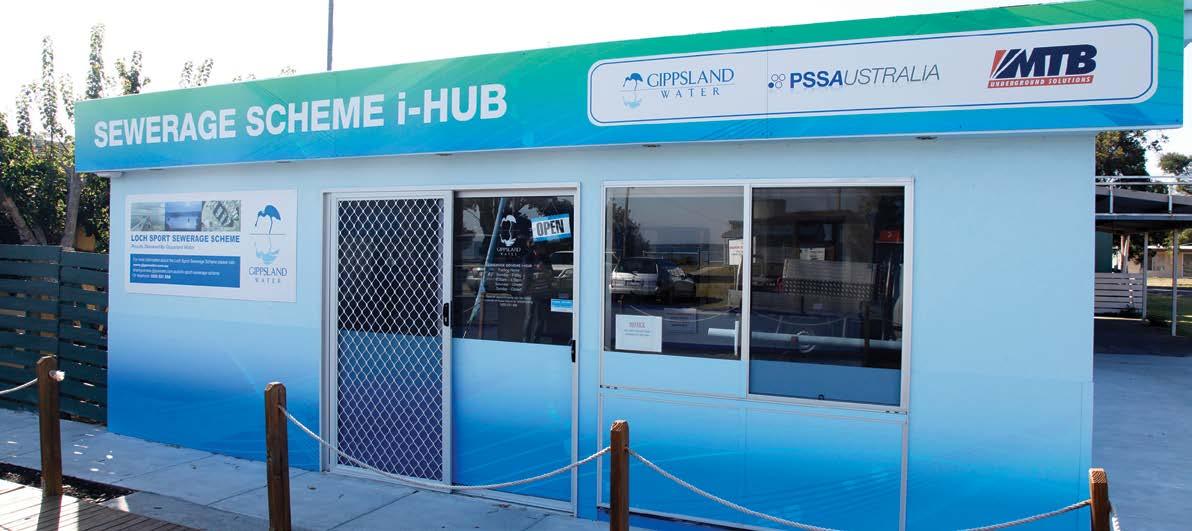
BRINGING PRESSURE SEWER TO SMALL COMMUNITIES
Gippsland Water’s latest project, a 2,700 property sewerage scheme in Loch Sport, Victoria, will resolve environmental and public health concerns in a unique area adjoining Ninety Mile Beach and Gippsland Lakes.
The Loch Sport Sewerage Scheme is the third backlog sewerage scheme Gippsland Water has delivered to small waterfront communities in the past six years. This project has followed delivery of similar schemes in Seaspray, also on Ninety Mile Beach, in 2008; and in the Coongulla/Glenmaggie townships adjoining Lake Glenmaggie near Heyfield in 2013.
Gippsland Water’s Manager Major Projects Jim Somerville said, “Each community and scheme has been bigger than the previous and each has
had its unique mix of challenges. What is common, however, is that each scheme is as much about connecting with the community as it is about the planning, design and construction of the scheme.
“From our own research, experience and customer feedback, we found that having an early and ongoing physical presence in Coongulla/Glenmaggie was the most efficient and cost-effective way to connect with customers, which later resulted in early and high rates of connections to the scheme,” continued Mr Somerville.
“We wanted to take the same approach to the Loch Sport Sewerage Scheme, but do it bigger and better – although that was not an easy task, as the Coongulla/Glenmaggie scheme was very successful, with nearly 90 per cent of all Coongulla/Glenmaggie residents connected to the sewerage scheme within the first nine months.”
In December 2013, Gippsland Water and on-lot works contractor, Pressure Sewer Services Australia (PSSA), established a dedicated project shop front on the foreshore precinct in Loch Sport, known as the i-Hub. The i-Hub is
60
THE LOCH SPORT SEWERAGE SCHEME I-HUB. WASTEWATER
Each scheme is as much about connecting with the community as it is about the planning, design and construction of the scheme.”
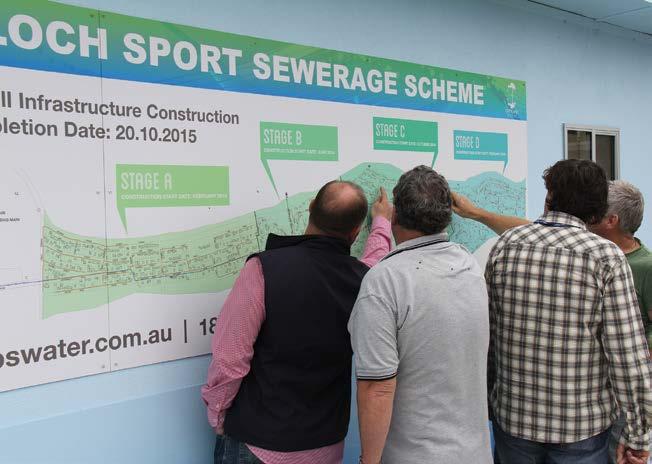
open Monday to Friday and weekends by appointment.
“Essentially it is a face-to-face, one-stop shop for all customer enquiries about the scheme and the customer connection process,” said Mr Somerville.
Bill Klein from the Loch Sport Community Reference Group has praised the i-Hub and the service that it offers to local residents. “Gippsland Water staff and contractors have been fantastic,” he said. “I have had nothing but positive feedback regarding the project team’s approach to the community.”
This has been confirmed by the rate and high level of positive response from property owners during the individual property design process.
THE NEXT PHASE
With the 30km sewer main from Dutson Downs to the edge of town almost complete, work has begun on installing pressure units on local’s properties. This marks a significant milestone and the next phase of the $40 million Sewerage Scheme.
Mr Somerville said “We’ve had more than 85 per cent of property owners agreeing to where they want the pressure unit to go on their property, which is a fantastic result.”
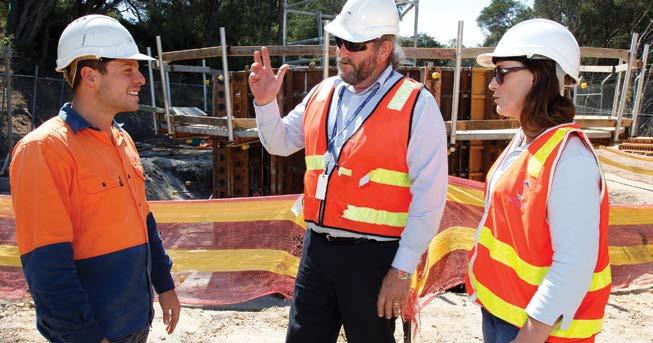
Due to the scale of the project, property infrastructure and connections will be rolled out in four stages; Stage A, B, C and D.
Customers in Stage A will be the first customers to have infrastructure installed on their properties. Residents in Stage B, C and D will follow progressively over the next 18 months.
Connecting homes and businesses to the sewerage scheme is the key objective of the project, resolving environmental and public health concerns relating to septic tanks.
Gippsland Water will continue to provide homeowners and businesses
with support throughout this period to assist connection to the scheme by October 2015.
The Loch Sport Sewerage Scheme is part of the Victorian Government’s Country Towns Water Supply and Sewerage Scheme Program, which listed Loch Sport amongst 35 priority towns to be provided with water or wastewater services.
For more information on the Loch Sport Sewerage Scheme and the i-Hub, visit www.gippswater.com.au or call 1800 631 688.
61
LOCALS CHECK OUT THE MAP FOR THE SCHEME.
WORKS ON THE SCHEME ARE ALREADY UNDERWAY.
WASTEWATER
PRESSURE SEWER INNOVATION Partner
In response to the needs of the Australian market for a cost saving pressure sewer pump, Aquatec listened to customer feedback to develop a maintenance free solution for the Australian Pressure Sewer market that challenged traditional boundaries and extended pump life by two times.
Capable of handling higher flows to help scour reticulation lines while providing significant whole of life efficiencies, the OGP+ has set a benchmark standard in residential, commercial and industrial pressure sewer systems. Featuring the International Standard IP68 Submersible motor, the OGP+ may be operated for extended periods without damage or periodic maintenance to rotor, stator and seals.
CENTRIFUGAL GRINDER PUMP CAPABILITIES
• Withstands floods from ground water and storm water ingress
• Fully submersible up to 9 metres
• Due to closer tolerances in cutter, all waste is
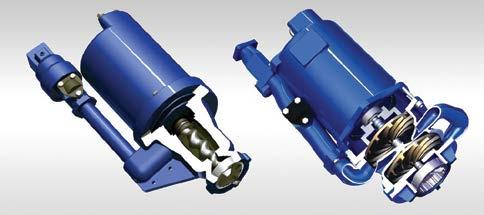
processed and odour issues are prevented.
• Recessed vortex impellers for higher flows with reduced wear over time
• Superior starting torque to provide greater grinding capability
• Reduced maintenance costs compared to a PC pump
• Increased lifespan; lower whole of life costs
• Capable of operating at 60m continuously
• Available in single phase and three phase
DIFFERENCES BETWEEN A PC PUMP AND CENTRIFUGAL PUMP
PROGRESSING CAVITY PUMP
High rate of friction and wear on the rotor and stator –these components rely on friction between each other to seal against the developed pressure; the friction interface of a PC pump is continually wearing.
Due to length of rotor and stator, shaft overhang requires greater tolerance in cutter grinder.
Requires high torque motor for starting, to allow the pump to generate a series of high-pressure pulses, and this exponentially decreases stator life.
Susceptible to wear due to abrasion from grit, sand and other hard particles.
CENTRIFUGAL GRINDER PUMP
Does not have the continuous wear characteristics of a PC pump. Outlasts PC pumps by 6 times in extended wear tests.
When operating against a closed valve or blocked line, the result is pressure higher than design limits and accelerated stator wear.
Due to less shaft overhang, the closer cutter tolerances give greater ability to cut fibrous materials such as baby wipes.
Requires little torque on startup, there is significantly more torque available on starting to assist with grinding.
Vortex impellers within pump casing capture any solid particles and move them out of the casing discharge. Only 10% of particles come into contact with the impeller or casing, dramatically reducing the potential for abrasion and wear.
Capable of running continuously at high (shutoff) or low heads with no damage.
62
0.5 2.0 1.0 1.5 2.5 Litres/Second Metres/Head 70 60 50 40 30 20 10 0 Aquatec OPG + Pump Typical PC Grinder Curve 50Hz AQUATEC OGP+ FEATURES & BENEFITS.
Solutions
A PROGRESSING CAVITY PUMP AND A CENTRIFUGAL PUMP.
WASTEWATER
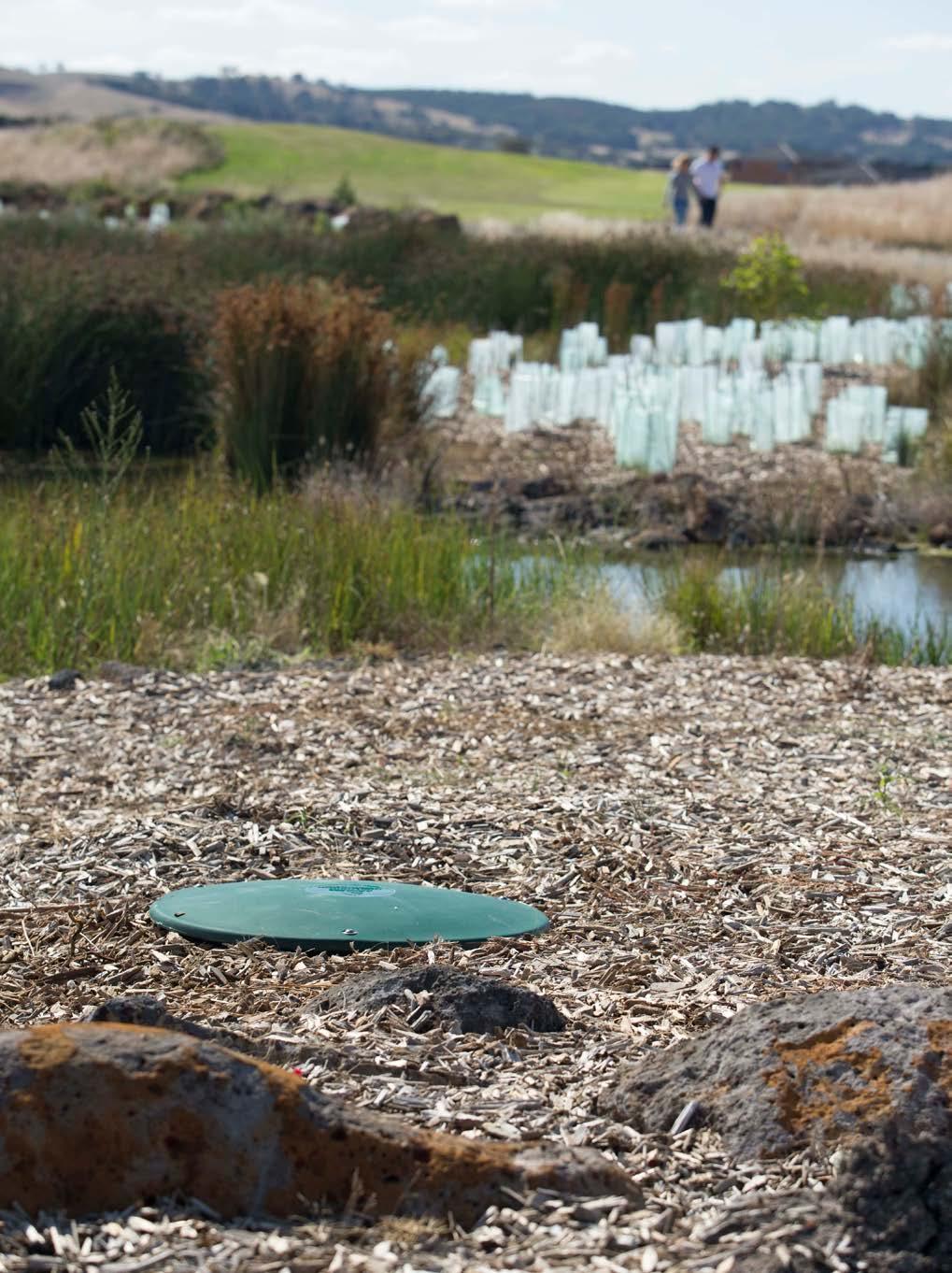
Pressure sewer specialists
• Simplex • Enviroplex
• Duplex • Triplex
Aquatec’s Pressure Sewer Systems are designed to blend into surrounding environments, making them ‘out of sight, out of mind’ for the end user.
• Domestic, commercial and industrial applications
• Flexible, light and easy to install
• Moulded inlet stubs
• Low profile polyethylene covers
• Zero scheduled maintenance
— Water Innovation Partners 1300 088 555 aquatecenviro.com.au

PIPELINE REHABILITATION INNOVATION IN GAS
64
PIPE RELINING
Jemena has recently announced plans to make some key upgrades across its NSW gas network, proving that gas pipelines can be given a new lease of life with the right relining technology.
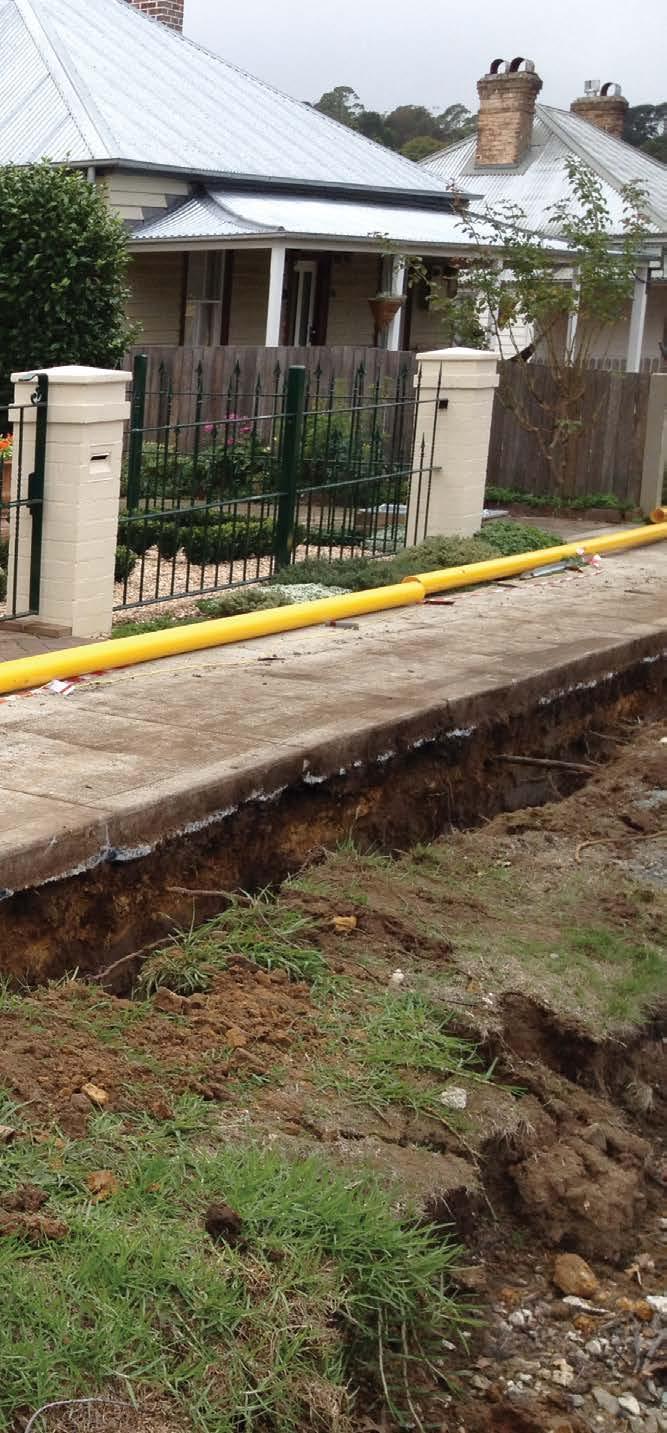
In Bowral, in the state’s Southern Highlands region, the utility recently embarked on a project to upgrade the town’s gas network, rehabilitating 11km of gas distribution mains using a technique known as gold-lining.
The rehabilitation program involves inserting modern, high-density nylon piping into existing gas mains – such as old cast iron mains and old high-density polyurethane (HDPE) gas mains.
This process, which derives its name from the yellow colour of the new piping, reduces the need to dig trenches in the street. This trenchless technique also minimises safety and environmental risks as work is often carried out in the vicinity of busy roads and other utility infrastructure.
By undertaking the rehabilitation process, Jemena is able to upgrade the capacity of the network – for example from 7 kilopascals (kPa) to 210kPa of pressure. This also results in the replacement of any existing customer’s meter set, and in some cases, the service pipe from the street to the home.
By increasing pressure in the Bowral gas network, Jemena is able to increase supply in the event of existing and future customer demand, and to cope with the customers using new gas related-technologies, such as continuous flow water heating systems.
MANAGING THE NETWORK DURING REHABILITATION
Jemena has been managing the process of rehabilitating the Bowral gas network by rehabilitating sections of approximately a few hundred metres, or one street at a time. Generally such work takes only a day, so only those customers in a particular section or in a particular part of the street will be without gas supply until such time as the work has been completed.
65 A 110 MM NYLON MAIN PRIOR TO BEING LAID AS PART OF THE BOWRAL REHABILITATION PROJECT. PIPE RELINING

ON THE REHABILITATION AGENDA
The Bowral rehabilitation project is one of many that are part of Jemena’s $810 million investment over a five-year period to upgrade and extend the Jemena Gas Network. This investment is aimed at ensuring more homes and businesses can enjoy the benefits of natural gas, ensuring the reliability and integrity of gas supply to homes and businesses and at meeting the growing demand for natural gas as customer numbers grow each year.
“Each year we add another 30,000 customer sites to the Jemena Gas Network in New South Wales. Since 2005/2006, the total number of homes and businesses connected to the gas network has increased by 160,000,” said Mr Bowden.
For commercial or vital services such as hospitals, Jemena For commercial or vital services such as hospitals, Jemena is able to maintain gas supply through alternative supply methods. Standard practice is to notify customers on three separate occasions before commencing any works – one month prior, 14 days in advance, and again the night before work commences.
Planning is essential in order to maintain supply to customers while upgrading the gas network. The work is highly specialised with only a handful of contractors able to carry out the works.
“Rehabilitation of the Bowral network will minimise the likelihood of gas leaks or a loss of gas which sometimes happens when these old cast-iron pipes become rusted or the old HDPE gas mains start to crack,” said Peter Bowden, Jemena’s General Manager, Gas.
“Rehabilitation will also ensure the Bowral network is able to cope with growth in demand for natural gas which is driven by the increasing number of homes and businesses in the area using natural gas and the increasing use of gas appliances,” he added.
IMPROVING GAS SUPPLY IN SYDNEY’S CBD
In addition to the rehabilitation program taking place in Bowral, Jemena has also announced plans to lay a new gas main and build a new gas interconnection facility to ensure the reliability of supply to 90,000 homes and business in the Sydney CBD and inner-city suburbs.
While construction activities will only start in early to mid-2015, during May Jemena has been making contact with residents in all streets that will be affected by the work.
Since 1987, Jemena has rehabilitated almost 6,000 km of gas mains – which represents almost a quarter of the 25,000 km-long Jemena Gas Network which distributes natural gas to over 1.2 million homes and businesses throughout New South Wales. Jemena maintains a detailed seven-year project plan with an overall view to 20 years. In keeping with the plan, sections of Sydney and Blacktown are next in line for rehabilitation works. Jemena places high importance on maintaining/ upgrading their network, because it is their responsibility to ensure its customers receive safe and reliable supply of gas and to replace and upgrade ageing parts of the network. This is why the utility invests in laying new gas mains (approximately 200km of new mains each year to accommodate for growth in customer numbers) and why they operate a continual program of rehabilitation of existing assets.
“This is part of our standard approach to engaging with stakeholders – be they existing customers or residents whose homes will be passed by the new gas mains,” said Alf Rapisarda, Jemena’s Executive General Manager, Networks and Pipes.
“Jemena will start sending a notification to all affected residents about the project in early May. This notification will include a survey form that residents can fill in and return to Jemena. This survey form is designed to help Jemena better understand each resident’s situation before we start work on the project next year.
“Our aim with projects such as this one is to ensure reliability of gas supply to homes and businesses, as well as to cater for future growth in demand for natural gas from industrial, commercial and residential customers,” said Mr Rapisarda.
The new gas main and interconnection facility will built using open-cut techniques, with contractors involved in the project currently being finalised.
66
PIPE RELINING
LINDON BALL (LEFT), THE BOWRAL PROJECT MANAGER; ANDY MAGRO, THE CONSTRUCTION SUPERVISOR; AND NATHAN HOMES, JEMENA’S AREA MANAGER FOR BOWRAL AND WOLLONGONG, CELEBRATE THE SUCCESSFUL COMPLETION OF THE PROJECT.

PLASTIC PIPE CONNECTS AUSTRALIA
by Mark Heathcote, Plastics Industry Pipe Association of Australia Executive Manager
When it comes to plastic pipe most people immediately think of the plastic pipe systems around their home – PVC drain waste and vent systems, stormwater pipe and electrical conduits. An increasing number of Australians would also recognise pipes made from PEX, multilayer composites and polybutylene, used for gas and hot and cold water pipes inside their homes. What many may fail to appreciate is that every major utility supplying critical services to homes and businesses relies heavily on the long-term performance of plastic pipe systems.
67
PIPE & CONDUIT
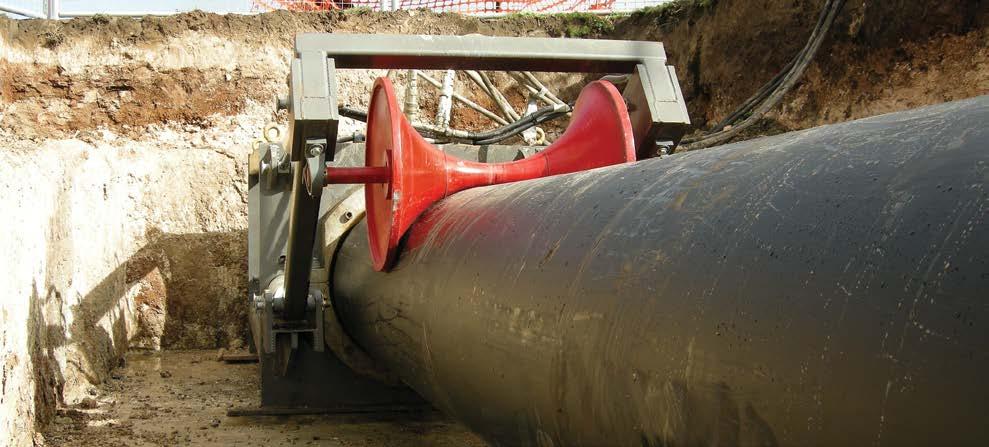
Australia’s gas distribution network has depended more on plastic pipe systems than any other material for many years. The story is similar for water and wastewater utilities – they now primarily use plastic pipe systems to deliver clean drinking water and safely remove wastewater. The electrical cables buried in your street are protected by a polyethylene or PVC conduit, as are the communications utilities. And it’s not just the urban utilities that take advantage of plastics. In rural and regional Australia plastics are also the material of choice for irrigation projects, and stock and domestic networks such as the 8,500km Wimmera Mallee Pipeline System.
There are a variety of plastic materials to choose from and each possesses different material properties which can be used to determine which best suits any given application. The materials commonly found in pipe and conduit systems for utilities are polyvinyl chloride (PVC), polyethylene (PE) and polypropylene (PP). Before discussing where each of these materials is used, one common aspect must be addressed – sustainability.
The more we study the life cycle of materials the clearer it becomes that plastics are genuinely the most
sustainable material for pipelines in comparison with alternatives such as cast iron, steel, copper and concrete. Life cycle analysis (LCA) examines every aspect of the material, from the raw components to the finished product, and can include installation, operation and end-of-life aspects such as recyclability.
LCA’s form the basis for comparing materials and are used extensively in a variety of sustainability rating tools. The Infrastructure Sustainability Council of Australia’s rating tool and Green Building Council of Australia’s Green Star tool both use LCA’s as key elements in their rating systems. LCA comparisons between plastics and alternative pipe materials show that plastic pipe systems consistently outperform other materials. Peerreviewed studies completed in Australia and Europe which assessed the life cycle of drainage and pressure pipes also found that plastics were by far the best performers (see references).
While many would expect PE and PP to outperform the alternative pipe materials in terms of sustainability, some may be surprised to learn that PVC does exactly the same. Many misconceptions about PVC pipe remain, some of which we will dispel here. PVC pipe contains no plasticisers (including phthalates). In Australia
PVC pipe contains no heavy metal stabilisers (i.e. lead), as mandated in Australian product standards for PVC pipe — the only national product standards for PVC pipe to do so. The Australian plastic pipe industry is committed to responsible sourcing, manufacture and recycling of PVC. Our industry has embedded the Best Environmental Practice (BEP) requirements developed by the Green Building Council in the Australian product standards to make compliance, procurement and identification simpler and more effective. All the raw material requirements and waste management improvements involved in the BEP requirements are certified by independent third party certification bodies.
Australia is one of the major developers and users of oriented PVC pressure pipe (PVCO), which uses less than half the raw material to achieve the same pressure capability in comparison with PVCU pressure pipe, which still forms the basis of pressure pipe in the US. PVCO also has significantly improved fatigue and impact resistance over the standard PVCU material, resulting in better overall performance. In terms of nonpressure pipe in Australia, the industry utilises material efficient multilayer and
68
PIPE & CONDUIT
SWAGELINING A WATER PIPELINE USING POLYETHYLENE IN ADELAIDE
structured wall pipe and conduits to achieve a 20-30 per cent reduction in material usage while maintaining the same operational performance and life expectancy as traditional PVC pipes. In short, we do much more with less.
When it comes to recycling, all the common plastic pipe systems PVC, PE and PP are readily recycled and are being recycled now. Almost all post-industrial waste is recycled and we are also recycling post-consumer pipe waste. For example, over 650 tonnes of post-consumer PVC pipe, mostly sourced from demolition sites or construction waste, was recycled by the industry last year. Due to the nature of the material and the innovative product range the recyclate is used to manufacture new pipe with the same life and performance expectations as pipe made from virgin material. Not only does plastic pipe connect Australia, it is also very much part of the recycling process.
PIPA has worked with key environment groups such as the Green Building Council of Australia (GBCA). Romilly Madew, Chief Executive of the GBCA, recently used work done with PIPA as an example of a collaborative success story in the green building sector. In an article she wrote for the GBCA Newsletter in August Ms Madew said, “The trust and transparency developed during the process of collaborating with PIPA gave us the confidence to make some significant changes, as well as the opportunity to examine our industry in a way not thought possible.” These comments were in the context of the development of Best Environmental Practice PVC, and highlight how effective our collaboration has been, and continues to be, with the GBCA.
There is so much emphasis on sustainability today because it underpins the plastic pipe industry’s relationships and credibility with our stakeholders, the most important of which is the broader community. While our achievements are considerable and measurable, we are committed to making further improvements wherever and whenever possible.
It makes sense to start with the most commonly used engineering plastic for pipe applications – PVC. PVC has been used for infrastructure pipes in Australia for around 50 years in both pressure and non-pressure applications. PVC is the best performing pressure water pipe system in the country – based on CSIRO analysis of performance data from the Australian water agencies. PVC is also the most commonly used material for sewer and drainage pipe systems. In all these applications PVC pipes’ resistance to the corrosive effects of the soil they are buried in, and the effects of the water and wastewater they transport are key elements to their success. Combine this with structural integrity and a simple, effective jointing system and you can appreciate why these systems perform so well.
PVC also finds major applications in buried electrical and communications networks where its insulating properties, simple installation and rugged performance make it an attractive option for the conduits protecting electrical supply networks and communications cabling.
PE is another engineering plastic commonly used for pipe in utility applications. Most of the PE pipe in Australia is used for pressure applications in water, wastewater, gas distribution and gas gathering. PE is also commonly used for electrical and communication conduits. Whilst PE is often installed in traditional open trench conditions, the welded joint system and the ability to produce it in long coils means PE systems are well suited to trenchless installation methods like directional drilling and sliplining. These long continuous lengths also enable the use of innovative installation methods such as plough-in. Trenchless techniques are increasingly favoured
ABOUT PIPA
by utilities, not only because of their cost advantages but because their small construction footprint generally minimises disruption to traffic and pedestrian access, in addition to reducing impact on the environment.
Finally there is PP, which is used primarily for non-pressure applications like sewer and stormwater drainage by Australian utilities. The attraction of PP systems stems from their light weight, simple and effective jointing and excellent corrosion resistance.
Put simply, plastic pipe and conduit are an integral part of Australia’s utility infrastructure.
References
1. Adaptation of the USGBC TSAC Report for Relevance to Australian DWV Pipe, Nigel Howard, Branz 2008.
2. A suite of Environmental Product Declarations commissioned by TEPPFA and undertaken by independent group the Flemish Institute for Technological Research (VITO) to measure the environmental footprint of various plastic pipe systems based on life-cycle assessment. The work was validated by the Denkstatt sustainability consultancy in Austria. Those most relevant to infrastructure pipe options in Australia are:
• Polyethylene pipe systems for water distribution (PE);
• Bi-oriented Polyvinylchloride MRS 45 MPa pipe system for water distribution (PVC-O MRS 45 MPa).
• PVC solid-wall sewer pipe systems for drainage and sewage (PVC solid wall);
• Polyvinylchloride multilayer sewer pipe system with a foamed core (PVC Multilayer Foam);
• Polyvinylchloride (PVC-U) multilayer sewer pipe system with a core of foam and recyclates (PVC Multilayer Foam + Recyclates);
• Polypropylene structured (twin) wall sewer pipe system (PP sewer twin wall).
The Plastics Industry Pipe Association of Australia – PIPA – is the peak industry body representing the interests of Australia’s plastics pipes, fittings and raw material suppliers. It promotes the correct use and installation of safe and environmentally responsible plastics pipe systems. Details about any of these systems and links to the companies that supply them can be found on the PIPA website: www.pipa.com.au/
69
PIPE APPLICATIONS
PIPE & CONDUIT
MAKING LINKAGES THAT MATTER
As the stormwater industry evolves to meet the needs of modern society, the industry is gaining a better understanding of how actions downstream can have major environmental impacts upstream – leading to a considered approach to managing the impacts of urban runoff.
What do Melbourne’s Royal Botanic Gardens and the Great Barrier Reef have in common? Of course there’s the tourism dollar that each attraction brings to its respective state; but there’s actually another strange connection that links with the way we should be managing run-off impacted by human activities.
Each year many of the eels that make the Botanic Gardens their home set off on a long journey back to their spawning grounds in the Coral Sea to lay their eggs. Like many migratory spawning sea creatures the adults never return, but the young elvers, once hatched, spend the early parts of their lives in the protection of the coral nurseries before returning to river
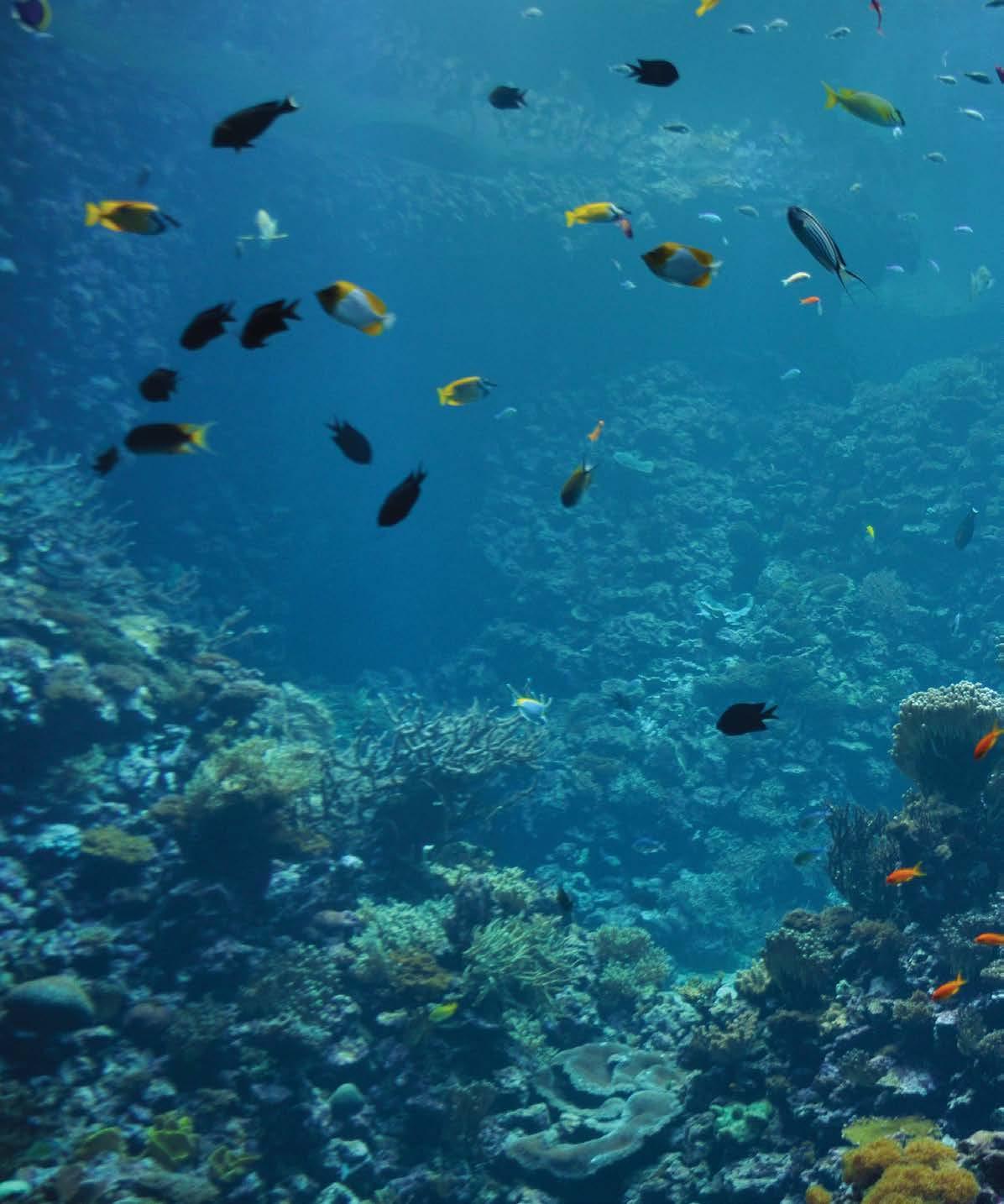
basins around the country.
Prior to European settlement the eels were an important source of food for Aboriginal people; often important ceremonial gatherings were held after annual flooding events where eels were directed into billabongs and waterholes by stone weir traps and the floodwaters receded.
In the Coral Sea, the Great Barrier Reef is a world-renowned attraction that is worth literally billions of dollars to the Australian economy through tourism. Coral reefs located many kilometres off the coast close to the Australian continental shelf abound in a spectacular display of colourful corals and fish that is amongst the best in the world. A unique ecosystem, many of the fish species spend different
70 STORMWATER
parts of their life-cycle in open ocean, the coral reefs, shallow seagrasses, estuarine mangrove areas, and even many kilometres inland.
With governments around the country gearing up to embark on a period of infrastructure growth that is intended to increase the country’s productivity and support economic growth, it will be important to make sure this does not come at an untenable cost to our country’s natural capital.
In addition, the focus on infrastructure does little to resolve the insidious environmental creep that occurs through unfettered development in urban areas. With a significant growth in Australia’s population post World War II, many would be able to remember walking creeks and streams
in urban fringe areas, catching tadpoles and yabbies and even spotting the occasional platypus. Through this same period we saw a move to engineering approaches to drainage which aimed to convey nuisance waters quickly and efficiently away from urban settlements.
The paradigm for the modern stormwater professional is different. Rather than trying to control nature we try to mimic it. Recognising that the impacts can be felt far beyond a project of immediate focus there are challenging intellectual and technical conundrums that need to be resolved to ensure a balanced amenity and environmental outcome can be achieved.
Many would appreciate the fact

that decisions taken today have the potential to impact through the ages. The country to which the first Australians connect has been significantly impacted by development, just as many of the places we remember from yesteryear have been changed through urban expansion.
As we embark on what may be remembered as the infrastructure decade we should be mindful of our impacts, and look to ensure that the underpinning ecological functions of our landscapes are maintained. Good and bad outcomes have the potential to resonate many times over, and nowhere is the mantra ‘think globally, act locally’ more relevant than in managing the impacts of urban run-off which is generated where it falls.
71 STORMWATER
WOMEN IN UTILITIES
JULIA JOHNS PROJECT ENGINEER, CITY WEST WATER
In this edition of Utility, we bring you the first in a series of interviews with women working in the utility sector. In our first profile of women who are making a name for themselves in the industry, we meet Julia Johns, a Project Engineer at City West Water.
Julia began her career at a consultancy in the UK, where she initially trained as a hydraulic modeller. In this role, Julia was involved in a number of projects won from the local water authority. Following a downturn in work, Julia was transferred to the highways department, where she worked in the design team. Shortly into this move Julia was sent on a secondment to the Highways Agency to help get a significant project through a number of stage gate reviews. It was after this project that Julia made the move to Australia, where she began contracting for VicRoads and from there moved to City West Water.
Can you tell us about your current role at City West Water?
I am currently working with the commissioning team at the West Werribee Salt Reduction Plant during its final stages of construction. This plant is a new treatment facility which will provide recycled water from the Melbourne Water Western Treatment Plant and supply it to residential properties and recreational areas in the newly developing suburbs to the west of Melbourne.
How did you get your start in the utility sector?
I found the hydraulic aspects of my degree interesting and so opted to carry out a related dissertation, which in turn led me towards my first job in the water industry.
What are the main things you enjoy about working in the utility sector?
In City West Water I enjoy the variety of work that we carry out. I have been lucky enough to get involved in a number of areas of the Engineering Department. I get a sense of satisfaction knowing that we provide such a vital service to our customers which affects their everyday life.
What are some of the main challenges involved in working in the utility sector?
Due to the vital service provided, it is essential to maintain good service levels. The main challenge is balancing the work required to enable the required service levels to be met, whilst creating minimal disruptions to the customers and ensuring value for money.
What are some of the main challenges facing City West Water at the moment? What opportunities will arise from these challenges?
Currently City West Water is undergoing a ‘Fairer Water Bills’ review – which is an initiative to ensure customers are getting the best rates possible. This will result in the need to identify ways to get more value added for the work we do. These challenges should encourage more forward-thinking and efficient processes, making use of technology, and for City West Water, a chance to be at the forefront of the water industry.
Can you tell us about some of the mentors you have had throughout your career?
I have been very lucky in that I have had someone that I can call a mentor in each of my roles. Each time I have been ‘taken under the wing’ by someone that is passionate about their work with a wealth of experience to share. These mentors range from the ‘old school’ engineer who preferred to do hand calculations rather than embrace technology, to the highly focused, driven technophile.
Can you tell us about some of the women who have inspired you by their work in the utility sector?
Honestly I haven’t come across a large number of women in the utility sector so far; however those that I am familiar with are all inspirational in certain ways. They all seem to have similar characteristics in that they are strong, very hardworking and seem to be very knowledgeable in their areas of expertise. These are all characteristics which I hold in high regard.
You are relatively new to the water industry in Australia, but you have also worked in the roads sector in the UK. How do the two compare? Can you tell us a bit about the aspects of each industry that you enjoyed most and least?
In my experience, they are both very similar. Having worked in the water industry and the highways sector in both the UK and Australia, the only real differences that I have noticed is the more relaxed and friendly atmosphere
72
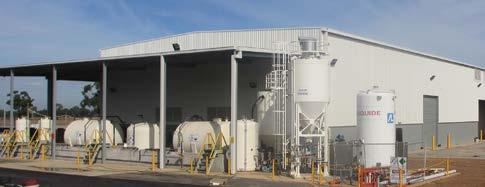
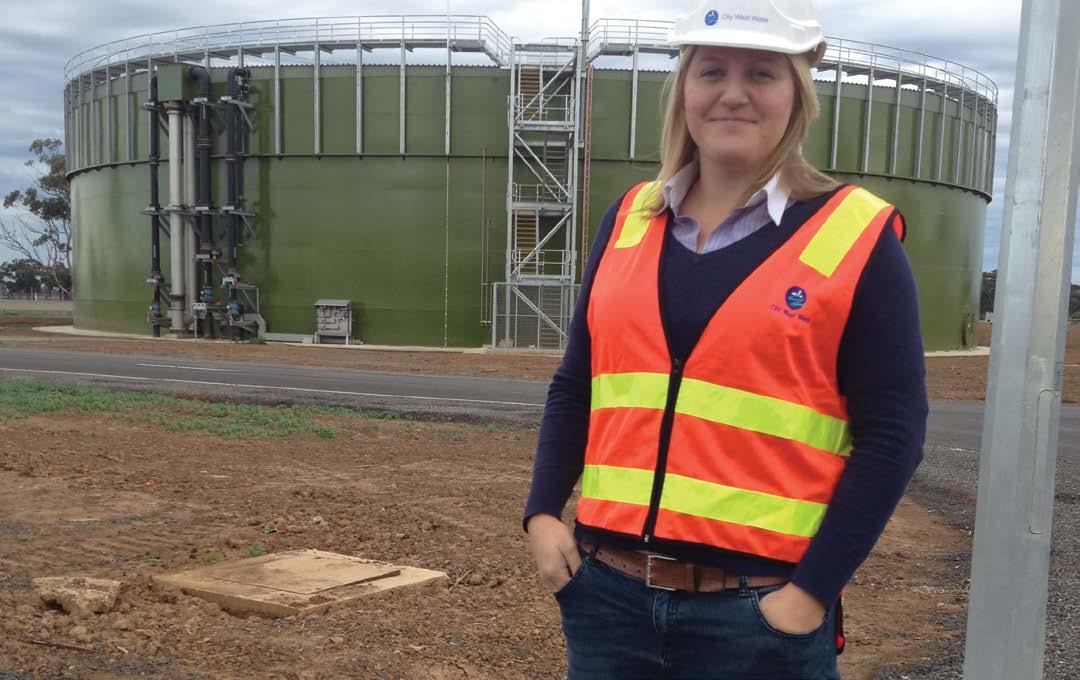
in Australia. In terms of industry comparison, I believe that the water industry has devoted more to innovation and development than what I have experienced in the highways sector. For example, the Water Services Association of Australia always has improvement programs underway, with a large proportion of the water industry actively participating. I value being part of an industry that is always striving to improve.
Can you give us some insight into your experience working in such male-dominated sectors – have there been any particular challenges that you have had to overcome?
In the past I have felt that I have not been taken as seriously as my male counterparts. However, I feel that on the whole I have probably gained more opportunities due to my gender. Occasionally I have noticed a change in attitude due to the presence of a female, particularly with subcontractors, and this is most often a courteous improvement.
Do you see yourself continuing to work in the water or other utility sectors?
Whilst I do enjoy variety and a new challenge, I believe that there are plenty of opportunities and new challenges within the water industry itself. I feel committed to the industry and hope to contribute to its future development.
Can you provide a bit of background on your life outside of work – any hobbies or interests you care to mention? Any activities you enjoy to balance the demands of a challenging professional life?
I enjoy all sports, anything with some competition to it! I have been playing hockey for a number of years now – it is an exhilarating team sport with great stress-relieving qualities. In addition to this I do enjoy travelling and seeing new places around the world.
JULIA’S CURRENT FOCUS –WEST WERRIBEE SALT REDUCTION PLANT
The West Werribee Salt Reduction Plant is part of the West Werribee Dual Water Supply Project, which will deliver high quality, Class A recycled water and drinking water to housing estates in the Werribee area, to Melbourne’s west as well as to a number of open spaces managed by Wyndham City Council.
The recycled water will come from Melbourne Water’s Western Treatment Plant, where it will be further treated and sent to homes and open spaces in the Werribee area through a dedicated recycled water system.
In the early stages of the West Werribee project, it was determined that the wastewater from the Western Treatment Plant contained too much salt and was therefore not suitable for irrigation use. As a result, the project required the addition of a new salt reduction plant at the Werribee Treatment Plant site.
Construction of the salt reduction plant is now nearing completion and commissioning of the plant recently started.
73
JULIA JOHNS.
WOMEN IN UTILITIES

FIBRE COPPER: AND
It’s time to zoom in and take a closer look at the some of the technology being used in the construction of the National Broadband Network. In order to understand the differences between the various types of cables and connections used in the multi-technology rollout, we get into the nitty gritty of how they work and what role they will play.
NBN
CONNECTING END USERS TO THE NBN
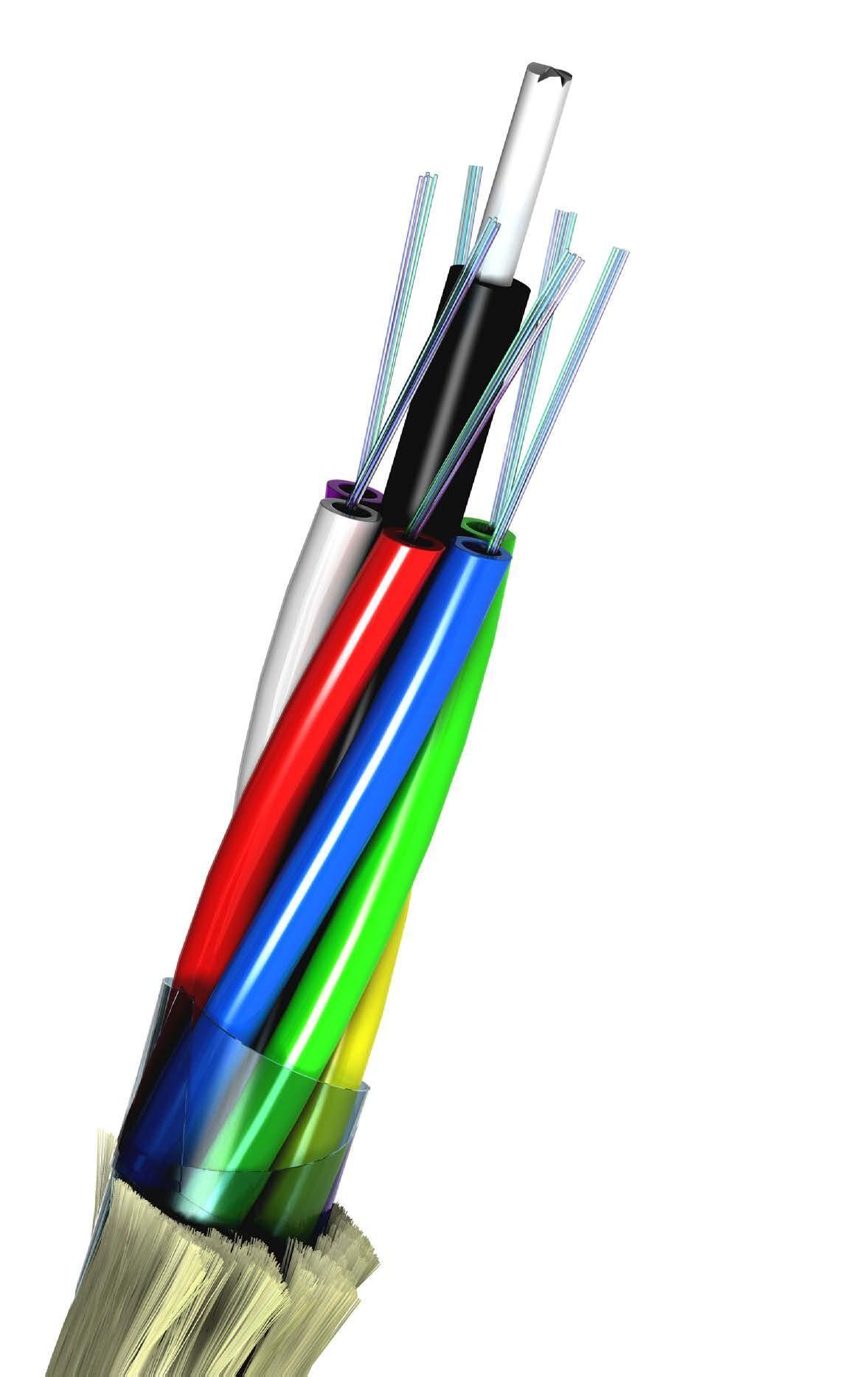
A MULTI-TECHNOLOGY MIX
The mixed-technology NBN rollout ordered by the Federal Government in April 2014 allows NBN Co to choose the technology and infrastructure used in each area, as long as it conforms to a number of criteria. The rollout must provide a download speed of at least 25 megabits per second (Mbps) to all premises and 50Mbps to 90 per cent of premises and be delivered within the constraints of a public equity capital limit of $29.5 billion.
In addition to the expansion of the fibre network footprint, the mixed-technology rollout will involve the extension of the satellite, hybrid fibre coaxial (HFC) cable and fixed wireless programs to areas outside the fibre footprint.
CURRENT BROADBAND SPEEDS
The Government’s 2013 Broadband Availability and Quality: Summary Report provided a detailed spatial analysis of the coverage and quality of existing broadband customer access networks across Australia. As a measure of quality the analysis estimated the possible achievable speeds given known constraints.
The reported stated, “Broadband services are delivered using a range of technologies to homes and businesses
across the country. The infrastructure most often used to provide broadband includes asymmetric digital subscriber line (ADSL) technology over the copper access network, the 3G and 4G mobile networks, HFC networks originally rolled out for subscription television, fibre-to-the-node (FTTN) networks and fibre-to-the-premises (FTTP) networks. In addition to these terrestrial networks, all Australian premises are covered by satellite broadband networks.“
The key findings included:
• 9.9 million premises (91 per cent) have access to fixed line broadband services delivered via digital subscriber line technology.
• 3.1 million premises (28 per cent) have access to a high speed broadband platform, including FTTN networks, HFC networks and fixed wireless networks.
• 8.8 million premises (81 per cent) have access to 3G mobile broadband services and 6.4 million premises (59 per cent) have access to 4G services.
• 1.4 million premises (13 per cent) across Australia are in areas where less than 40 per cent of premises can access a fixed broadband service.
• 3.1 million premises (28 per cent) have access to peak download speeds of between 25Mbps to 110Mbps.
NBN
• 7.1 million premises (65 per cent) are in areas that have access to peak median download speeds of less than 24Mbps over the copper network.
• 700,000 premises (six per cent) are unable to get access to a fixed broadband service.
• Of the premises with access to xDSL broadband services over copper, 3.7 million of these are located in areas with an estimated peak median download speed of less than 9Mbps, and 920,000 have an estimated peak median download speed of less than 4.8Mbps.
Therefore, for the majority of Australians, the minimum 25Mbps speeds to be offered by the NBN should be a vast improvement on their existing connection.
CONTRASTING FIBRE OPTIC CABLE AND COPPER
The largest component of the NBN rollout is the construction of the fibre network, which will replace much of the existing copper-based telecommunications network. This includes replacing the existing copper cables with fibre optic cable, either all the way to the premises for an FTTP connection; to a node servicing an area for an FTTN connection; or to the boundary of a building for a fibre-to-thebuilding/basement (FTTB) connection. In the case of FTTN and FTTB, the final connection to each premise is made via non-optical means such as the existing copper connection, twisted pairs or wireless.
Both newer fibre optic technology and older copper based cables have an important role to play in the revised NBN rollout. Much of the discussion surrounding the NBN rollout has focused on the far superior data transfer speeds offered by fibre optic cable compared to copper. But why is fibre optic technology faster? What are the main differences between the two? In the end it primarily comes down to the material from which the cables are made and how they transfer
information.
Traditional copper wires transfer data in the form of electrical currents, while fibre optic cables transfer information as pulses of light, which are then converted back into electrical information at the end of the line. The amount of data that can be transferred per unit of time is known as the ‘throughput’ and is determined by the bandwidth, the range of frequencies that the cable can carry. The higher the bandwidth the more data can be transferred at a given time.
Fibre optic cables have a much higher bandwidth than copper cables and therefore can transfer information faster and over longer distances. Typically fibre cable bandwidth is cited at around ten times that of copper coaxial cable in a similar system and much higher speeds have been recorded. However, it must be stated that the actual upload or download speed experienced by the end user is also heavily dependent on the equipment at each end of the fibre and a variety of other variables.
Fibre optic cable can carry higher frequency ranges than copper without degradation and can carry signals for around 200km without losing quality. Copper cables, on the other hand, begin to lose signal strength over relatively short distances. Due to the difference in the type of signal being transferred (light versus electrical), fibre optic technology is also less susceptible to electromagnetic interference.
These advantages provide the rationale for many developed countries choosing to transition their telecommunications infrastructure to a primarily fibre-based network.
Fibre optic technology also looks set to keep improving into the future. For instance, it is likely that higher quality glass will offer even further improvements in data transfer speeds. Copper networks have also been augmented over the years to improve their throughput, although they rarely reach comparable speeds.
IN THE NBN
The fibre optic network will be connected to premises in a number of different ways throughout the fixed fibre footprint of the revised NBN. As mentioned the primary connection types will be FTTP, FTTN and FTTB.
In an FTTN connection the fibre optic network terminates at a self-contained node servicing each area and the remaining distance to each premise is covered by non-optical means, such as the existing copper connection. This type of connection is currently being trialled by NBN Co and is expected to be rolled out extensively within the fixed fibre footprint.
Using FTTP technology, the primary connection type of the former government’s NBN rollout plan, each premises is directly connected to the network via optic fibre. This type of connection will still be used in the revised rollout plan for new developments or where the rollout has progressed too far to make utilising the existing copper infrastructure viable. According to NBN Co CEO Bill Morrow, this connection type will also be used by the company to connect buildings in potentially profitable areas as part of the company’s plan to counter TPG’s rival FTTB rollout, until NBN Co’s own FTTB product is ready. (For more information on FTTB and infrastructure competition, see The Race to the Basement in the May 2014 issue of Utility.)
FTTB connections involve fibre optic cable extending to the boundary of a building, such as the basement of a large apartment building. The final connection to each premises inside the building is made via non-optical means. This type of connection is currently being trialled by NBN Co and may be used to connect large buildings in the revised rollout.
Therefore, while much of the copper network will be replaced, copper will likely still play a vital role in a mixed-technology rollout, bridging the gaps between the fibre network nodes and each premises for FTTN connections and possibly connecting some premises in FTTB
76
COPPER
THE ROLE OF FIBRE AND
NBN
connections. Australia’s copper-based telecommunications network is currently owned by Telstra, and NBN Co is negotiating a contract with the company for access to its infrastructure.
Due to the higher bandwidth of fibre optic cables, generally, the closer the fibre optic cable comes to each premises, the greater the download and upload speeds. Therefore, FTTP has the fastest potential download speeds at around 1,000Mbps.
Preliminary trials of FTTB have reached download speeds of around 108Mbps and upload speeds of 48Mbps, and initial trials of FTTN using the existing copper network have been reported to deliver download speeds up to 105Mbps and upload speeds of up to 45Mbps.
Due to the difference in potential data transfer speeds between fibre and copper, the speeds of FTTN connections (and FTTB connections utilising the copper infrastructure) will be limited by the data transfer speeds obtainable over the copper. Premises closer to the node (where less distance must be covered by copper) are likely to receive greater speeds than those further away, while premises connected by FTTP technology may have significantly greater speeds overall. FTTP speeds may also continue to rise as upgrades require only the replacement of the equipment at each end of the fibre and not the fibre itself. High speed broadband network rollouts overseas suggest that the FTTN connections may eventually need to be replaced with FTTP connections as data volume increases into the future.
Three main contractors provide the fibre optic cable and passive equipment for the NBN project.
In 2011, NBN Co awarded a major contract for the supply of fibre optic cables to Prysmian Telecom Cables & Systems Australia, a global manufacturer of telecommunications cabling with manufacturing facilities in Dee Why and Liverpool, NSW. The contract was valued at up to $300 million over five years, with an initial purchase order of $150 million. The
cables provided included a wide range of ribbon and multi-fibre communication cables including termite resistant, rodent-proof and high strength cables.
NBN Co also secured a commitment from Prysmian to source approximately 80 per cent of the value of its contract with NBN Co in Australia. As a result Prysmian invested approximately $11 million in expanding its cable plant in Dee Why on new equipment to manufacture specialised ‘ribbon’ cable locally, and to expand its cable sheathing operations. Ribbon cable involves twelve individual fibres being spliced together at once, allowing faster and easier installation and maintenance, and saving space in comparison to splicing each fibre individually. This type of cable was used in Australia for the first time for the NBN project. All the rodent proof and high strength cables are manufactured in the Australian plants.
Despite the change of government and revised rollout plan involving less FTTP connections, Prysmian specialist fibre optic cables will be installed underground in up to 80 per cent of suburban Australia in NSW, QLD, the NT, WA and the ACT.
Victorian fibre optic equipment manufacturer Warren & Brown Technologies was also awarded an equipment contract worth up to $110 million over five years to provide optical distribution frames and sub-racks to connect NBN Co’s equipment to external cabling. These products require sheet metal manufacture and assembly of fibre optic connectors. It is not yet clear if or how this contract may be renegotiated with the revised rollout requiring less FTTP infrastructure.
NBN Co also awarded a contract for multiple types of equipment (including street side fibre distribution hubs) worth up to $1.2 billion over five years to Corning, a world leader in the manufacture of fibre optic cabling. In 2013, Corning opened a new facility at their Clayton site, as part of a $40 million local investment in additional local production capacity.

LOOKING AHEAD
All in all, fibre optic technology looks set to continue to evolve into the future and pave the way for future innovation. The revised NBN project, utilising both copper and fibre optic cable, represents a merging of old and new technology. While the final shape of the NBN is yet to be seen, it will almost certainly incorporate a variety of different connection types, the final speeds of which will be determined by a number of factors. Not the least of these will be the key attributes of the copper and fibre cables used.
Note: Every effort was taken to ensure the information presented in this article was accurate at the time of writing. However, due to the nature of the subject matter, unanticipated changes could occur.
77
NBN
The utility industry is regularly required to call on an enormous and varied range of specialists; from mapping, to drilling, to wastewater treatment, to asset management, to pipe relining, to pipeline integrity, to land access, to risk management, and the list goes on. To make the process a little easier, Utility magazine is bringing together experts from various fields to answer your questions.
MICROTUNNELLING
The latest expert to join the our panel of experts is global microtunnelling pioneer Stuart Harrison. Stuart is currently the Managing Director of Edge Underground, where he specialises in on-grade microtunnelling installations with millimetre accuracy. Stuart is also the inventor of the Axis Guided Boring System, and he is constantly working to improve the effectiveness of this and other trenchless systems used in the installation of gravity sewers.
HOW DOES MICROTUNNELLING COMPARE TO OTHER TRENCHLESS INSTALLATION METHODS?
There are a number of trenchless installation methods available today, and they vary in terms of their methodology and the accuracy that can be achieved. I’ll start by explaining some of the differences between methodologies, then look at the differences in accuracy that can be obtained.
The first major defining detail for trenchless installation techniques is whether the technique is pit/shaft launched or surface launched.
The three most common types of pit/shaft launched technologies are microtunnelling, thrust boring (also known as auger boring) and bed boring.
Microtunneling is the top of the tree when it to comes to accuracy. These machines typically run high-end guidance systems with live monitoring so that the operator can correct in real time to ensure an accurate installation.
Microtunneling systems are typically capable of installations +/-25mm with common accuracy of +/-10mm. Please note this accuracy is a measurement from design line.
Thrust boring systems have
traditionally been unguided. For an unguided machine manufacturers state an accuracy of one per cent, i.e. over 100m, less than 1m deviation. In more recent times we have seen a number of steered methods applied with varied levels of success. There is currently potential for these machines to achieve fine tolerance, however at this point there is still quite mixed results.
Bed boring is traditionally an unguided technology utilised for short shots up to 25m. The accuracy would depend upon the accuracy of set-up, consistency of the ground and the operator’s feel for drilling. In more recent times we are seeing pit launched horizontal directional drilling (HDD) and bed borers being combined to try and give greater accuracy over longer distances.
The main surface launched technology is HDD. When completing a surface launched HDD installation, a setback area is also required from which a team can set up for the installation.
Shaft launched technologies are fundamentally very rigid, both in machinery and tooling. Surface launched technologies such as HDD need to be flexible in order to flatten out to horizontal and to navigate bends.

The consequence of a rigid versus flexible system is that one is wanting to go straight by design, whilst the other is wanting to flex. These differences can be balanced by a number of factors, including the steering system used, guidance system used, the ground conditions and the operator’s competency.
HDD rigs are run in conjunction with a range of systems to assist accuracy. Most common is a walk over system with senders and receivers. These systems show depth, pitch (angle) and a clock face (for steer direction). The manufacturers of the guidance systems state an accuracy of 5-10 per cent. With this in mind, at 3 m deep the manufacturers are stating a possible error of +/-150-300mm. In the field +/-100mm is often possible depending on ground and operators.
In coming issues, we will feature experts in HDD. If you have questions you’d like answered on these technologies, send them to expert@utilitymagazine.com.au.
78
GLOBAL NAVIGATION SATELLITE SYSTEMS
HOW QUICKLY SHOULD A GPS RECEIVER ACHIEVE A REAL TIME KINEMATIC (RTK) SOLUTION –WITH CENTIMETRE ACCURACY?
Peter, Brisbane
GNSS expert Evan Bollard says:
This is the proverbial ‘how long is a piece of string’ question. Based on my experience, it depends on the type of equipment being used. In general terms the first thing is that the receiver must be capable of carrier phase observations and be looking to fix the integer ambiguity of the carrier wave for each signal to each satellite that is being observed. (As we are only considering RTK fixed solutions in this case.) This type of equipment is often termed survey or professional grade.
Generally, the performance and cost increase as you move to the bottom right of the table (see table above).
To simplify: the ‘matching’ base station (meaning similar, or better, configuration, compared to the rover) is in a clear location with no restrictions (as should be the goal with all base stations, whether temporary or fixed – we are also not considering moving base stations in this response). This is stated as, in any RTK solution the base station or network of base stations is very relevant to the solution provided at the roving receiver. As an example, if a rover unit was in an open sky environment and was using a poorly sited base station, then an RTK fixed solution might never be possible no matter what type of roving receiver was being deployed.
The next factor to consider is the number of frequencies used by the system. If it is a single frequency, single constellation receiver, some can produce reliable RTK fixed solutions in periods of 1 to 10 minutes depending on the environment the roving receiver is being used in. When in an open sky environment with no multipath (reflected signals) and sufficient satellites (between seven and nine) with a suitable positional dilution of precision (PDOP, <4) you will be closer to the lower end of the initialisation times. In a restricted
environment (around buildings, trees, high multipath) or a lower number of satellites (minimum five) then the initialisation may take quite a bit longer and is likely not to be achievable at all in difficult circumstances. Baseline lengths (the distance from the base to the rover) should be less than 10 km for this outline to apply in the case of single frequency.
With dual frequency receivers the first advantage is that the RTK fixed solution is achieved faster than for single frequency – in an open environment this can be from about 10 seconds to 1 minute. Next the baseline length can be much greater (30 to 40km) as when using a dual frequency configuration propagation variations of the various signals can be more effectively modelled and corrected. Although the length of this baseline will impact on the speed of initialisation – as a general rule the longer the baseline, the longer the initialisation time.
Triple frequency receivers will have the advantage of different combinations to resolve the integer ambiguities when sufficient satellites provide these signals. This will lead to faster initialisations and more robust solutions. As yet these signals are not available on most satellites or there are no published details for the third frequency signal that does exist (such as the BeiDou B3 signal).
Next, the use of more than one constellation of satellites can greatly enhance performance in any sort of restricted environment. For single, dual or triple frequency receivers the
About Evan Bollard
addition of one or more extra satellite constellations allows the number and type of observations to increase and hence faster initialisation and better robustness for any solution. Using a dual frequency dual constellation receiver in open conditions initialisation should be around 10 seconds at baseline lengths up to about 20 km.
With multi-constellation, multi-frequency receivers virtually instantaneous initialisation is possible in an open environment. On heavily restricted sites caused by obstructions, provided sufficient satellites with an acceptable PDOP are available, reliable robust RTK solutions can be determined which are not possible with lower level receivers.
When using an RTK network based solution for base station information, it is possible to get faster initialisations due to the advanced modelling of signal propagation variations associated with longer baseline lengths. Although there are many methodologies for network base station data provision, generally the intention is to provide corrections for a location close to the rover receiver, in essence making the baseline as short as practical. This also allows rover receiver operation at much larger distances from physical base stations without a significant degradation in performance.
In general, more satellites, and more signals, from a closer or network base station lead to faster and more reliable, robust RTK fixed solutions.
Evan Bollard is a GNSS Solutions Specialist with GlobalPOS and has over 30 years of experience in the specification, implementation and use of GNSS equipment in all types of high accuracy applications, both real time and post processed.
Open sky ballpark performances (baseline less than 10 km) Single constellation (eg GPS) Dual constellation (eg GPS/Glonass) Multi constellation (eg GPS/Glonass/ Galileo/ BeiDou) Single frequency 1-10 minutes 30 seconds to 5 minutes Under 3 minutes Dual frequency 10 seconds to 1 minute 10 seconds 1 second Triple/multi frequency To be determined 1 second <1 second TYPE OF EQUIPMENT AND BALLPARK PERFORMANCE
79
NOVEMBER 2014
FEBRUARY 2015
MAY 2015
AUGUST 2015




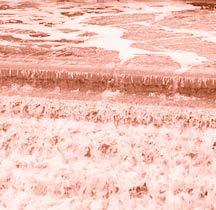
MAJOR FEATURES DEMAND MANAGEMENT ENERGY NETWORKS AND DISTRIBUTION COAL SEAM GAS WATER RECYCLING SPECIAL FOCUS INSPECTION, CCTV AND CONDITION ASSESSMENT MAPPING, GIS & SURVEYING M2M VEGETATION MANAGEMENT EQUIPMENT & MACHINERY SMART METERS COMMUNICATIONS DEVICES TRENCHERS MICROTUNNELLING
MAJOR FEATURES STORMWATER RENEWABLES ASSET MANAGEMENT RETAIL, BILLING AND CRM SPECIAL FOCUS SCADA, CONTROL SYSTEMS, IT AND SOFTWARE WASTEWATER TREATMENT PIPE RELINING DRAIN CLEANING WASTE MANAGEMENT EQUIPMENT & MACHINERY PIPE & CONDUIT CABLES EXCAVATORS VACUUM EXCAVATION AND NON-DESTRUCTIVE DIGGING
MAJOR FEATURES DESALINATION GAS PIPELINES SMART GRIDS ENERGY EFFICIENCY SPECIAL FOCUS LAND ACCESS AND RIGHT-OF-WAY TRANSFORMERS AND SUSBSTATIONS PIPELINE INTEGRITY, COATINGS, CATHODIC PROTECTION LEAK DETECTION EQUIPMENT & MACHINERY PUMPS, VALVES, COMPRESSORS AND FILTERS EQUIPMENT RENTAL ATTACHMENTS AND BUCKETS HORIZONTAL DIRECTIONAL DRILLING (HDD)
MAJOR FEATURES SOLAR DAMS SAFETY SUSTAINABILITY BIG DATA SPECIAL FOCUS UTILITY LOCATION TESTING AND MEASUREMENT SEWER REHABILITATION EMBEDDED NETWORKS DISTRIBUTED GENERATION IRRIGATION EQUIPMENT & MACHINERY SWITCHGEAR LASER GRADING CABLE PLOUGHING DRONES Access Detection 43 Aquatec Fluid Systems 63 Austeck OBC Canadian Solar IFC Comdain Infrastructure IBC Cromarty 25 Daly’s Constructions 54-56 Edge Underground 8 Gencom 33 Gentrack Ltd 51 Geomatic Technologies 39 GlobalPOS 17 InterWater 2014 11 Motion Computing 31 Pivotel 29 Plumbing & Pipeline Solutions 37 Stockton Drilling Services 21 Stormwater 2014 41 Taylors 9 Total Drain Cleaning Services 2-3 Vermeer 7 WIOA Bendigo 13
index EDITORIAL SCHEDULE
Advertisers’
SS6 Potable Water Pump Station, Burleigh Heads, Qld
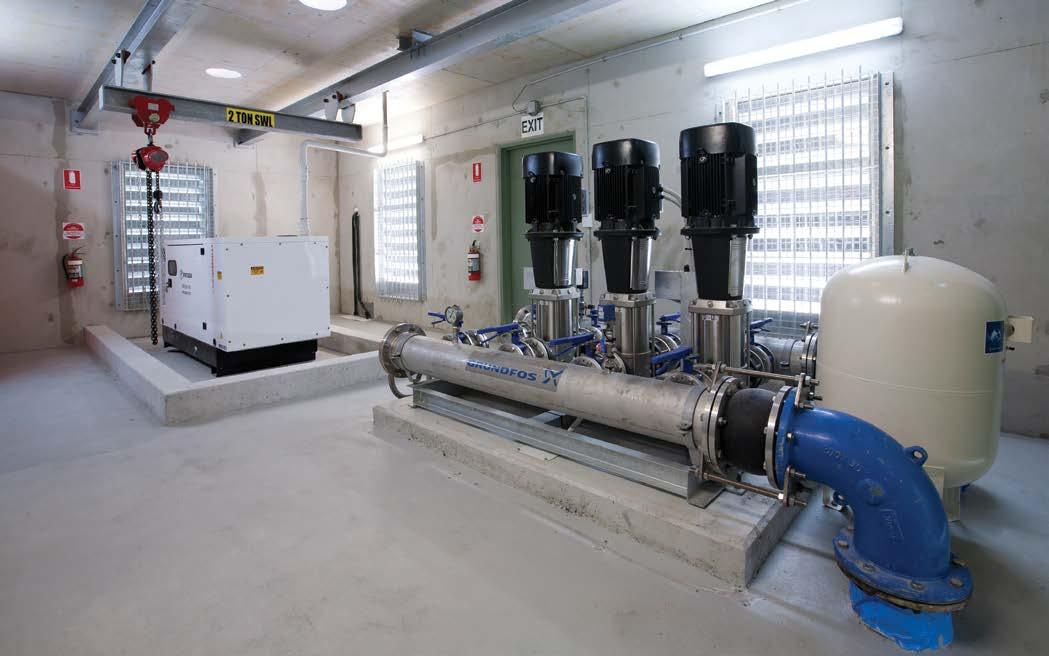
“Peace of mind knowing there is real certainty”
Comdain is a leading infrastructure design, construction and maintenance services business specialising in the Water, Gas and Irrigation sectors.
We deliver our construction and maintenance services safely with professional excellence and best practice in alignment with our core values. Our focus is to deliver reliable, sustainable complex assets the give our clients peace of mind and certainty that they will operate first time every time as required.
Our capabilities include:
Planning & Consultation
Design - Concept, detailed and methodology
Construction - Pipelines, pump stations, treatment plants, structures, facilities, metering and storages
Maintenance - Civil, mechanical and electrical
Control & Monitor - SCADA and telemetry
We deliver our construction and maintenance services safely with professional excellence and best practice in alignment with our core values.
Current & Recent projects:
South East Water (Vic) - Pipes & Structures Program 2013-2018 panel member: D&C of pressure and gravity pipelines, pump stations, treatment plant upgrades, water quality stations, storages and detention tanks.
Queensland Urban Utilities (Qld) - Batch 123, Water Main Renewal at Nerang Rd, Beaudesert: Construction of DN355 PE water main renewal including aerial crossing (inc Design), HDD and pipe jacking.
APA Group (Qld) - Southport Augmentation Project:
Construction of 3.4km High Pressure steel trunk gas main.
Goulburn-Murray Water (Vic) - Hattah Lakes Environmental Flows Project:
Construction of seven 750mm pump columns, a 2100mm RCP, 900mm PE branch pipeline, large regulating structures, penstock gates and levee banks.
APA Networks Insertions Project 2013/14
(Vic & Qld):
Intelligent Doers, Dependable Delivery comdaininfrastructure.com.au
Replacement of over 40km low pressure gas mains through insertion of PE pipe and upgrade of high pressure range from 315kPa to 578kPa.


“Sewer Line Rapid Assessment Tool”
Blockage rating from 0-10 in 3 mins
The SL-RAT is our highly portable onsite assessment tool that provides a sewer line blockage assessment in less than 3 minutes.
• Focus resources where they are needed most
• Assess up to 7km per day
• No flow contact
• No confined space entry
• GPS enabled
• View your Inspections on Google Earth



Contact Austeck for an obligation free Quote & Demonstration
SL-RAT
A 11/77 Bourke Road, Alexandria NSW 2015 W austeck.com E info@austeck.com
287
1800
835
TRANSMITTER RECEIVER BLOCKAGE
















































































 by Danielle Roche
by Danielle Roche

























































